

FIGHT TO SHELTER
10027
(212) 932-7400 / FAX (212) 222-3842
DIRECTORY
EDITORIAL
Executive & Investigative Editor – Damaso Reyes
Damaso.Reyes@AmsterdamNews.com
Managing Editor – Kristin Fayne-Mulroy KFM@AmsterdamNews.com
News Editor – Aaron Foley
Aaron.Foley@AmsterdamNews.com
Digital Editor - Josh Barker
Josh.Barker@AmsterdamNews.com
STAFF WRITERS
Karen Juanita Carrillo
Karen.Carrillo@AmsterdamNews.com
Shannon Chaffers
Shannon.Chaffers@amsterdamnews.com
Ariama C. Long
Ariama.Long@AmsterdamNews.com
Tandy Lau
Tandy.Lau@AmsterdamNews.com
Helina Selemon
Helina.Selemon@AmsterdamNews.com
DISPLAY & DIGITAL ADVERTISING CONSULTANT
William "Bill" Atkins (212) 932-7429
William.Atkins@AmsterdamNews.com
DIGITAL, BRANDED CONTENT & HYBRID ADVERTISING CONSULTANT
Ali Milliner (212) 932-7435
Ali.Milliner@AmsterdamNews.com
LEGAL, LLC & CLASSIFED ADVERTISING CONSULTANT
Shaquana Folks (212) 932-7412
Shaquana.Folks@AmsterdamNews.com
CIRCULATION / SUBSCRIPTION
Benita Darby (212) 932-7453
Benita.Darby@AmsterdamNews.com
The AmsterdamNewsassumes no responsibility for the return of unsolicited manuscripts or photographs. Photographs and manuscripts become the property of The Amsterdam News.
Published weekly. Periodicals Class postage paid at New York, N.Y. POSTMASTER: Send address corrections to NYAmsterdamNews,2340 Frederick Douglass Blvd., New York, NY 10027.
U.S. Territories & Canada weekly subscriptions: 6 months $30.00 1 year $49.99
2 Years $79.99 Foreign subscriptions:
6 Months $40.00
1 year $59.99
2 Years $89.99
International News

It was meant to be a Christian utopia. Now this Nigerian community is helpless against rising seas
By TAIWO ADEBAYO and DAN AKPOYI Associated Press
AYETORO, Nigeria—The coastal Nigerian community of Ayetoro was founded decades ago, meant to be a Christian utopia that would be sinless and classless, and nicknamed “Happy City.” Now, its remaining residents can do little against the rising sea.
Buildings have sunk into the Atlantic Ocean, an increasingly common image along the vulnerable West African coast. Old timber pokes from the waves. Shattered foundations line the shore. Waves break against abandoned electrical poles.
The Mahin mud coast, where the community is slipping away, has lost more than 10 square kilometers, or nearly 60% of its land, to the ocean in the past three decades.
For years, low-lying nations have warned the world about the existential threat of rising seas. Nigeria, Africa’s most populous country, struggles to respond. Some plans to address shoreline protection, including for Ayetoro, have come to nothing in a nation where corruption and mismanagement are widespread.
Prayers against the rising sea are “on the lips of everybody” in the church every Sunday, according to youth leader Thompson Akingboye, but they know the solution will require far more. And even the church has been relocated away from the sea—twice. “The present location is now also threatened, with the sea just 30 meters (98 feet) away,” Akingboye said.
Thousands of people have left. Of those who remain, Stephen Tunlese can only gaze at the remnants of his clothing shop from a distance.
Tunlese said he lost an investment of 8 million naira, or the equivalent of $5,500, to the sea. Now he adapts to a watery future: He repairs canoes.
“I will stay in Ayetoro because this is my father’s land; this is heritage land,” he said.
Researchers studying satellite imagery of Nigeria’s coast say a number of things are contributing to Ayetoro’s disappearance.
Underwater oil drilling is one reason, according to marine geologist Olusegun Dada, a professor at the Federal University of Technology in Akure who has studied years of satellite imagery. As resources are extracted, the ground can sink.
Other reasons include the deforestation of mangroves that help anchor the earth and the erosion caused by ocean waves.
“When we started coming to this community, we used to have fresh water,” Dada said. Today, the freshwater ecosystem is transforming into a salty, marine one.
The transformation is enormously costly in Nigeria. In a 2020 report, the World Bank estimated the cost of coastal degradation in three other coastal Nigerian states—nearby Lagos, Delta, and Cross River—at $9.7 bil-

lion, or more than 2% of the country’s GDP. The report looked at erosion, flooding, mangrove loss, and pollution, and noted the high rate of urbanization.
And yet, dramatic images of coastal communities slipping away only capture Nigeria’s attention from time to time, such as when the annual flooding occurs—another effect of climate change. But Ayetoro residents can’t turn away.
“Ayetoro was like a paradise, a city where everyone lived joyfully, happily,” said Arowolo Mofeoluwa, a retired civil servant.
She estimated that two-thirds of the community has been slowly swept under the waves, along with some residents’ multiple attempts to rebuild.
“This is the third house we are living in, and there are some living in the fourth house now, and we do not have enough space for ourselves again. Four or five people living in a small room—you can just imagine how painful it is,” Mofeoluwa said.“If you look where the sea is now, that is the end of the former Ayetoro.”
For Oluwambe Ojagbohunmi, the community’s traditional leader and head of the local church, the pain is not only in the loss of land but also “what we are losing in our socio-cultural and religious identity.”
Some residents say even burial grounds have been washed away.
Earlier this year, the Ondo state government
announced a commitment to finding “lasting solutions” to the threat to Ayetoro, but residents said that’s been vowed in the past. It might be too late for efforts to be effective, Dada said. For years, he has hoped for an environmental survey to be carried out to better understand what’s causing the community’s disappearance, but it hasn’t happened.
The Niger Delta Development Commission, a government body meant in part to address environmental and other issues caused by oil exploration, didn’t respond to questions from the Associated Press about efforts to protect the community’s shoreline.
The commission’s website lists a shoreline protection project in Ayetoro. A photo shows a sign marking the project with the motto, “Determined to make a difference!”
The project was awarded two decades ago. Project status: “Ongoing.” Residents say nothing ever started.
There is some optimism: “Help will come one day, we believe,” said youth leader Akingboye.
The Associated Press receives financial support for global health and development coverage in Africa from the Bill & Melinda Gates Foundation Trust. The AP is solely responsible for all content. Find the AP’s standards for working with philanthropies and a list of supporters and funded coverage areas at AP.org.
Woman walks past stilt house that was damaged due to coastal erosion in Ayetoro, Southwest Nigeria. Ayetoro has been experiencing coastal erosion for many years, but changes have recently rapidly worsened with community slumping into Atlantic Ocean, leading to repeated displacements of households and businesses. (AP Photo/Dan Ikpoyi)
Inside Staten Island’s ‘squatting’ scourge
By ARIAMA C. LONG Amsterdam News Staff
Staten Island’s North Shore has seen an influx of squatting in empty houses and apartments in recent years, a byproduct of the city’s overarching housing and migrant crisis, which has prompted local officials to introduce new legislation that strips squatters of tenants’ rights in the city.
The North Shore is the “most populous” portion of the island, housing about 38% of all residents, according to the latest economic report from the state comptroller’s office. From 2010 to 2020, its population grew by 7.9%—more than all of Staten Island. That number, however, doesn’t include the waves of migrants and asylum seekers that hit the city in April 2022 and started to occupy shelters and other spaces on the island over the last two years, because the data is based on the census count and the American Community Survey (ACS), according to the state comptroller’s office.
Like many neighborhoods in the city, Staten Island’s North Shore is struggling to house people, which has led to a flood of squatters in empty homes and apartments.
Some homeowners have simply gone on vacation, are doing renovations, have put a property up for sale, or have died, leaving their place unoccupied.
“The scourge of squatters wreaking havoc on our buildings and neighborhoods cannot be ignored,” said Councilmember Kamillah Hanks, who represents the North Shore and is the island’s sole Black councilperson. About 37% of North Shore residents identify as white, 25% Black, and 11% Asian, said the state comptroller’s report.
More than two-fifths of North Shore residents are renters, and of these, more than half are rent-burdened, said the report. Port Richmond, Tompkinsville, Stapleton, Clifton, and Fox Hills share the highest amount of rent-burdened tenants. Although there are a significant number of residents of color in most of the neighborhoods on the North Shore, the areas with the highest rent burdens are also where the highest numbers of Black and Brown people reside, said the state comptroller’s office. The proportion of total unoccupied household units is 10% of the estimated 70,090 units (not buildings) on the North Shore, according to the state comptroller’s data.
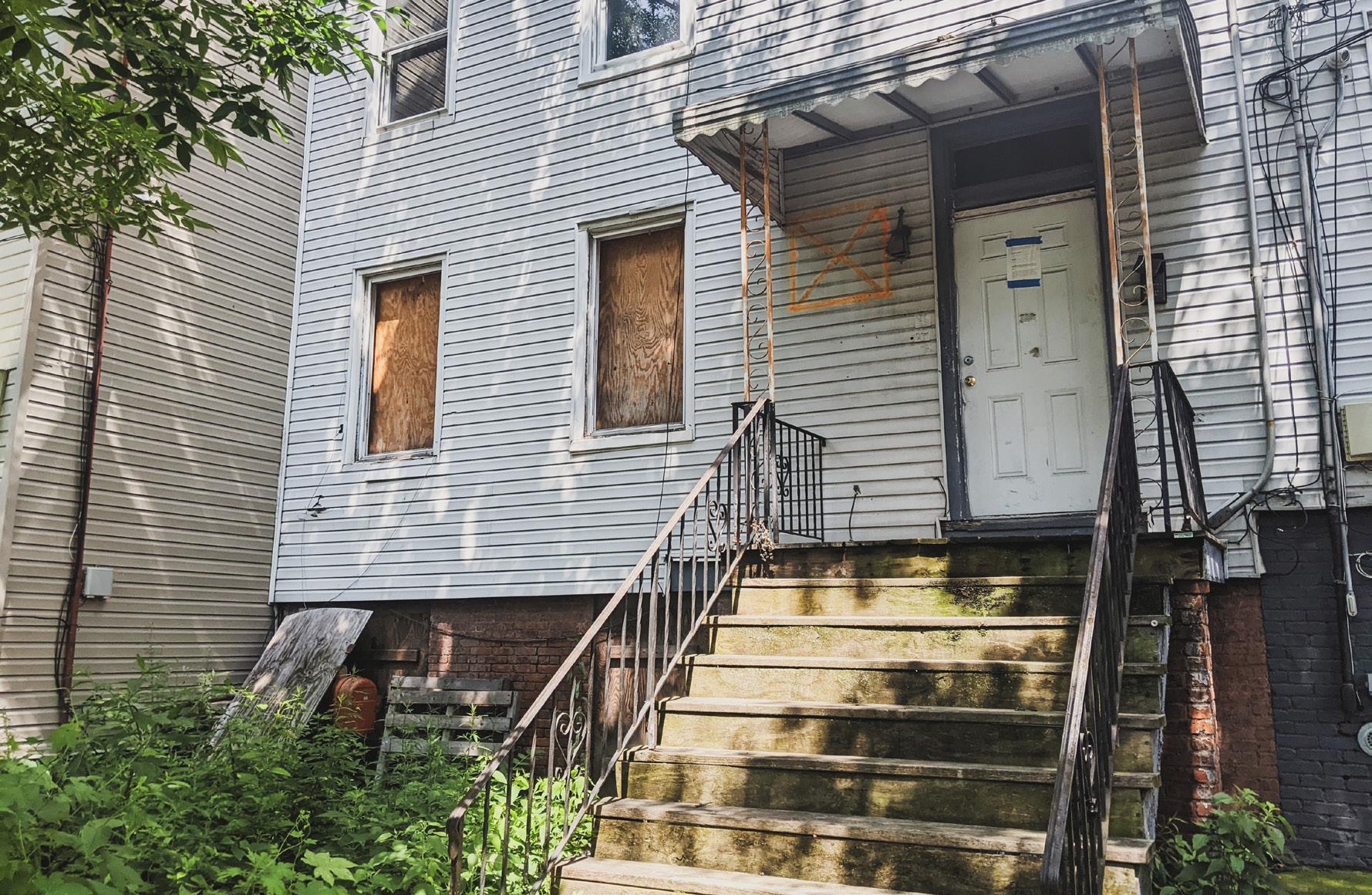
New York City in the 1970s, and the following two decades, was once home to the largest squatting movement in the nation because of a gargantuan housing crisis, among other issues. Manhattan’s Lower East Side (LES) was riddled with derelict and abandoned city-owned
buildings at that time, dramatized by Johnathan Larson’s bohemian musical “Rent.” Scores of white political punk rock activists, LGBTQ progressives, musicians, and people struggling with substance abuse squatted in burnt-out and boarded-up buildings alongside
Black, Brown, and immigrant residents who had made their homes in the tenements in the LES going back centuries.
Squatting was characterized as a political statement, a cause, a resistance, even a subculture
Mayor’s Charter Revision Commission meetings are chugging along
By ARIAMA C. LONG Amsterdam News Staff
Mayor Eric Adams’s city Charter Revision Commission public hearings are still underway, set to conclude with a final report on July 25. The commission aims to collect feedback on how to improve New York City’s constitution, but has been slammed by the City Council and advocates as little more than a “power grab” by the mayor.
Previous charter revision commissions have been responsible for reshaping the entire structure of city government, including how the city votes and runs elections with the introduction of ranked choice voting (RCV); expanding the size and jurisdiction of the Civilian Complaint Review Board (CCRB); and instituting term limits for community board members, the mayor, and other elected city officials.
The charter revision process usually leads to ballot referendums that will go before voters during the year’s general November election.
The current commission chair is Carlo Scissura, who has participated in two charter revision commissions in the past. Scissura also serves as president and CEO of the New York Building Congress, a position he’s held since January 2017. Other charter commissioners include Dr. Hazel N. Dukes, vice chair; Ken Ngai, secretary; and retired 32BJ President Kyle Bragg, Reverend Herbert Daughtry Sr., activist Jackie Rowe-Adams, and We All Really Matter (WARM) founder and CEO Stephanie McGraw.
“From public safety to sanitation and everything in between—that is why it’s so important to hear from members of the public, elected officials, representatives of city agencies, as we consider what recommendations to present to the voters at the general election on November 5,” said Ngai at the July 9 charter revision committee meeting at the Staten Island University Hospital.
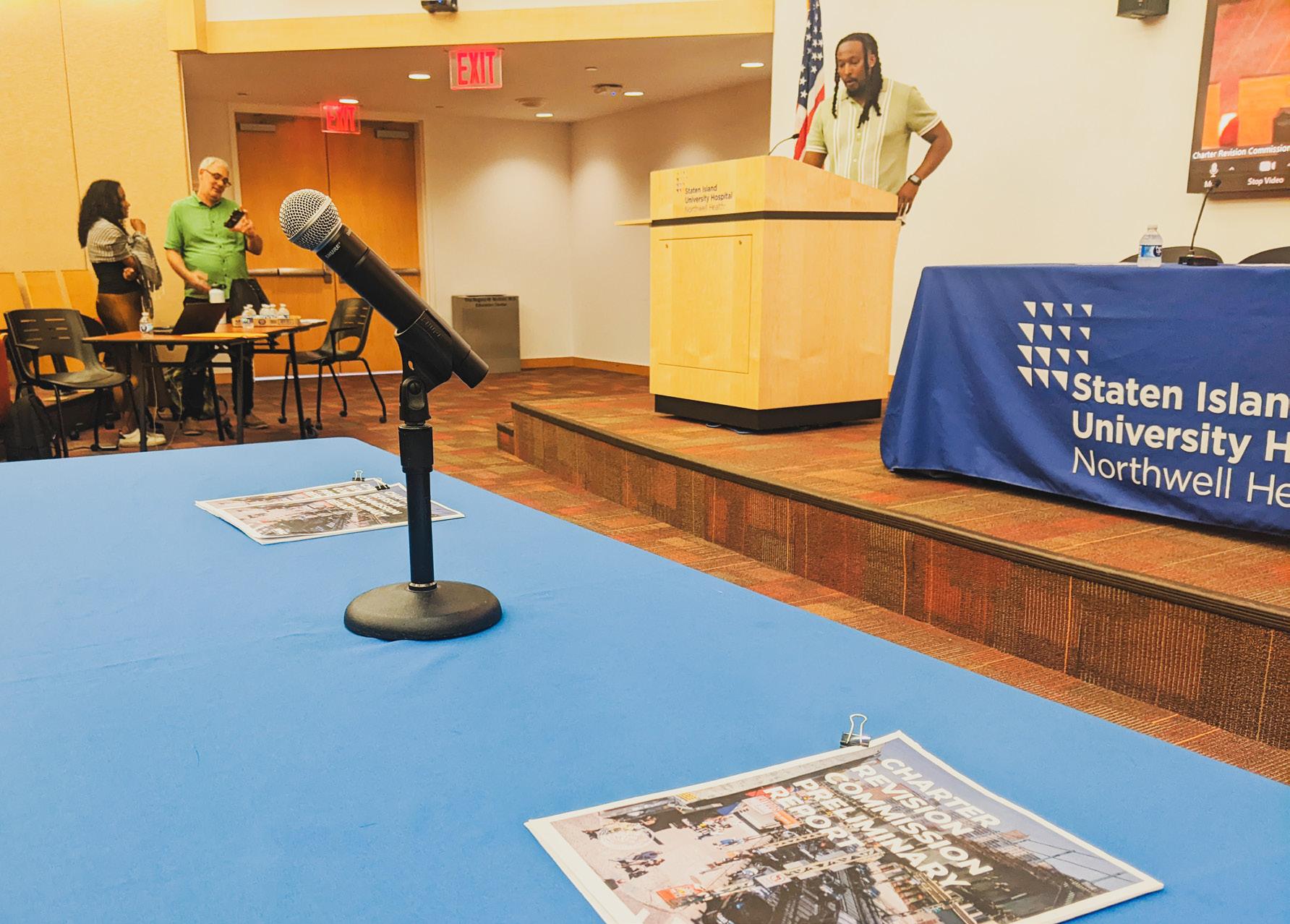
Photo of boarded-up vacant property on North Shore in Staten Island. (Ariama C. Long photo)
Adams’ Revision Commission meeting held at Staten Island University Hospital (SIUH) on Tuesday, July 9. (Ariama C. Long photo)
See SQUATTING on page 25
Biden in the pulpit and the snakepit
By HERB BOYD Special to the AmNews
After his TV interview with George Stephanopoulos on Friday evening and declaring that only “the almighty” would make him resign from the presidential race, President Joe Biden beelined to Mt. Airy Church of God in Christ in Philadelphia on Sunday morning. Unlike the silence of the debate and his lackluster performance therein, the church greeted him with a rousing reception and he quickly cut to the chase.
“I know I look 40...I’ve been doing this a long time,” he began, putting the age factor at the top of the speech, which he mostly read before a Black congregation.
Some concerns about his appearance with Stephanopoulos were raised on Sunday at a virtual conference chaired by House Democratic minority leader Hakeem Jeffries, and according to reports, five or six of the top Democrats at the session believed that Biden needs to step aside. At the church on Sunday, Biden maintained his defiance toward those calling for him to get out of the race.
“I, honest to God, have never been more optimistic about America’s future if we stick together,” Biden said, reading from a prepared text.
A full account of Sunday’s meeting with several Democratic committee leaders is forthcoming, although two people familiar with the meeting said, on anonymity, that several members said Biden should step aside. On the other hand, some members of the Congressional Black Caucus strongly favored that he remain in the race.
If Biden should step aside, his potential replacement becomes another pressing dilemma for Democrats, but Rep. Jim Clyburn of South Carolina, who played such a decisive role in Biden’s 2020 victory, told reporters that he would back Vice President Kamala Harris. Should this event occur, another question arises: Who would be her running mate?
And the questions continue.
Project 2025: Another knee on our necks
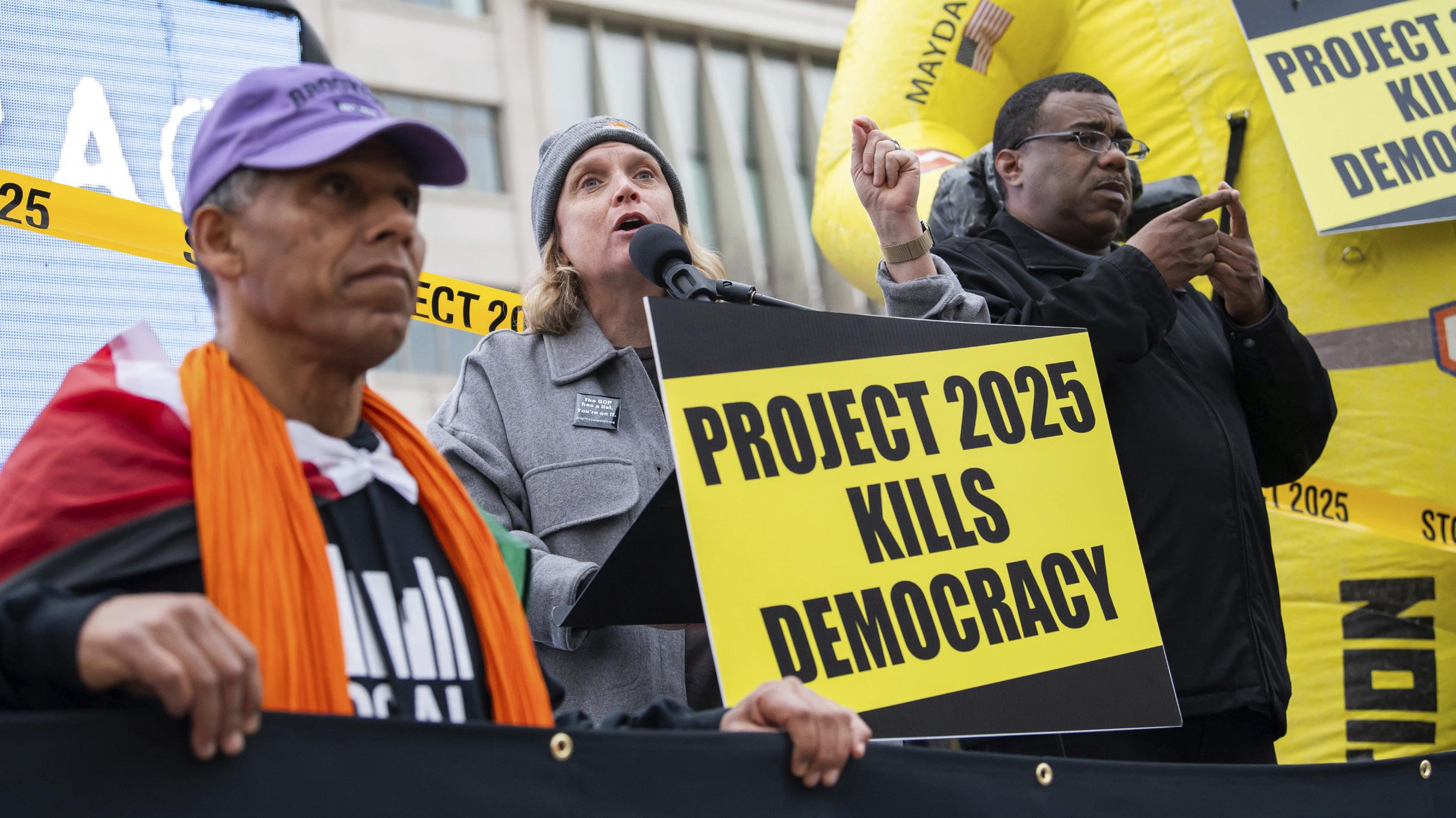
By ARIAMA C. LONG Amsterdam News Staff
Last week, award-winning actress Taraji P. Henson spotlighted the Republican playbook in an impassioned speech at the BET awards, and suddenly everyone wants to know what Project 2025 is all about and how it affects them.
In short, Project 2025—now being rebranded as Project 47—is a collection of far-right, racist policies aimed at overhauling the presidency and governmental infrastructure that has been in place for years.
“Project 2025 will spell the end of America as we know it and make this nation a hostile state for Black people,” said the Rev. Al Sharpton, founder and president of the National Action Network (NAN), in a statement.
What is it?
The 2025 Presidential Transition Project, also known as the “Mandate For Leadership: The Conservative Promise,” is a 922-page document compiled by the Heritage Foundation, established in 1973 under then-President Richard Nixon. The first version of this document had 20 volumes and 3,000 pages, and was given to former President Ronald Reagan in 1980, featuring more than 2,000 conservative policies.
“The Heritage Foundation, which is a farright extreme think tank—they have long put out presidential policy platforms,” said Colin Seeberger, senior advisor for communications at the Center for American Progress (CAP).
“The difference about Project 2025 is this is incredibly sweeping in scope, backed by a coalition of more than 100 far-right groups. It includes this more than 900-page authori-
tarian playbook to basically dismantle U.S. democracy in order to usher in an array of farright policies that would affect every aspect of American life.”
Recently, Heritage Foundation President Kevin Roberts, called the current phase of their operation a “bloodless second American Revolution” but alluded to the possibility of more violent insurrection to carry it out if there is resistance.
The conservative document includes recruitment tactics to identify far-right Republican loyalists to replace civil servants in the federal government, a training program to prepare them to flout government procedures, and a “secret” 180-day playbook for future Republican presidents, said Seeberger.
The murders of Martin Luther King Jr. in 1968, Malcolm X in 1965, and former President John F. Kennedy in 1963 slowed the Civil Rights Movement into the late 1970s—“a historic low point for America”—and conservatives, according to the document. Project 2025 pleads for a callback to bygone eras, and centers on white nationalism, pro-Christian nuclear familial ideals, dismantling the administrative state, and beefing up America’s military defenses on borders and overseas, among other things.
Anything to do with “federal spending,” climate change, religious freedoms, voter protections, civil rights for Black and Brown citizens, LGBTQIA+ rights, women’s rights, reproductive healthcare and abortion, gender equality or sexual identity protections, and discussions of race and Black history are seen as wholly leftist and therefore dangerous.
“The effectiveness of any policy designed to empower workers, prohibit discrimination,
and guarantee equal rights and bodily autonomy is directly related to the government’s capacity to enforce those policies,” said Valerie Wilson, a labor economist and director of the Economic Policy Institute (EPI) Action. “Project 2025 not only threatens to undo decades of hard-fought battles to pass laws protecting the civil and economic rights of all American citizens; it is a plan to severely restrict or totally eliminate any avenues for recourse against the violation of those rights, with Black and Brown people, the working class, women, and the LGBTQ community facing the greatest risk of suffering the consequences.”
Maya Wiley, president of the Leadership Conference on Civil and Human Rights, used similar language to Roberts to say, on a CAP panel, that Project 2025 “calls us to a second civil war.”
“Either we’re going to stand on the victory of ending slavery, of freeing people’s ability to have their own identity, and of understanding the role of a federal government in ensuring that we all have civil rights, [or] we will not have a democracy, and this is a blueprint for ending it,” Wiley said.
What does that look like in the real world?
Project 2025 has many fraught ideas, but here is a summary of the most important economic proposals.
The project would roll back overtime protections for employees, cut Social Security benefits by raising the retirement age, break up union contracts with employers and undermine negotiations, make it harder to form unions by installing an anti-worker council at the National Labor Relations Board, and allow minors to work in dangerous jobs, Seeberger said.
See PROJECT 2025 on page 31
Jennifer Flynn Walker, co-chief of actions, Center for Popular Democracy, discusses threats of Heritage Foundation’s Project 2025 at rally with message “No Day One Dictator! Stop Project 2025!” on Saturday, Jan. 27, 2024, in Washington, D.C. (Joy Asico-Smith/AP Images for Center for Popular Democracy)
Chef Shorne Benjamin is revolutionizing
By KAREN JUANITA CARRILLO Amsterdam News Staff
“Oxtail and cheese!!!!” someone online exclaimed after seeing one of the numerous TikTok reviews of Chef Shorne Benjamin’s now-legendary oxtail grilled cheese sandwich:
“C’mon they doing too much.”
Chef Shorne says that’s the usual reaction when people first hear about his new take on traditional Caribbean food dishes. Although he uses customary island ingredients, he’s changed up their common presentations and offers dishes like rotisserie-roasted chicken, a five-cheese mac and cheese, crispy caramelized plantains, sage-maple sweet potatoes, and shrimp curry burgers.
It was Chef Shorne’s take on one of his favorite dishes––oxtail––that became a viral sensation, though, after he added it to a grilled cheese sandwich with a mildly sweet tomato sauce. On TikTok, the sandwich was deemed “A piece of art.” Another customer made it his business to visit the restaurant when he was in town from England: after tasting the sandwich, he titled his video “Is This The Best Oxtail Sandwich In The World?” Another TikToker simply proclaimed: “Oxtail Grilled Cheese For The Win!”
Chef Shorne serves up what he’s deemed a “New Age Caribbean Cuisine” at Fat Fowl, his Downtown Brooklyn restaurant, which has been open for two years now in the DeKalb Market Hall at City Point/Albee Square Mall. The restaurant is his pandemic baby: It’s a place he’d been working toward establishing for at least 12 years.
“The pandemic happened, and instead of giving up this game, I figured that after the pandemic, with restaurants being restricted, a quick-service place would be great,” he said.
The Fat Fowl restaurant has an open kitchen format and features a long bar for seating. You don’t have to sit and eat your food there, though; the set-up is stylish yet fast-food–oriented so customers can either take a nearby seat or grab their food and go. “I try to put that illusion of, you’re getting the kind of quality food that you get from a sit-down restaurant,” said Shorne. “I tell people that if I actually take the food from the container, you’ll see how elegant and upscale this food is.”

Black New Yorker
Food is how you see a culture
Born on the island nation of Saint Lucia, Shorne flew to New York City when he was 18. He arrived ready to begin a new life in the United States on January 1, 1999. “I flew here on New Year’s Eve of 1998, and I landed here January 1, 1999, which was like a little Twilight Zone situation,” he said with a laugh. “You leave from one year and you get to a new year in a new land—it was kind of symbolic in a sense, because I didn’t know what was going to happen in New York. I was just reuniting with my parents. It was a new beginning, and I was embracing the change, trying to find myself. One thing that I know my parents always told me was, ‘Hey, you come here, you just have to get your education, be straight, don’t get in trouble’…I just saw the sacrifices my parents made, and I just wanted to be a good citizen and make them feel proud.”
See BLACK NEW YORKER on page 25

How to take action and help protect older adults from scams
Sponsored content by JPMorgan Chase

Anyone can be a victim of scams. They happen when scammers go after individuals of all ages, using tactics like phone calls, emails and messages to reel in unsuspecting victims to get to their money and personal information.
Older adults are often key targets and it is important to stay alert to common scams and financial abuse signs that can help protect older loved ones from becoming a victim.
Know the signs of a scam
Scammers have grown very convincing. They often can impersonate companies or organizations and make you believe the urgency or need behind their attempts. If you encounter the following signs, you’re likely dealing with a scammer.
1) Urgent demands to take action, send money and personal information requests. An imposter may demand quick action, claim that you will lose money, and push for access to your personal account information, passwords or confirmation codes. Remember: neither banks nor the government will threaten you or demand money to protect your accounts. If you receive a call from your bank that you are unsure about, hang up and call the number on the back of your credit or debit card.
2) New relationships that take an interest in their money. Financial abuse often happens from persons known to the victim, like a caretaker or a new acquaintance. Be wary of any new friends approaching you with investment “opportunities” or who take an interest in your financial information.
3) Unexpected contact from “loved ones.” Scammers can use artificial intelligence (AI) to replicate familiar voices, posing as friends or family. They’ll call you on the phone sounding like a loved one in danger and demanding that you send money. Hang up and contact your loved one directly to confirm it’s really them.
4) Unusual financial activity. Scammers could be accessing your account if you see withdrawals or changes to your accounts, such as new authorized users or missed bill payments. Also, be sure to keep your checkbook safe and keep an eye on check activity. Automate all the payments you can and discuss who are trusted contacts to
support money decisions if you ever need help.
5) Changes in ownership and responsibility. If you notice changes to wills, power of attorneys or any other financial plans, it could be a sign of financial abuse.
Take action to avoid scams
You and your loved ones don’t have to be victims. These steps can help reduce the chance of falling for a scam:
• Ignore and block calls and messages from numbers you don’t recognize and don’t trust caller ID alone. When in doubt, hang up and contact the company, bank or loved one directly to ask if there is a problem.
• Throw away unsolicited mail and be careful with suspicious emails or messages on social media. Don’t answer questions about personal finances.
• Keep your personal information, account details and passwords safe so you don’t give scammers access to your money and identity.
• Be cautious when using checks. Digital payment methods or your bank’s online bill payment feature can help you get money to your intended recipient while eliminating paper checks that can be stolen and altered.
• Enable online alerts to be aware of large purchases. You can act quickly if you see fraudulent charges.
• Shred bank statements, receipts, unused checks and credit cards before throwing them away.
If you’re an older adult, have conversations with trusted family members about how they can support your money needs as you age, which can help protect you from being exposed to fraud and financial exploitation. For those with older loved ones, start the conversation now and use digital tools to help alert you to possible scams. Remember that financial scams can happen to anyone. If you feel you’ve been scammed, contact your bank to verify recent transactions to ensure there is no unusual activity on your account. Don’t feel embarrassed if you become a victim, share your experience with friends and family and ask for help.
You can learn more about ways to detect financial abuse and to protect loved ones at chase.com/financialabuse.
Chef Shorne Benjamin (Karen Juanita Carrillo photos)
Downtown Brooklyn’s Fat Fowl restaurant.
Fight to Shelter: city accused of failing to meet trans- and GNC-affirming shelter agreements by agreed deadline
By TANDY LAU
Amsterdam News Staff, Report for America Corps Member
When Mariah Lopez sued the Department of Homeless Services (DHS) in 2017 and subsequently secured a settlement agreement promising a safer, more inclusive shelter system for trans and gendernonconforming individuals, she hoped others wouldn’t face the same abuse and discrimination she said she experienced while unhoused.
But she now says the City missed a key deadline to build gender-affirming shelters stipulated in the settlement. By 2022, the DHS agreed to specific housing accommodations for trans and gender nonconforming (GNC) people, who experience homelessness disproportionately higher than cisgender people and often endure transphobia in the shelter system.
Two solutions were provided to the DHS to meet the agreement. One was to simply construct the standalone shelters in each borough save Staten Island. The facilities wouldn’t exclusively house people who identify as trans or GNC but would be specifically designed to keep them safe. The DHS could otherwise create 30-bed units within existing shelters in those four boroughs to provide similar, gender-affirming housing, “with the objective of establishing one or more trans- and GNC-affirming shelters during the settlement period,” which runs until the end of 2026.
The agency opted to work through the existing facilities and “committed” to building at least one standalone shelter, according to a spokesperson from the Department of Social Services (DSS), which oversees the DHS.
“DSS-DHS has set aside dedicated units in existing shelter facilities across the city to provide safe and affirming shelter for transgender and gender non-conforming clients, in compliance with this settlement,” a DSS spokesperson said over email.
However, Lopez said the units fail to meet the provision, seeing them as no more than repurposing beds in cisgender shelters for “warehousing” of trans and GNC clients. Beyond the actual place to sleep, the dedicated spaces are meant to be “selfcontained with a common space” and otherwise separated from the host shelter. Additionally, the units were to provide trans- and GNC-reserved single-stalled toilets and showers, along with resources informing clients of their rights and how they can file discrimination complaints.

Two solutions were provided to the DHS to meet the agreement. One was to simply construct the standalone shelters in each borough save Staten Island. The facilities wouldn’t exclusively house people who identify as trans or GNC but would be specifically designed to keep them safe. The DHS could otherwise create 30-bed units within existing shelters in those four boroughs to provide similar, gender-affirming housing.
“They were supposed to open units in compliance with the settlement that comply with gender affirming accommodations, but also new facilities,” Lopez told the AmNews. “They failed on every aspect: the places we toured failed [and] the places they didn’t open are clearly non-existent.”
She said the City needs to build the standalone shelters to comply with the settlement agreement.
Lopez initially sued the DHS pro se, without legal representation. She alleged her shelter stay subjected her to “sexual
assault, sexual harassment, retaliation and discrimination and harassment based on her sex and transgender status.” The lawsuit survived the motions to dismiss and the Center for Constitutional Rights (CCR) was enlisted to negotiate the settlement agreement.
The CCR monitors and enforces the settlement agreement through site visits and reports from other trans and GNC individuals in the city shelter system. Mikaila Hernández, Bertha Justice Fellow and CCR attorney, concurred with Lopez’s assertions.
“We went in there and were able to see for ourselves and speak to some of the folks that are in those TGNC units,” Hernández said in a phone interview. “DHS has never been in full compliance with the settlement agreement, and efforts to hold them to their agreement are often met with defensiveness See TGNC SHELTERS on page 36
(Photo illustration by AmNews, Tandy Lau photo)

Go With The Flo

FLO
ANTHONY
Tongues are wagging that Shaboozey’s “A Bar Song (Tipsy)” shot to No. 1 on the Billboard Hot 100 songs chart, marking his first No. 1 to date, according to Billboard. The song also rebounded for a fourth week to No. 1 on top of the Hot Country Songs chart. Previously, no song by a Black man, or one known to be biracial, had previously topped both charts. Shaboozey is now the second Black artist overall to achieve the feat, following Beyoncé with “Texas Hold ‘Em” earlier this year. He also appeared on the Hot 100 on “Cowboy Carter” with “Spaghettii” and “Sweet Honey Buckiin”...... Simone Biles is standing up for her teammates. The decorated gymnast will soon represent Team USA at the 2024 Paris Olympics. But former teammate Mykayla Skinner recently made controversial comments about the current team, “Besides Simone, I feel like the talent and the depth just isn’t like what it used to be.” While Biles didn’t mention Mykayla by name, she posted on Threads last Wednesday: “Not everyone needs a mic and a platform.” The 2024 Women’s Gymnastics team, competing in Paris at the end of July, includes Biles, Suni Lee, Jade Carey, Jordan Chiles and Hezly Rivera...... Kevin Hart celebrated his 45th birthday in grand style July 6 on the fabulous island of Mykonos, Greece. A source told Go With The Flo that the actor/comedian danced on top of a table. The funnyman posted a video of himself on Instagram dancing on a dock with the water gleaming behind him, holding a bottle of champagne in one hand and a miniature boombox in the other........ Okay. Beyoncé enjoyed the fireworks at billionaire Michael Rubin’s white party at his $50 million estate in Bridgehampton, New York, just like any regular person. The superstar songstress, who on June 30, became the most decorated BET Awards winner when she won her 36th BET Award for “Texas Hold Em’” in the Viewers Choice category, held up her cellphone and filmed the fireworks as they lit up the skies to the sounds of New York, New York. Beyoncé's husband, Jay-Z, who was spotted taking a walk with a group of men in East Hampton, New York, on July 3, was also in the house, along with Bey’s mother, Tina Knowles, whose white dress was designed by Coperni. Entertainment for the night included Shaboozey, Mary J. Blige, GloRilla, Lil Wayne, Drake and a twerking Megan Thee Stallion. Of the many sports stars attending the soiree, it was nice to see New York Giant Hall of Famer Michael Strahan out enjoying himself after all he’s been through as his daughter Isabella continues a brave fight against a malignant brain tumor. Our prayers go out to all of their family......
P.S. 146 celebrates kindergarten graduation and college savings accounts
Contributed Press Release
At the P.S. 146 Ann M. Short kindergarten moving-up ceremony recently, students and families heard from school leadership about how their community is working together through the NYC Kids RISE Save for College Program to support students’ college and career dreams so they can be whatever they want to be when they grow up.
At the East Harlem school, 139 kindergarten through second-grade students have NYC Scholarship Accounts with $41,709 invested for their college and career futures, thanks to the NYC Kids RISE Save for College Program.
Through the program, nearly every kindergarten, first-, and second-grade student in NYC public schools (including participating charter schools) has a free NYC Scholarship Account starting with an initial $100 for college and career training. Citywide, more than 200,000 elementary school students have NYC Scholarship Accounts, with more than $30 million invested for their future college and career training. Funds in children’s NYC Scholarship Accounts are invested by NYC Kids RISE in a 529 account. Families have opportunities to receive additional rewards over time by completing foundational steps in the program and through Community Scholarships.
For answers to questions about a child’s account, families can reach out to their school, email NYC Kids RISE at info@nyckidsrise.org, or call the NYC Kids RISE hotline at 833-543-7473.


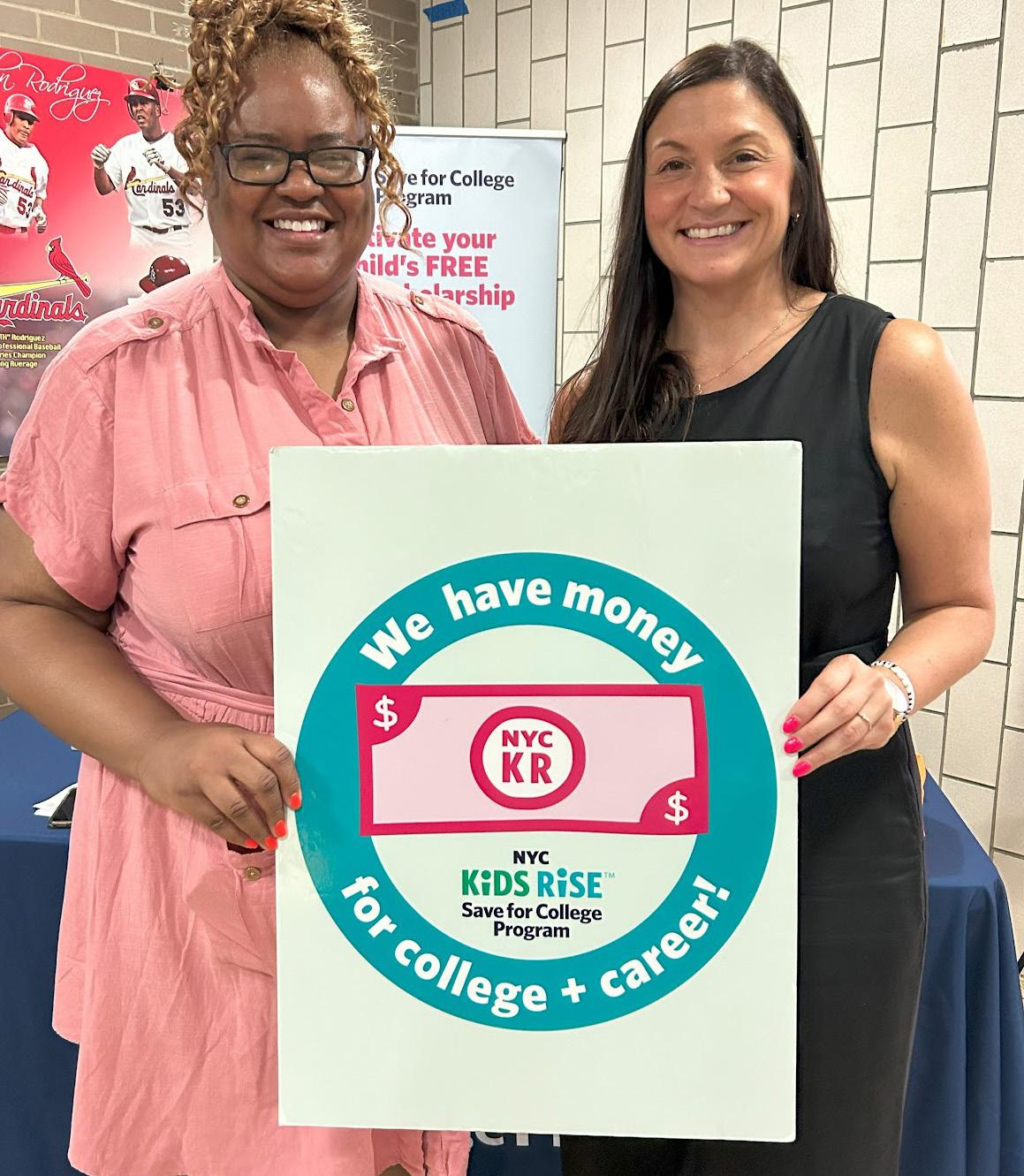
P.S. 146 Ann M. Short kindergarteners and parents/guardians celebrate money for college and career training through NYC Kids RISE Save for College Program at school’s kindergarten moving-up ceremony (Photos courtesy of P.S. 146)
P.S. 146 Ann M. Short kindergarteners celebrate money for college and career training through the NYC Kids RISE Save for College Program at school’s kindergarten moving-up ceremony
P.S. 146 Ann M. Short Special Education Lead Kisha Shoulders and Kindergarten teacher Erin Pilipczak at school’s kindergarten moving-up ceremony
Rapper Papoose and local stakeholders honor Bed-Stuy students


Contributed Press Release
It takes a village to raise a child, and the village of Bedford-Stuyvesant, Brooklyn, was in full force in May, supporting students at Dr. Ronald E. McNair P.S. 5 by presenting the inaugural STEMMY Awards to honor educational excellence.
In May, under the leadership of Principal Lena Gates, students, parents, faculty, and staff of P.S.5 literally rolled out the red carpet for the student-led award ceremony. The black-tie affair included a surprise guest appearance from rapper Papoose. The BedStuy native showed support by taking part in a student-led tour that included a visit to Dr. Ronald E. McNair Aviation Center sponsored by American Airlines, where a cast of young aviators demonstrated flight instructions via their high-tech flight sim-


ulators, and PS5’s global urban gardeners were on hand to demonstrate how they are using artificial intelligence (AI) to grow sustainable food.
Led by Dr. Robert M. Waterman, pastor of Antioch Baptist Church, and guest host Dr. Melissa Chester, the student-led production kicked off with a STEMMY skit and welcome from P.S. 5 educator Brittney Barriteau and her fourth-grade class, who conceived and inspired the STEMMY Award program.
“The STEMMY Awards are just another incentive to motivate our students,” said Barriteau. “We know they are intelligent; we know what they are capable of. We need to keep them motivated and continue to push them to try their best. Thank you for attending P.S. 5’s First STEMMY Award.”
The first P.S. 5 STEMMY for Education

went to Dr. Lester Young, Jr., the first African American chancellor of the New York State Education Department Board of Regents. “This award demonstrates to all of us that not only do we know how to educate our children,” shared Dr. Young Jr. “But we also love our children.”
Other honorees included District 16 Superintendent Branden T. Mims, Dr. Evelyn Castro of Medgar Evers College, and educator Dr. Brenda Boyd-Bell. Students Harold Anderson, Caitlyn Smith, Gerald Smiley, and Cach Grandison also received STEMMY awards for educational excellence, along with artist Asani Enriquez, who created the STEMMY logo and award. Community stakeholders also received STEMMY Awards, including Dr. Divinah “Dee” Bailey, founder/CEO of Watchful Eye, who attended the affair with a host of family
and friends. Bailey urged the audience to continue “fighting for this community” and thanked Gates “for providing a safe place for our children to grow and learn.”
Other STEMMY community honorees were Wayne Devonish, founder of 500 Men Who Make a Difference; the Jefferson Avenue Lion’s Club; Tina Watkins, local community resident and faithful P.S. 5 volunteer; and restaurateurs Sabrina Brockman of Grand Champs and Eduardo Mantelli of Saraghina.
The evening included a drum performance by Brooklyn Arts Council resident drum instructor Mamadou Doumbia and his student protégé Jaymah McKoy. The allgirl United Steppers of PS5 team was also on hand, performing a powerful, uplifting drill performance dedicated to Maya Angelou’s “Phenomenal Women” poem.
Recording artist Papoose (second from left) congratulates chess club team winners (left to right) Carter Bryant, Eric Smith, and Cach Grandison (Qlick photos)
Bed-Stuy event participants (left to right) Dr. Robert Waterman; Caitlyn Smith; honoree Dr. Lester Young, Jr., and Dr. Melissa Chester
United Steppers of P.S. 5 Step Team at STEMMY event
Ingrid Lewis Martin, senior advisor to New York City Mayor Eric Adams, congratulates STEMMY honoree Dr. Dee Bailey
STEMMY event participants (left to right) New York State Assemblywoman Latrice Walker, Papoose, Dr. Dee Bailey, and Principal Lena Gates
A roadmap for tomorrow

Here’s something to think about that’s sad but true: Labor unions in America are weaker than in other industrialized nations. Today, in our country, just 10% of all workers are in a union— the lowest number since 1983. In the private sector, less than 7% of workers are in a union.
This low overall membership number is largely because corporations have become very skilled at aggressively fighting unionization. Judicial rulings, including from the Supreme Court, have also helped to erode the organizing efforts of workers that resulted in fewer workers seeing the value of becoming a union member…and even being discouraged from joining a labor union.
The negative consequences are enormous. They are evident in countless ways, from diminished workers’ protections to the diminished political power of labor unions. Getting workers’ rights legislation passed in many states—and in Washington, D.C.—is often met with insurmountable hurdles, where profit over people wins out and workplace safety takes a backseat to production quotas.
It should be noted that despite the dismal numbers in overall union membership, conversely, 36% of workers in the public sector are union members—largely government workers. Unfortunately, this number may diminish, too, due to factors such as the recent Supreme Court ruling that overturned the Chevron Doctrine of 1984, which said the courts must defer to the knowledge and technical experience of appropriate federal agencies—like OSHA— when working out the nitty-gritty details of legislation.
Opportunities do exist to expand union membership. The International Brotherhood of Teamsters, for example, has taken the initiative in a tireless grassroots recruitment campaign that includes supporting Amazon workers in their organizing efforts.
There are, however, other groups that also see an opportunity for recruitment: nonunion recruitment. For example, the New York City branch of the Democratic Socialists of America (DSA) has expressed dissatisfaction with unions, saying they are not being aggressive enough about workers’ rights and inequality issues pertaining to persons of color. This is counter to the fact that Black people constitute the largest percentage of union workers, at 11.8%, with whites at 9.8%, and Hispanics at 9%.
Some DSAers have tried to work from within, attempting to gain a foothold in several unions by seeking labor endorsements for their candidacies or support for their policy initiatives. Vincent Alvarez, president of the NYC Central
New, free web portal ‘Open Access NYC’ helps food entrepreneurs grow their businesses

By KAREN JUANITA CARRILLO Amsterdam News Staff
New York University and Food & Society at the Aspen Institute have launched a new online portal aimed at supporting New York City area BIPOC food entrepreneurs.
The new free website portal, Open Access NYC (https://aspenopen-access-new-york.herokuapp. com/), was created to help people who are looking to open a food-oriented business but may not know all the procedures they need to have in place to get the business up and running, or how to sustain that business and keep it licensed once it is operational.
In a July 9 webinar announcing the launch of the Open Access NYC portal, Corby Kummer, the executive director of Food & Society at the Aspen Institute, spoke about how his organizations’ efforts to promote healthy diets has had to delve into the fact that many communities don’t have access to healthy food.
“We’ve done a very long report gathering together all of the peer-reviewed research into ‘food is medicine’ interventions,” Kummer explained, “the only one of its kind. The National Institutes of Health used it as the basis
for a call for Centers of Excellence and Food is Medicine.
“We’ve been terrifically excited to get to work on nutrition interventions. But always the way to make something survive is to allow people to thrive economically while helping others. And so, we wanted to be able to help people of color and BIPOC food entrepreneurs to get healthier food into underserved neighborhoods that need it and to make a profit doing it.”
But when organizations or individuals work to create programs or restaurants where they can provide healthy food, they are too often faced with bureaucratic or financial hurdles that can hinder or even stop their efforts.
That’s where the Open Access portals come in. Open Access NYC is now the fourth citywide program in the nation. It follows portals already operating in Baltimore, Philadelphia, and Washington, D.C. The portals are intended to help guide anyone looking to open a food-oriented business through all of the local and sometimes national certifications they might need. The site will also feature resources that can help a new business find restaurant suppliers, apply for grants,
or give them information on financial institutions that might be able to help with loans.
Caroline Karanja, CEO of Hack the Gap, the organization that helped design the portal, said Open Access NYC “is really a jump-off point for food entrepreneurs: folks from caterers to packaged food specialists. This website really pulls together the most essential starting point and resources for those that are looking to start and grow their food businesses.
“It’s like a digital collaboration of resources from the SBA to local nonprofit organizations to private software services whose products and offerings can help you build your food business,” she added. “The platform has videos, access to templates, checklists, and in some areas just good old-fashioned instructions on how to do things like think about your marketing, how to get the right kind of permit or license, and all the things here are really just the beginning of the platform.”
The Open Access NYC portal is designed to be a “one-stop shop” for food-based entrepreneurs of color. Plans are to keep the site updated with new information, since rules and regulations are constantly changing.
Gregory Floyd President, Teamsters Local 237 and Vice President at-Large on the General Board of the International Brotherhood of Teamsters
Caroline Karanja, CEO of Hack the Gap, speaks during the presentation for Open Access NYC. (Screenshot from NYU and Aspen Institute webinar)
Sharonne Salaam’s weekly legal talks in Harlem for wrongfully convicted kick off with Jeffrey Deskovic
By TANDY LAU Amsterdam News Staff, Report for America Corps Member
Justice 4 the Wrongfully Incarcerated founder Sharone Salaam’s advocacy continues through summerlong legal workshops in Harlem. Exoneree-turned-attorney Jeffrey Deskovic opened the series this past Saturday to talk about starting over after an exoneration.
“[Attendees] are looking to get where I am now as far as being exonerated, so [it’s] very important to them and for me, it’s important because I like to share the information and for more people to be exonerated,” Deskovic said. “You can’t take every case yourself personally, but if I could point people in general directions and talk about how to go through it, and give some practical advice on how to get started [and] direct them, that’s very meaningful to me.”
DNA evidence was key in the reversal of Deskovic’s wrongful conviction in the 1990 murderrape of a classmate in Westches
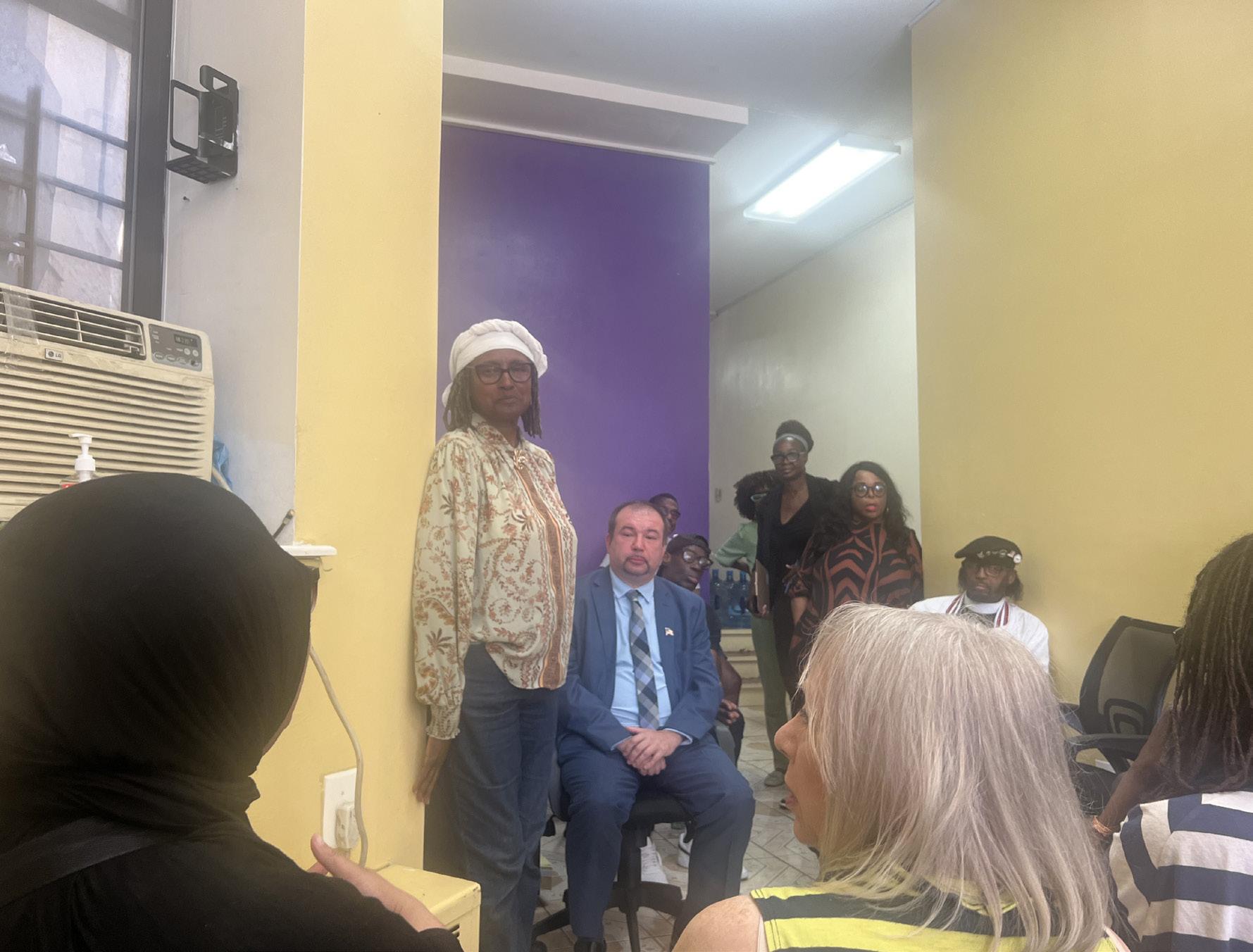
ter County. Today, he helps others prove their innocence and adjust to life after exoneration through his eponymous nonprofit, the Deskovic Foundation. For Saturday’s talk, he fielded broad legal questions and imparted tips about enlisting an attorney and developing media attention for an exoneration case.
Overturning wrongful convictions remains a challenge for many New Yorkers. Frequently, seeking exonerations in the state requires filing a 440 motion to vacate, which challenges the legality of a conviction or sentence. Proving innocence is often not enough under that avenue; those who have pleaded guilty cannot overturn a wrongful conviction in New York State simply by proving they didn’t commit the crime unless they provide DNA evidence. And more than 90% of convictions are obtained through guilty pleas nationwide.
As a result, red tape holds up most wrongful conviction claims

LIKE $10,000,OOO CASH
New games and prizes dropping every month.

See SALAAM on page 35
Sharone Salaam (center left) moderates as Jeffrey Deskovic (center right) talks about wrongful convictions. (Tandy Lau photo)

The beauty industry must clean up its dangerous secret

By ELIZABETH REYES
Beauty may, as they say, only be skin deep. Unfortunately, that is often the case for the beauty industry as a whole, where clean-washing and green-washing have become the latest trend to mask an industry that is rife with products that contain dangerously unhealthy ingredients. I used to enjoy shopping for cosmetics and beauty products. It was exciting, even therapeutic. But the more I learn, the more nerve-racking it can be, because this experience has become tainted by the ugly reality that many of the products we buy— intended for self-care, wellness, and everyday use—contain chemicals that are harming our health. Few of these dangerous chemicals are openly disclosed on lists of ingredients. The danger is intensified by the cumulative impacts of using multiple products, which often occurs on a daily basis.
In the last year, the makeup brand Maybelline, owned by L’Oreal, faced a class action lawsuit over the presence of per- and poly-fluoroalkyl substances (PFAs) in their waterproof mascaras. PFAs are a class of synthetic chemicals used heavily in products like waterproof mascaras, lipsticks, and eyeliner. They’re commonly referred to as “forever chemicals” because of their inability to
break down in people’s bodies and the environment. When ingested or absorbed, PFAs accumulate in our organs and tissues.
This bioaccumulation can lead to adverse health impacts, including immune system disruption, endocrine disruption, liver and kidney damage, developmental delays, and an increased risk of certain cancers.
Many cosmetic products in the United States contain ingredients that are banned in the European Union (EU). In cosmetics alone, the EU has restricted or banned more than 1,300 chemicals compared to only 11 banned here in the United States.
Given the global nature of the industry, how do manufacturers handle the drastically different requirements of these markets? Some simply omit the banned substances from the products they sell in Europe, while others reformulate products with safer ingredients. An example of this latter approach is CeraVe, which adjusts its formulations to address substances prohibited in Europe, such as parabens.
This begs the question: If companies are already mass-producing the same products with safer ingredients, or simply omitting the harmful ones, why can’t they sell these safer products to the American market? It’s disheartening that many indi -
viduals are simply unaware of the harmful chemicals in the products they purchase. The façade of a pretty package and promising results divert attention from the dangers hidden in an intentionally confusing ingredient list. This reality underscores the critical need for legislation that bans the most harmful chemicals and forces manufacturers to label the ingredients in the products they sell clearly and transparently.
New York State has an opportunity to do just that, with the Beauty Justice Act (S.4265/A.6969). This bill requires manufacturers to disclose the ingredients in personal care products and their health impacts. It also bans the most dangerous chemicals, including those that disproportionately harm women and femme-identifying people of color, who, thanks to racist beauty standards and aggressive target marketing, have higher rates of use of these products. Ultimately, this legislation is vital to upholding New York State’s commitment to prioritizing the health and safety of consumers while pushing the beauty industry to come clean. Elizabeth Reyes is the Toxics Policy Campaigns coordinator at WE ACT for Environmental Justice, where she works to advance programs and policies to protect people of color from the disproportionate exposure to toxic chemicals.
It’s birthday time

CHRISTINA GREER, PH.D.
This is my birthday week, and I am always excited and thankful to celebrate another year around the sun. As I get older, I have friends who dread their birthdays. They hate that they’re getting older. Some lament personal and professional choices they’ve made that have put them off the path they imagined themselves on at this stage in life. Others cannot do the physical activities they loved at the same levels and are feeling the effects of time. Some feel like their brain and bodies are betraying them each birthday and reminding them just how much older they are turning. I choose not to think of birthdays as markers of defeat. Instead, I see birthdays as opportunities to begin anew, as well as take stock in my various accomplishments, large and small.
One of the things I am most thankful for are my various friendships with people in different cities across the globe. I am also thankful for the gift of new friendships.
Of course, I have my bestie from ninth grade, my homies from my first week of college, my grad school friends who were in the trenches with me during our broke and exhausted days. However, I am also so thankful for newer friends who have come into my life, from my random seatmate on a Delta airplane to a person I played cards with when a typhoon hit our vacation spot and we were rained in for a week. I choose to use my birthdays as a time to take stock of the abundance that sur-
rounds me, and that includes the people in my life.
I remember having birthday parties as a child. A little homemade yellow cake with chocolate icing was always my favorite. At my sixth birthday, I was new to Philadelphia and my school, so my parents decided to throw me a huge birthday party so I could spend time with my new classmates. They invited all the kids from my class, as well as my sister’s grade.
Imagine close to 50 little Black girls running around through sprinklers, having the time of their lives being carefree. Little did they know that as we ran around the yard playing freeze tag (the good old days), we disturbed two beehives and a wasps’ nest. Needless to say, everyone went home crying and covered in calamine lotion—it was a memorable birthday, indeed.
This year, as I reflect on my various birthdays, the different friends I have spent my birthday with in varying locales, I will think about all of the additions to my life, this past year and in previous years. It is a blessing to blow out a new candle each year, even if the cake starts to look like a forest fire.
Christina Greer, Ph.D., is an associate professor at Fordham University; author of “Black Ethnics: Race, Immigration, and the Pursuit of the American Dream”; and co-host of the podcast FAQ-NYC and host of The Blackest Questions podcast at TheGrio.
Beauty Justice Act requires manufacturers to disclose ingredients in personal care products and their health impacts, and bans the most dangerous chemicals, including those that disproportionately harm women and femme-identifying people of color (AP Photo/Richard Drew)
Caribbean Update
Trinidad’s PM complains of coup plot
BY BERT WILKINSON
Special to the AmNews
In a rather strange address to its parliament late last week, Trinidad’s Prime Minister Keith Rowley complained about a supposed plot by an elite state security unit to possibly stage a coup and remove his governing People’s National Movement (PNM) from power, but his assertions do not appear to be gaining any political or societal traction.
His address to the 41-member house came at the end of an audit of the Strategic Services Agency (SSA), a special unit that had operated within the state security apparatus. Rowley basically told Parliament that operatives in the unit had gone rogue, stockpiling weapons and engaging in corrupt acts and nepotism by employing friends and family in the organization without approval of higher powers. He said unit leaders were militarizing the agency for no apparent reason, with orders being placed for high-powered rifles with the most modern silencers, procurement of thousands of rounds of rifle and handgun ammunition, and other unauthorized acts and acquisitions.
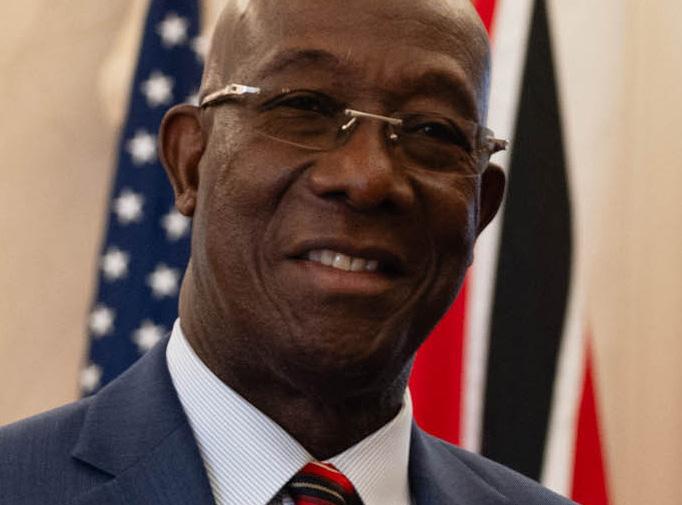
“Such persons belonged to a cult [that] was arming itself while preaching a doctrine for trained military and paramilitary personnel with a religious calling to be the most suitable persons to replace the country’s political leadership,” Rowley said, to the astonishment of the political opposition. “They were exerting high levels of influence on the affairs of the agency to the detriment of national security.”
He told fellow lawmakers that the cabinet had never approved any funding for highpowered weapons with the latest silencers.
“This didn’t prevent the SSA from making part payment for military-grade weapons with suppression capabilities,” he said.
By the start of this week, opposition activists and former SSA officials had moved to debunk assertions about a coup. Opposition leader and former Prime Minister Kamla Persad Bissessar argued that Rowley deliberately chose Parliament as his pulpit to complain about an alleged coup, suggesting that “it is noteworthy that Rowley’s allegations were made under parliamentary privilege to prevent any legal action from being taken for defamation.
“This story sounds remarkably familiar: a religious group stockpiling ammunition to overthrow the elected government,” she
said. “Did he get this information via email? Rowley and his public relations team are not just spinning a distraction. They are orchestrating a diversion to turn attention away from critical issues such as corruption, crime, property taxes, forex shortages, joblessness, increasing utility rates, high food prices, poverty, and other negative issues plaguing the country.”
Despite the opposition leader’s reply to Rowley, the twin island nation with Tobago has a well-defined history linked to an attempted coup by a Muslim group in July 1990 and a Black Power uprising involving soldiers and civilians in 1970, so authorities in government are taking the latest evidence seriously. Then-Prime Minister Ray Robinson was shot by coup-makers when they invaded Parliament during a live session in 1990. Other state entities were attacked, including the state television station, police facilities, and other buildings. A large part of the commercial area of Port of Spain was also destroyed by fire and affected by looting.
General elections are scheduled to be held late next year, and Rowley’s Afro-dominated PNM party is expected to hold onto power for a third five-year term.
Four top immigration news headlines you should know

Immigration continues to dominate headlines concerning the border and the upcoming general election. However, several significant stories are shaping the immigration landscape, including the impact of the SCOTUS Chevron ruling. Here are four key headlines you may have missed: SCOTUS Chevron ruling on immigration
The Supreme Court of the United States (SCOTUS) recently overturned the Chevron doctrine, significantly impacting administrative law and immigration policy. The 6-3 decision in the Loper Bright and Relentless cases marks a departure from nearly four decades of precedent, changing how federal courts interpret agency regulations.
Established in 1984, the Chevron doctrine directed federal courts to defer to agency interpretations of ambiguous laws, provided those interpretations were reasonable. This rule granted agencies like USCIS considerable flexibility in implementing laws within their purview.
The Supreme Court’s decision to over-
turn Chevron means federal courts will no longer automatically defer to agency interpretations, giving judges more authority to scrutinize and potentially override agency decisions and regulations. This rebalancing of power between the judicial and executive branches could have several implications for immigration:
Leveling the Playing Field: Immigrants, their families, and employers may now have more opportunities to challenge unfavorable agency interpretations of immigration laws.
Increased Judicial Review: Individuals seeking review of decisions by immigration judges or the Board of Immigration Appeals may find expanded opportunities for judicial scrutiny.
Potential Benefits for Visa Applicants: Employers and visa applicants could find new avenues for argument regarding visa classifications, such as H-1B or L visas.
Limitations on Executive Power: The ruling constrains the executive branch’s ability to update immigration policies or introduce new regulations without clear statutory basis, potentially threatening benefits created through regulatory interpretations.
Kelli
highlighted several potential consequences of the decision: “The decision has severely handicapped the executive branch’s power to modernize our immigration system through policy updates or regulations,” she said. “Valuable immigration benefits created by regulations may be threatened if not clearly based on statutory language. With this ruling, SCOTUS is punting the rulemaking process back to Congress.”
The ruling underscores the importance of clear, comprehensive legislation from Congress to guide immigration policy. As the legal community and policymakers adjust to this new landscape, the full impact of this decision will unfold in the coming years as cases make their way through the court system and Congress responds to this significant shift in the balance of power.
TPS for Haitians extended
tion in the U.S.
U.S. agrees to help Panama deport migrants
The U.S. and Panama have signed an agreement allowing American officials to assist in deporting migrants who cross the Darién Gap. This initiative aims to manage the high number of migrants traveling through Panama to the U.S. southern border. The U.S. will provide training and resources to Panamanian authorities, enhancing their ability to carry out deportations and manage migration.
U.S. deports chinese migrants
Felicia J. Persaud is the publisher of NewsAmericasNow.com, a daily news outlet focused on positive news on the Black immigrant communities of the Caribbean and Latin America. FELICIA
Stump, president of the American Immigration Lawyers Association (AILA),
The U.S. Department of Homeland Security has extended Temporary Protected Status (TPS) for Haitian immigrants for 18 months, from August 4, 2024, to February 3, 2026. Secretary Alejandro Mayorkas cited ongoing violence, insecurity, and natural disasters in Haiti as reasons for the extension. This move allows an estimated 309,000 Haitian nationals to apply for TPS, providing protection and work authoriza-
The Department of Homeland Security has deported 116 Chinese migrants, marking the first large charter flight in five years. This action is part of an effort to enforce immigration laws and deter irregular migration. The deportations highlight ongoing cooperation between the U.S. and China to address illegal immigration and human smuggling, amidst rising political debate and concerns about harassment of Asian communities.
Trinidad and Tobago Prime Minister Keith Rowley at U.S. Department of State in Washington, D.C., January 29, 2024 (Public domain photo)
Harlem seniors focus on strengthening community health
Contributed Press Release
Esplanade Gardens Health & Wellness Committee recently started their first wellness initiative, “The Wellness Walk.” The Committee and residents gathered in their courtyard at 129-133 West 147 St. in Harlem.
Chairperson Pauline Watson, Co-Chair Maxine Freere, and Secretary Delores Jeffries-El centered the first initiative around exercise. Board Liaison Sharon Lewis suggested the path taken be around the property of Esplanade Gardens for senior comfort.
The Esplanade Gardens Health & Wellness Committee is planned and organized without financial funds and is looking for sponsors to help residents to better understand and navigate the health system. Please email Mschocolatetwo@ gmail.com if you wish to join.

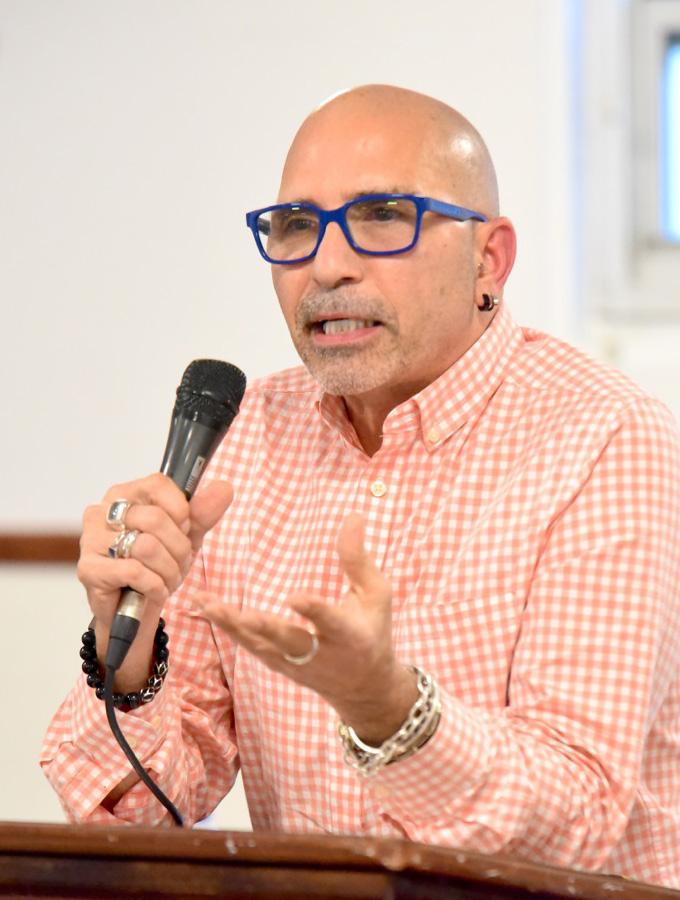
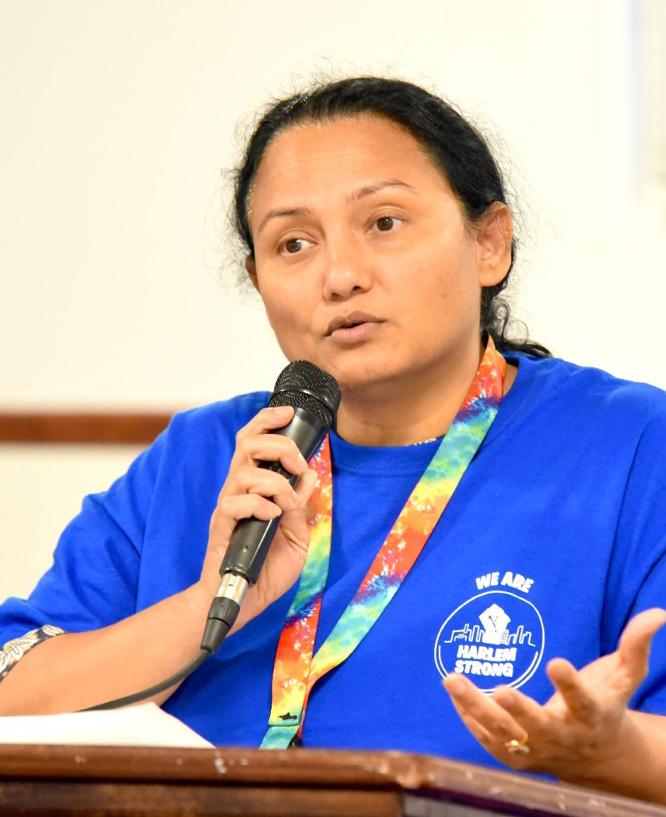

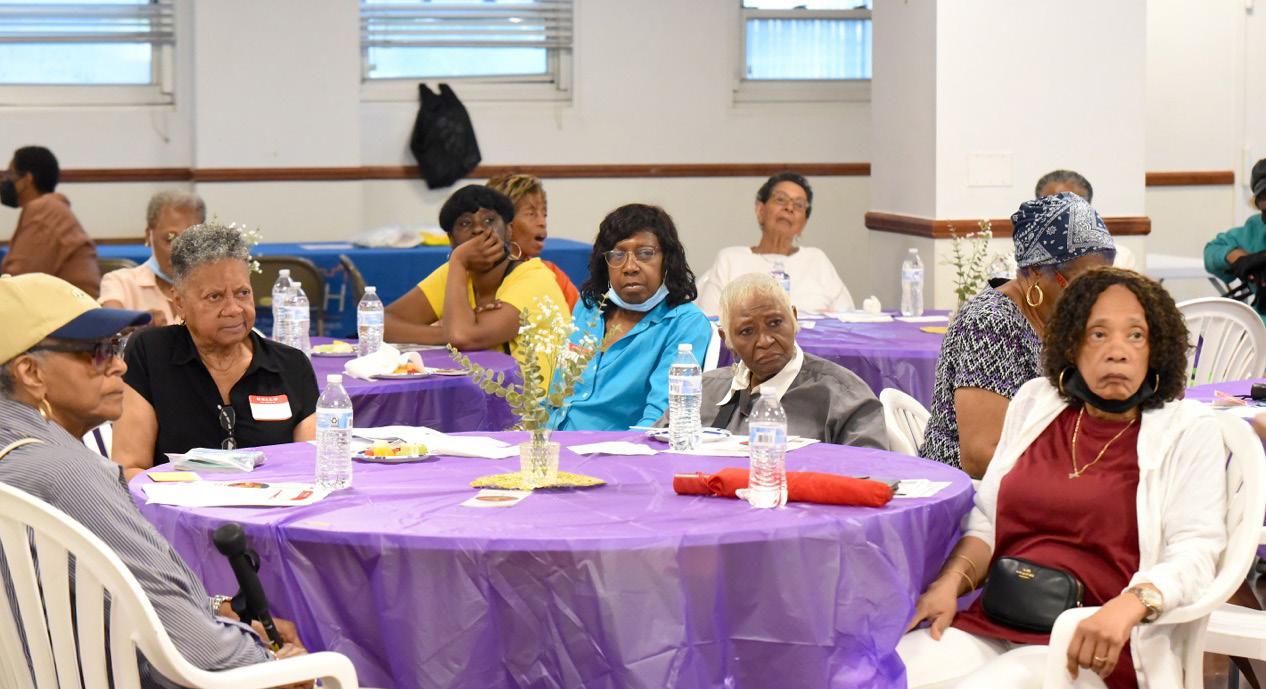

Have a healthy and fulfilling sex life. Care is available for people of all gender identities, sexual orientations, and immigration statuses:
STI prevention, testing, and care
HIV prevention (PEP and PrEP), testing, and care
Mpox and other vaccinations
Reproductive health LGBTQIA+ health
Information and resources
Low to no cost care is available at many facilities, including all City-run sites.
Delores Jeffries-El, secretary; Dominic Boyce, Harlem Hospital Administrator; Debby Buckson, member; Pauline Watson, chair; Dr. Patrick Fratellone, speaker; Tabetha Brown, member; Dr. Srividhya Sharma, speaker and board liaison Mary Sweeting, Brenda Bulter, Carolyn McBain
Delores Jeffries-El, secretary; Dominic Boyce, Pauline Watson, chair; Dr. Patrick Fratellone at Harlem Hospital (Bill Moore photos)
Dr. Patrick Fratellone Dr. Srividhya Sharma
Health
More African nations focus on HPV vaccination against cervical cancer, but hesitancy remains
By CHINEDU ASADU Associated Press
ABUJA, Nigeria—Yunusa Bawa spends a lot of time talking about the vaccine for the human papillomavirus that is responsible for nearly all cases of cervical cancer, but on most days, only two or three people allow their daughters to be vaccinated in the rural part of Nigeria where he works.
The challenge in the Sabo community, on the outskirts of the capital of Abuja, is the unfounded rumor that the HPV vaccine will later keep young girls from giving birth.
“The rumor is too much,” said Bawa, 42.
As more African countries strive to administer more HPV vaccines, Bawa and other health workers tackle challenges that slow progress, particularly misinformation about the vaccine. The Africa office of the World Health Organization (WHO) estimates that about 25% of the population still has doubts about it, reflecting concerns seen in some other parts of the world in early campaigns for the vaccine.
A common sexually transmitted virus, HPV can cause cervical cancer, certain other cancers, and genital warts. In most cases, the virus doesn’t cause any problems, but some infections persist and eventually lead to cancer.
Across Africa, an average of 190 women died daily from cervical cancer in 2020, accounting for 23% of the deaths globally and making it the leading cancer killer among women in the WHO Africa region of 47 countries. Of the 20 countries with the highest rates of cervical cancer cases in the world, 18 are in Africa—but the region’s HPV vaccination rate has been low.
More than half of Africa’s 54 nations—28—have introduced the vaccine in their immunization programs, but only five have reached the 90% coverage that the continent hopes to achieve by 2030. Across the region, 33% of young girls have been vaccinated with HPV.
It’s a stark contrast to most Eu-

ropean countries, where both girls and boys have been receiving HPV shots.
Part of why Africa has a high burden of cervical cancer is because of limited access to screening for women, said Emily Kobayashi, head of the HPV Program at the vaccines alliance Gavi.
“The elimination strategy is a long game...but we know that vaccination is the strongest pillar and one of the easiest to implement,” Kobayashi said.
There’s more to it than implementation, though. “It is one thing to introduce the vaccine, but if the vaccine remains in the fridge, it doesn’t prevent cervical cancer,” said Charles Shey Wiysonge, head of the vaccine-preventable diseases program in WHO’s Africa region. He said information must be provided by people “who are trusted, people who are close to the communities.”
There is a long history of vaccine
hesitancy in many African countries that is sometimes linked to a lack of trust in government, as one study published in the Nature science journal in May found, giving room for conspiracy theories and misinformation from social media influencers and religious leaders.
In Zimbabwe, where cervical cancer is the most frequent cancer among women, a group of mostly women known as Village Health Workers has been trained to raise awareness about cervical cancer and the HPV vaccine in rural areas, but they fight a high level of hesitancy among religious sects that discourage followers from modern medicines. These groups ask people to rely instead on prayers and “anointed” water and stones.
The women who eventually agree to be screened for cervical cancer do so in secret, said Zanele Ndlovu, one of the health workers on the outskirts of Bulawayo city.
school-based programs, a doorto-door approach, and mobile outreach for girls in hard-toreach areas that have helped it reach an 80% coverage rate with the first of two doses.
In Tanzania, where the HPV vaccine has been in use since at least 2018, authorities in April launched a campaign to target more than 5 million girls and further raise coverage, which has reached 79% of girls with the first dose.
One of Africa’s largest HPV vaccination drives targeting girls recently kicked off in Nigeria, which has procured nearly 15 million doses with the help of the U.N. children’s agency. It will target girls aged 9–14 with single doses that WHO’s African immunization advisory group has said is as effective as the regular two doses.
In a deeply religious country like Zimbabwe, “the spiritual leaders have so much influence that a lot of our time is taken trying to educate people about the safety of vaccines, or that they are not ungodly,” Ndlovu said.
There are also success stories in Africa, however, where authorities have achieved up to a 90% vaccination rate.
One example is Ethiopia, which relies heavily on religious leaders, teachers, and hotline workers.
In Rwanda, the first African country to implement a national HPV vaccination program in 2011, the coverage rate has reached 90%. Hesitancy is less of an issue due to vigorous awareness work that has relied on school-based campaigns and community outreach programs, said Dr. Theoneste Maniragaba, director of the cancer program at the Rwanda Biomedical Center.
Mozambique has deployed
One challenge is explaining the HPV vaccination to girls before the onset of sexual activity, especially in conservative societies, said Dr. Aisha Mustapha, a gynecologist in northern Kaduna state. Mustapha has been successfully treated for cervical cancer. She said the experience helps in her meetings with religious leaders and in community outreach programs in Kaduna, where she leads the Medical Women Association of Nigeria. They try to make girls feel comfortable and understand why the vaccine is important, she said. That sometimes requires comic books and lots of singing.
“The (cervical) cancer…is no respecter of any identity,” she said. “The vaccine is available, it is free, it is safe and effective.”
Associated Press writers Farai Mutsaka in Harare, Zimbabwe, and Ignatius Ssuuna in Kigali, Rwanda, contributed to this report.
The Associated Press receives financial support for global health and development coverage in Africa from the Bill & Melinda Gates Foundation Trust. The AP is solely responsible for all content. Find AP’s standards for working with philanthropies, a list of supporters, and funded coverage areas at AP.org.
Health worker administers cervical cancer vaccine HPV Gardasil to girl on the street in Ibadan, Nigeria. African countries have some of world’s highest rates of cervical cancer. Growing efforts to vaccinate more young girls for human papillomavirus are challenged by kind of vaccine hesitancy seen for some other diseases. Misinformation can include mistaken rumors that girls won’t be able to have children in the future. (AP Photo/ Sunday Alamba)
Arts & Entertainment
Legendary director Sam Pollard wants your stories about landmark ’77 NYC blackout
By NADINE MATTHEWS Special to the AmNews
During the beginning of evening rush hour on November 9, 1965, WABC radio disc jockey Dan Ingram commented on-air about the slowness of the record he was playing (Jonathan King’s pop debut “Everyone’s Gone to the Moon”). Within the next 10 minutes or so, the audio on the station halted, as power across parts of Canada and much of the Northeast went out for approximately the next 12 hours.
Frightened and confused as most of the affected populace was, it came to be characterized as “the good blackout.” According to the New York Times, “People voluntarily directed traffic, handed out candles, and settled down at Grand Central Station for a night of sleep, without much of a worry about their wallets.”
The prevailing narrative around events of the blackout eight years later, in July 1977, bear a decidedly different characterization. Much of the coverage of the 1977 blackout has focused solely on incidents of looting and other violence. Oscar-nominated director Sam Pollard (“4 Little Girls,” “Eyes on The Prize,” “Mr. Soul!,” “MLK/FBI”) has set out to fully explore that narrative as he prepares to direct a documentary about the historic power interruption.
“That was a momentous moment in history—a major blackout put the city into darkness,” Pollard told the AmNews. “When [the producers] approached me, I said, ‘Man, if we can find stories and footage and audio recordings from that night, diverse accounts and different perspectives, I’m in.’”
He is also banking on members of the public being part of the process. “We’re hoping to have people give us personal material, personal video, personal photos, personal audio recordings that they might have [that] documented what was happening to them on that particular day, that evening.”
Producer Clive Patterson, in an interview with the AmNews, said of the decision to make this documentary, “We were just thinking about archive-driven sort of stories that feel like they’re worth revisiting. The New York blackout was just one of those stories and the 50th anniversary is in two and a half years. It was like, ‘The New York blackout is an incredible story, and it’s never really been properly told.”
Pollard plans to dramatize not just the more popular renderings of the events of July 13–14, 1977, which resulted in more
than 4,000 arrests, but the differing struc tural realities of New York City and the nation compared to those of a decade ear lier. “By 1977, we had watched Nixon resign from the White House, America had been in Vietnam,” he said. “The Civil Rights Move ment had changed radically because Dr. King had been assassinated, the Black Pan ther Party had been snuffed out, New York was barely surviving economically.”
infamous for another historic event— the string of homicides of young women by serial murderer David Berkowitz, aka Son of Sam, that led to it being dubbed “Summer of Sam.” “There was tension in the city. It was a different country and a different city
If you have images, audio, footage, or extraordinary stories from the 1977 blackout in New York City, contact the film’s producers by email at blackout.project@insight.film by phone at 917-300-9631 or via Instagram / X / Facebook at @InsightFilmUK.
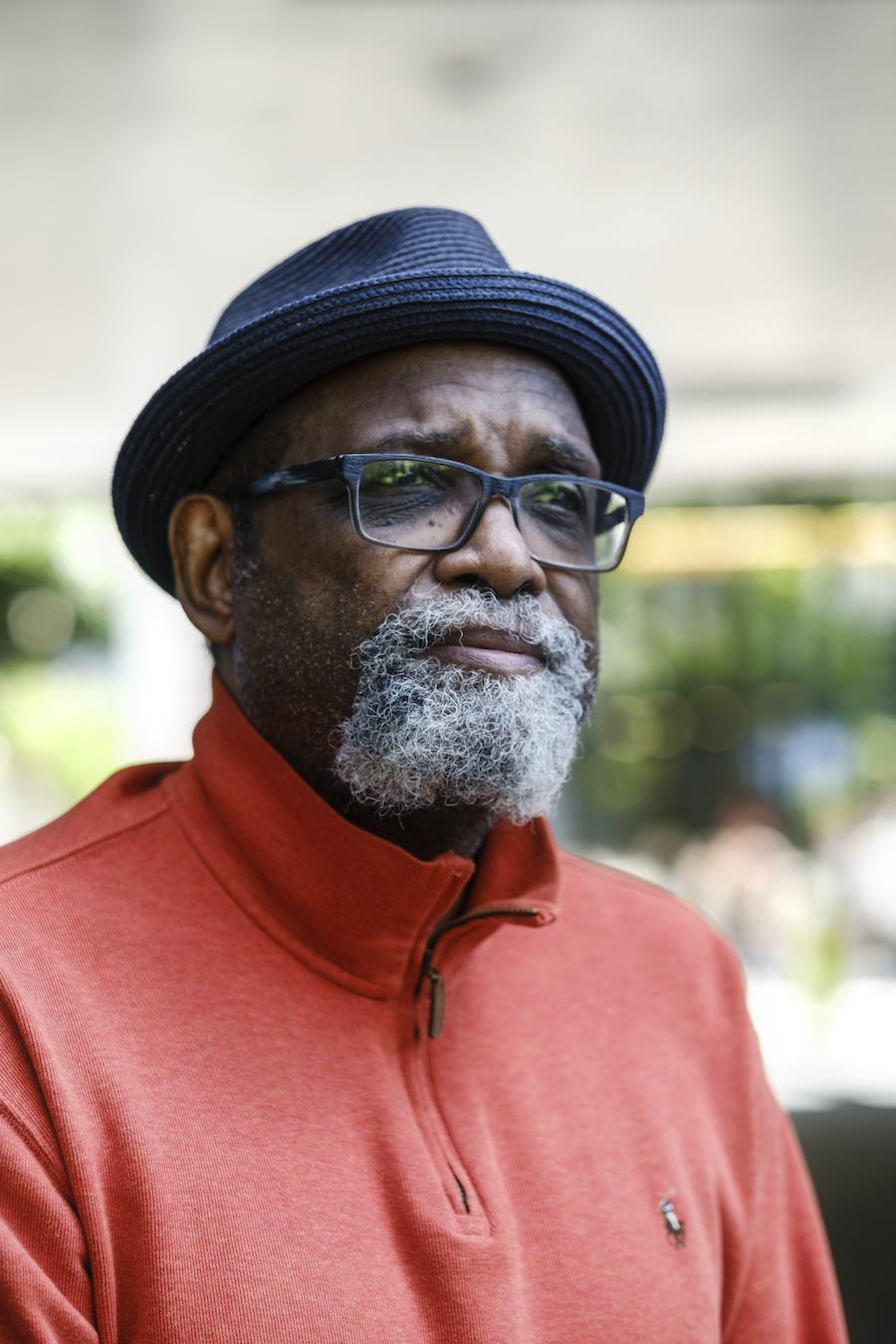
Acclaimed documentary director Sam Pollard revisits the infamous NYC blackout of 1977 for his next feature. (Henry Adebonojo photo)
A new chapter at legendary lit journal Callaloo: Meet Kyla Kupferstein Torres
By LEAH MALLORY Special to the AmNews
Earlier this year, Callaloo, the literary journal that publishes the scholarly and creative work of writers across the African diaspora, welcomed Kyla Kupferstein Torres, its new executive editor and executive director of the Callaloo Foundation, Inc., marking the beginning of a new chapter for the storied publication.
Settling into her new role, Torres is excited to carry forward the vision of her predecessor, Dr. Charles H. Rowell, while adding her own touch.
“He’s seeded this incredible route, and things have been a bit fallow, but the seeds are all there,” she says. “Once I put it out there, I usually get a lot of enthusiasm back. Wherever I go, people are excited to hear that Callaloo is back.”
Torres assumed leadership in January, seasoned by an extensive career in education, literature, and publishing—all of which made her stand out to Melvin White, chairman of the board of the Callaloo Foundation, Inc.
“She brings a wealth of experience in publishing journals, but she also is quite knowledgeable about nonprofits and fundraising,” he says. “And thirdly, she is deeply knowledgeable of Black literary genres, and she knows the mission of Callaloo [and] what it’s been doing for [the last] 50 years.”
Mark Winston Griffith, a longtime friend and new board member, says that Torres’s combination of creative and administrative skills makes her a great fit for the job.
“I think that when it comes to something like running a literary journal, that’s exactly what you need, right? If you have someone who’s a great writer of fiction but doesn’t know how to run an organization [or] doesn’t know how to publish a magazine, then they’re not right for the position. If you have someone who’s good at pumping out publications but has no love, respect, and honor for Black literature, then they don’t belong there [either]. And so I think she carries those two threads, those two streams, with her into the work.”
In her new role, Torres explains

that she has four main priorities: returning the journal to its quarterly publishing schedule; fundraising; finding a new university home; and reinvigorating interest in the journal both nationally and internationally.
Dr. Rowell’s retirement in 2020, followed by the disruption caused by the COVID-19 pandemic impacted the journal, veering it away from its usual course of business over the past four years.
Torres says the journal’s publications have been sporadic in recent years, but that they’re on schedule to publish four issues this year.
“Right now, we’re going through a period of stabilization. We’ve published five issues over five years,” she says. “I’m really pleased and proud to say that we are on track, not just to do the four, but to really have our first issue of the next volume prepared. We’re cooking with gas, and we will reach that goal.”
Fundraising is also a pressing concern for the self-funded publication, as well as securing a university home— an affiliation that remains critical for its longevity. Until 2020, Callaloo was always affiliated with a university. It
began at Southern University and has spent the longest part of its life at Texas A&M. The foundation relied on these relationships to produce the journal, explains White. However, since Dr. Rowell’s retirement, the journal has been without a home, requiring Callaloo to produce it themselves.
“Because Callaloo is a scholarly journal, and universities bring scholarship and scholars …. particularly universities that are prominent in the Black literature space, African American studies, and global African American studies, diaspora studies,” he says. “It just brings the most forward-thinking academic minds in those spaces to Callaloo, and so the creativity that comes out of that university setting is integral to what Callaloo has done for the past 50 years.”
While the journal primarily exists in print, online issues are also available at an affordable cost. However, Torres says they are looking for other ways to engage people with the journal, mentioning an upcoming symposium to be held at Howard University in the fall.
“That’s just about how we bring people into conversation about compelling issues. How do we have tough conversa -

tions, things that maybe in the Black community we don’t like to talk about a lot?” she says.
Along with events like the symposium, Torres wants to increase digital engagement with readers.
“I think that we have to figure out a way to have more dynamic content available online to bring people in and have a home on the internet that is content-rich, that people want to engage with and interact with,” she says. “As opposed to just a place where you can buy the journal or subscribe to it, or access an article or interview for pay. I think we have to figure out a balance between those things.”
Torres’s goals and aspirations represent a new era for the journal, embodying a generational shift vital for its continued existence, White explains.
“The long-term vision is to
ensure the publication of the journal in perpetuity. Kyla is essential to that mission. First of all, she represents a generational change; a connectivity between what I would call the senior generation and, importantly, the young and upcoming generation to make Callaloo more relevant to them,” he says. “We’re living in a different age now of social media and so forth, and we’d like to see Callaloo inhabit those spaces. Kyla brings the perspective, the skills, and the connections to make all of that happen.”
As Torres adjusts to her role, she moves forward with profound reverence for the publication. “It’s a very lucky thing for me that I found my way to the job,” she says. “I have a great deal of responsibility and a great deal of dedication to ensuring that it’s done well.”
Callaloo executive editor Kyla Kupferstein Torres. (Kike Arnal photo)
(Image courtesy of Callaloo)
AmNews Dance Calendar July 2024
By CHARMAINE PATRICIA WARREN Special to AmNews
This month’s calendar highlights Aakash Odedra Company at Lincoln Center’s Rose Theater as part of India Week (July 11-12) in the U.S. premiere of “Samsara,” inspired by the classic Chinese novel “Journey to the West.” “Samsara” describes itself as “a dance piece that traces the steps we take, both forward and backward, in search of our higher selves. Drawing from the heart of Buddhist philosophy, ‘Samsara’ explores some of the 81 obstacles and six states of mind that can hold us back. Epic mythological storytelling merges with personal experience and anecdotes from two globally opposite perspectives, in a highly visual landscape,” notes the release. This event is choose-what-you-pay. For more information visit www.lincolncenter.org.
STILL RUNNING:
Through Aug. 11: Choreographed by Arturo Lyons and Omari Wiles, “Cats: The Jellicle Ball” is the reimagining of Andrew Lloyd Webber’s iconic musical based on T. S. Eliot’s “Old Possum’s Book of Practical Cats” and is also inspired by the ballroom culture that roared out of New York City over 50 years ago and still rages around the world. The play is staged as a spectacularly immersive competition by Zhailon Levingston (“Tina: The Tina Turner Musical, Chicken & Biscuits”) and PAC NYC Artistic Director Bill Rauch (“All the Way”), with all-new Ballroom and club beats, runwayready choreography, and an edgy and elegant makeover that moves the action from junkyard to catwalk. Come one, come all, and celebrate the joyous transformation of self at the heart of “Cats” and ballroom culture itself. For more information visit https://pacnyc.org.
Through Sept. 29: At Arts on Site, choreographer Jessica Chen brings back “AAPI HEROES,” where audiences follow a young explorer, Kai, on a captivating journey across time to meet AAPI HEROES. For more information visit www.ticketleap. com
ALSO THIS MONTH:
July 11: The American Tap Dance Foundation (ATDF) will be honored at the New York Public Library for the Performing Arts, Bruno Walter Auditorium. The celebratory evening will include live performance, speeches, a screening of archival footage reflecting on the history of the foundation, plus the presentation of a Lifetime Achievement Award to Tony Waag, ATDF founding artistic/executive director. This event is FREE and open to the public. Registration is advised https://www.eventbrite.com/e/acelebration-of-the-american-tap-dancefoundation-tickets-886479884197
July 11: As part of the “Works & Process” series, Maimouna Keita African Dance Company, It’s Showtime NYC!, and Kash


Gaines share the stage. For more information visit https://cityparksfoundation.org.
July 13: The DynamitExperience!, founded by Winston Dynamite Brown and Latra Wilson will be featured as the first resident company of Earl Mosley’s Institute of the Arts. For more information visit www. eventbrite.com.
July 24-Aug. 24: This year’s Flamenco Latino’s annual Más Allá Series, (“Way Beyond”) series centers on the tongue in cheek notion that “We’ve Been Here Before,” a direct response to the rise of authoritarian ideas in United States, told through lyrics both sung and rapped, features guest artists Omar Edwards (tap) and Paige Stewart (hip-hop). For more information visit www.flamencolatino.com.
Jul. 24: Women in Motion, a volunteerrun organization whose mission is to foster female choreographers, will present Symara Sarai’s “I want it to rain inside,” “an exploration of the complexities of black queer femininity and the magic of its vulnerability,” according to the release. For more information visit www.tickettailor.com.
Jul. 28: Urban Bush Women brings “Haint Blu | Episodic Chapters” to Lincoln Center as they celebrate their 40th Anniversary with their site responsive ensemble dancetheater work, seeped in memory and magic. For more information visit www.lincolncenter.org
Jul. 29: At the Ailey Citigroup Theater, Dance Magazine’s “25 to Watch” celebration returns to showcase the list of rising
stars in the dance world: Jindallae Bernard, Miguel Alejandro Castillo, Yuval Cohen, Lucy Fandel, Naomi Funaki, Karla Puno Garcia, Sydnie L. Mosley, Donovan Reed, Kaitlyn Sardin, Kia Smith, Danielle Swatzie, and Erina Ueda. For more information visit https://store.dancemedia.com.
Jul. 30-Aug.3: Five of NYC’s dance companies—Ballet Hispánico, Alvin Ailey American Dance Theater, American Ballet Theatre, New York City Ballet, and Dance Theatre of Harlem—return for the fourth annual BAAND Together Dance Festival, as part of Lincoln Center’s third annual Summer for the City. This year the performance moves indoors to the David H. Koch Theater. For more information visit www. lincolncenter.org.
Company of “Cats: The Jellicle Ball” at PAC NYC (Marc J. Franklin photo)
Aakash Odedra Company (Mark Gambino photo)
Arthur Crudup wrote the song that became Elvis’s first hit. He barely got paid
By BEN FINLEY Associated Press
FRANKTOWN, Va. — Arthur “Big Boy” Crudup helped invent rock ‘n’ roll.
His 1946 song “That’s All Right,” an easygoing shrug to a lover, would become the first single Elvis Presley ever released. Rod Stewart would sing it on a chart-topping album. Led Zeppelin would play it live.
But you wouldn’t have known it if you saw Crudup living out his later years on Virginia’s Eastern Shore, dressed in coveralls and leading a crew picking cucumbers, tomatoes and sweet potatoes.
Despite being dubbed “the father of rock ‘n’ roll,” Crudup received scant songwriting royalties in his lifetime because of a recording contract that funneled the money to his original manager. Crudup died 50 years ago, leaving behind one of the starker accounts of 20th century artist exploitation.
“Of course materialistic things don’t mean everything,” said Prechelle Crudup Shannon, a granddaughter. “But they took so much more than just money. They left him with all of the burdens of a poor Black man. And even more so because they left him with a broken heart.”
In recent years, Crudup has received flashes of recognition. He was briefly portrayed by Gary Clark Jr. in the 2022 biopic “Elvis” and mentioned last year by a California reparations task force examining the long history of discrimination against African Americans.
The 70th anniversary of Presley recording “That’s All Right” was last Friday—many historians consider July 5 a cultural milestone—and comes as the state of Virginia plans a highway marker honoring Crudup.
“Among others who covered Crudup were the Beatles, B.B. King, and Elton John,” the marker will state. “Rarely receiving royalties, Crudup supported his family as a laborer and farm worker.”
‘A brand new thing’
Crudup was born in 1905 in Forest, Mississippi, and started singing the blues when he was about 10, he told Blues Unlimited magazine. By 14, he was working in a foundry. It wasn’t until his 30s that he took up the guitar. Self-taught, he played parties and nightclubs in the Mississippi Delta.
In Chicago, seeking a better job, he busked and slept in a crate under an L station. One evening on a street corner, Crudup met Lester Melrose, a white field agent for Bluebird Records.
“He put a dollar in my hand and asked me to play,” Crudup told High Fidelity magazine. Arguments abound over who wrote the first rock ‘n’ roll song. But “That’s All Right,” mixing elements of blues and country, stakes a strong claim.
“It doesn’t sound like country, it doesn’t sound like blues, although I can hear them in there,” said Joe Burns, a professor of communications and media studies
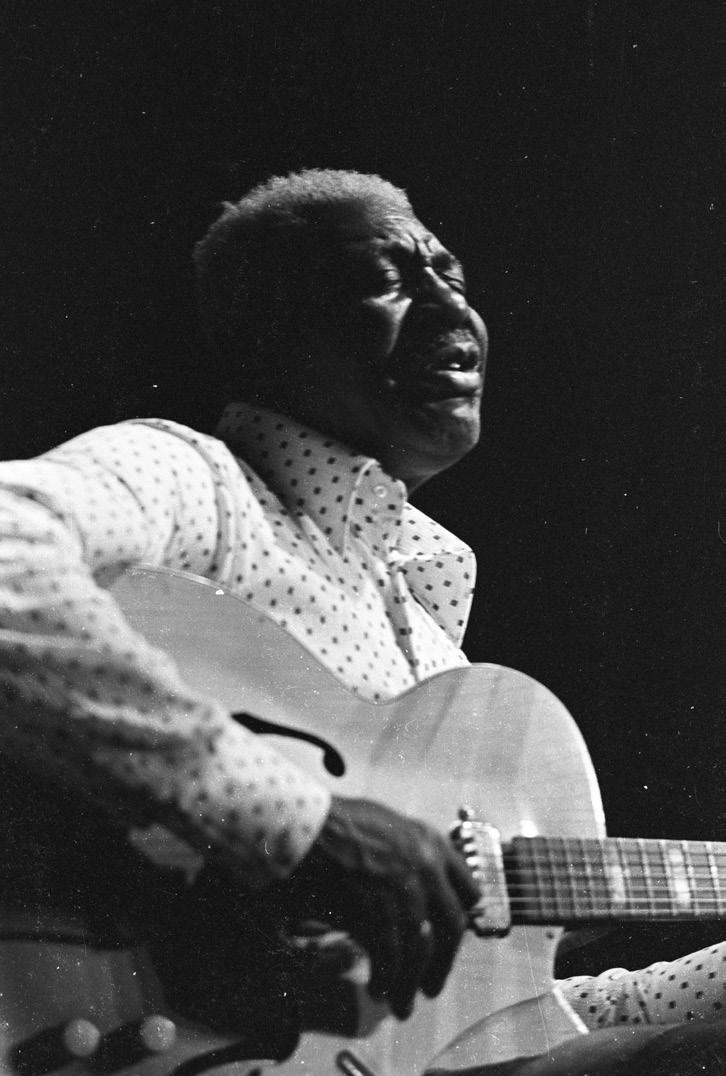
Sun label and set him off on what would soon become his almost unimaginable path to stardom,” Guralnick tells The Associated Press.
Although Crudup is often elided from accounts of Presley’s rise, the singer did publicly credit the songwriter.
“Down in Tupelo, Mississippi, I used to hear old Arthur Crudup bang his box the way I do now,” Presley told The Charlotte Observer in 1956, “and I said if I ever got to the place I could feel all old Arthur felt, I’d be a music man like nobody ever saw.”
Crudup himself liked Presley’s interpretation.
“He made it into a kind of hillbilly record,” Crudup later told the Los Angeles Times. “But I liked it. I thought it would be a hit. Some people like the blues, some don’t. But the way he did it, everyone liked it.”
In the early 1960s, Crudup finally got a sizable royalty check—for $1,600. But Melrose refused to turn over the copyright.
Many Black musicians signed over copyrights or were forced to share them, Southwestern Law School professor Kevin J. Greene said. “A huge chunk of what we’re talking about in terms of exploitation is still under copyright,” said Greene, who testified before the California reparations task force.
But Crudup continued to live on Virginia’s Eastern Shore, a narrow peninsula between the Chesapeake Bay and Atlantic Ocean. Shannon remembers her silverhaired grandfather holding her as a toddler on his Franktown porch, a cigarette dangling from his lips.
“He had these very, very long limbs,” recalled Shannon. “He just seemed like a giant to me.”
Tim Prettyman worked at the pharmacy where Crudup often picked up insulin, coffee and Camel cigarettes. One time, a suit-clad Crudup arrived with a guitar case, bound for a bus to New York and a plane to England.
“He said, ‘I’m going to play music for the Queen,’ and winked at me and smiled,” Prettyman remembered.
‘Ain’t meant to be’
Near the end of his life, Crudup almost got a settlement for $60,000, over $400,000 today.
at Southeastern Louisiana University. “It really is a brand new thing.”
Crudup recorded some 80 songs for Bluebird between 1941 and 1956, including “That’s All Right,” “My Baby Left Me” and “So Glad You’re Mine.” He held the rights to none.
His original manager had them.
“I wouldn’t record anybody unless he signed all his rights in those tunes over to me,” Melrose once said, according to Alan Lomax’s book, “Mister Jelly Roll.”
Crudup spent years off and on in Chicago, recording songs there and returning south by bus to work jobs in Mississippi.
One was hauling trash for $28.44 a week.
“I had the family to take care of, a car note to pay off, a gas bill, a light bill,” Crudup said. He left music in his early 50s to work on farms.
‘A kind of hillbilly record’
In 1954, Presley was on a break during his tryout session in Sun Studios when “this song popped into my mind that I had heard years ago,” according to Peter Guralnick’s book, “Last Train to Memphis.”
Sam Phillips, the studio’s legendary founder, immediately recognized Crudup’s song. Phillips was amazed the 19-year-old knew it and felt his version “came across with a freshness and an exuberance.”
A Memphis, Tennessee, radio station soon broadcast Presley’s recording. The response was “instantaneous,” with phone calls and telegrams asking the station to replay it, Guralnick wrote.
“It was by far Elvis’s biggest seller on the
In 1971, Downbeat magazine estimated that Crudup probably should have earned over $250,000—nearly $2 million today— from “That’s All Right,” as well as “My Baby Left Me,” which Creedence Clearwater Revival recorded.
The American Guild of Authors and Composers even tried to collect royalties on Crudup’s behalf. But its then-managing director, John Carter, told High Fidelity in 1972 that Crudup had been paid “at most $2,500” from the guild’s efforts.
Playing in a packing shed
By his mid-50s, Crudup had settled in Franktown, Virginia. He was heartbroken by his experience, his granddaughter said. But he didn’t wallow.
“One of the things that my father emphasized was that he was an extremely principled man,” Shannon said of Crudup, who embodied “those old country values” of working hard and supporting one’s family.
Etna Nottingham Walker, whose family owned the Virginia farm where Crudup worked, said that “if you didn’t know that it was Arthur Crudup and he was a musician, you wouldn’t have singled him out.”
Butch Nottingham, Walker’s cousin, worked on the farm too. During breaks, he said, Crudup sometimes pulled out a guitar and sang in the packing shed where they washed and waxed cucumbers.
Crudup did eventually return to music, during the 1960s blues revival. Music producers from two labels, Fire and Delmark, tracked him down. He released new albums, played festivals and shared stages with B.B. King, Taj Mahal and Bonnie Raitt.
Melrose was dead. A deal had been arranged with Hill & Range, the company that had acquired Crudup’s publishing rights. But when Crudup and four of his children arrived in New York, they learned the deal was off, according to the book “Between Midnight and Day,” written by Crudup’s final manager, Dick Waterman. They were told a settlement would cost the company more money than a potential lawsuit would yield. And suing meant “going after an old white widow who lives in Florida,” Waterman wrote. “We wouldn’t have a chance.”
“It just ain’t meant to be,” Crudup told Waterman. “Naked I come into this world and naked I shall leave it.”
Indeed, a settlement came only after Crudup’s 1974 death. Chappell Music refused to go forward with buying Hill & Range until the Crudup matter was resolved. The first check was slightly more than $248,000, Waterman wrote, with Crudup’s estate receiving around $3 million over the following decades.
Now Warner Chappell Music, the publishing company declined to comment because the events were so long ago.
Jeanette Crudup, the widow of Crudup’s son Jonas, said the payments to the musician’s children paled in comparison to what should have been received during his lifetime.
“They got the crumbs from it,” she said. Crudup still remains relatively unknown, even on the Eastern Shore, said Billy Sturgis, a local resident who produced an album by Crudup’s sons. Sturgis hopes the historical marker will help. But, he said, Crudup belongs in the Rock & Roll Hall of Fame, alongside Presley and the many others who sang Crudup’s songs. Crudup’s granddaughter agreed.
“It would be something if this story was unique,” Shannon said. “But it’s not. We know this has happened to Black artists throughout time, but specifically back then.”
This image provided by the estate of Dick Waterman, shows Arthur Crudup performing in 1970. Crudup wrote the song “That’s All Right,” which Elvis Presley later recorded for his first single. (Dick Waterman via AP photo)
Café Melo mirrors Harlem history with unique tribute
By BRENIKA BANKS Special to the AmNews
African American identity lives on in Harlem through Blackowned businesses and art. A mirror artwork titled “I Saw Myself Expand” celebrates the Schomburg Center for Research in Black Culture. This mirror piece, along with four others, all pay homage to Harlem’s iconic locations, and the mirror exhibit is on display at Café Melo, which has been open now for two years. This Blackowned Harlem space, according to their site, is fueling creativity, community and connection through art, wellness, and culture. From Decatur, Georgia, artist Saint James, 27, used mosaic tiles, glass pieces and fire glass to bring his art to life. He aimed to capture the magic and creativity of Harlem with his mirrors following a similar design featuring an important place or person at the top.
The Schomburg Center idea in “I Saw Myself Expand” was inspired by James’s analytical views on the research building’s “innovation and expansion through innovation and education.” Artists and writers were on James’s mind as he put together art puzzle pieces to create his interpretation of the Schomburg and its corresponding affirmation in glass. Stevie Wonder, Solange Knowles, cityscapes, nature, and “Harlem Mecca of the New Negro” by Alain Locke are all featured on this mirror.
“In all the mirrors, things are coming from different times and [are] compounded into one piece together,” said James. “I took an African-ish approach to time and this belief that the past, present and future are all happening right now; we’re not separate from our ancestors, we’re not separate from the people who are going to come back for us.” James uniquely designs a channel for Black excellence and how the Harlem Renaissance still affects artists and creators in the present day. Engravings and designs related to the Schomburg and other iconic figures have “I am” affirmations at the bottom of each artwork. A beam of light, made from fire glass represents Harlem’s greatness, starting small and then expanding diagonally across the mirror. “Let’s keep expanding,” said James.
James’s choice of using a mirror instead of a canvas or paper is meaningful and intentional. “It’s all about initiating this reflec-
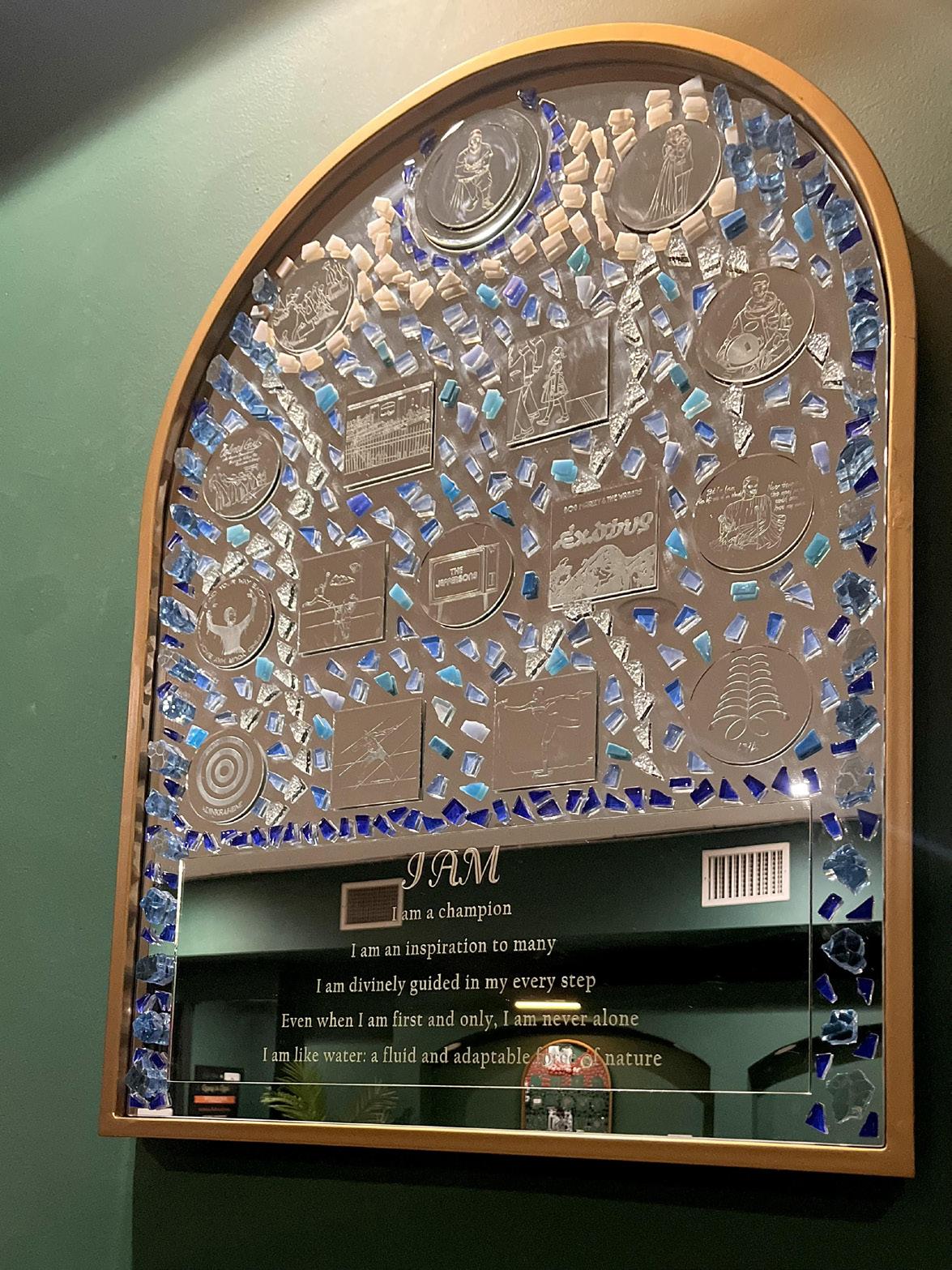
tive period or reflective state for people viewing it,” said James. The viewer must reflect on themselves while viewing what the mirror is presenting. “I want them to be reflecting on themselves and reflecting on everything that they’re seeing in the mirror themselves, the engravings and the words,” said James. “You can go between looking at the images on the mirror and looking at yourself and oscillate between those two and hopefully see yourself.”
Another piece, “I Saw Myself for Myself’s Sake” is dedicated to the 135th Street Station at St. Nicholas Park. The affirmation for this one reads: “I am supposed to be here, I am enough simply for being […] I am inspired and empowered by healthy routines.” James describes how someone visiting the exhibit should view this mirror: “I was thinking about the everyday person getting on the train, going to work, getting off work—trying their best, and what that person should see in themselves or needs to see after a long day of work.”
Dwight A. Smith, owner of Café
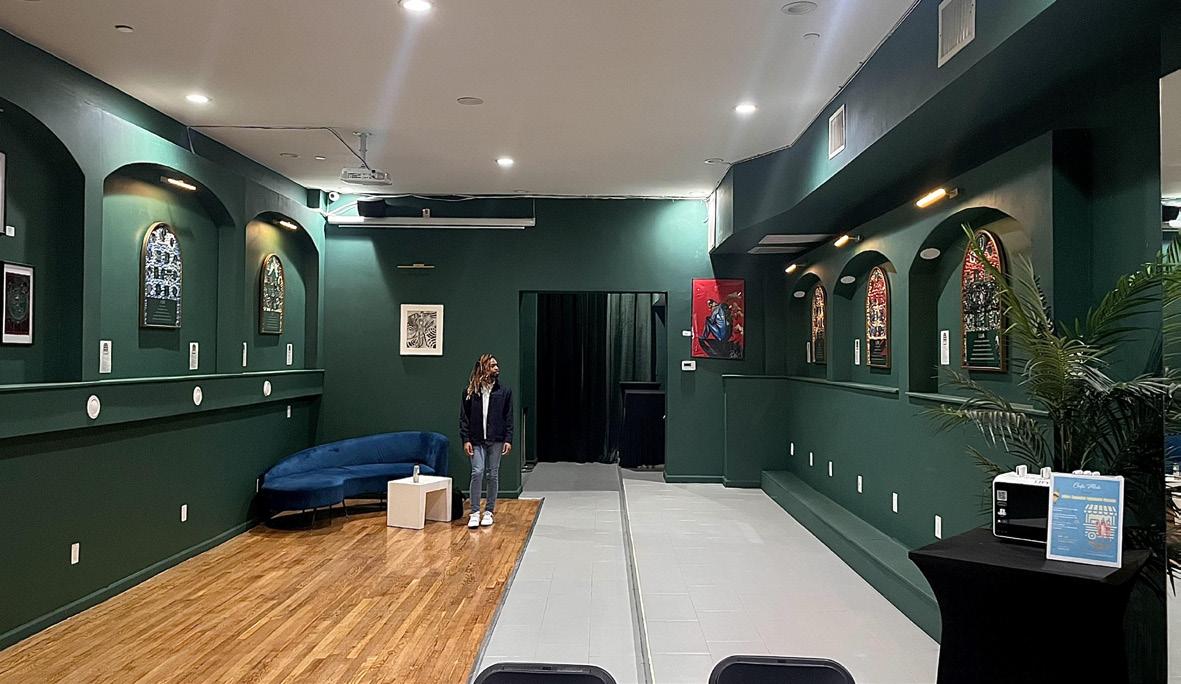
Melo, calls the “I Saw Myself for Myself’s Sake” his favorite one. “For me, it’s the colors, the Jet magazine [engraving] – the transit, train station, hustle and bustle, it has it all.” Smith, born and raised in Harlem, likes the normalcy and realness of 135th Street and how many people commute and pass through this station. He refers to the 135th Street station as a “common denominator” and how riding the subway, especially for those who aren’t from NYC is “an experience.”
James’s previous experience teaching film and photography to fourth graders at Harlem Children’s Zone and wanting to expand their young minds inspired his mirror artwork. Using a green screen, he showed the children how to put themselves on billboards, bus stop posters and on the marquee at the Apollo Theater. “This [mirror] project came from that,” said James.
“It was an evolution of wanting other people in Harlem to see themselves on the same plane as cultural giants, as institutions
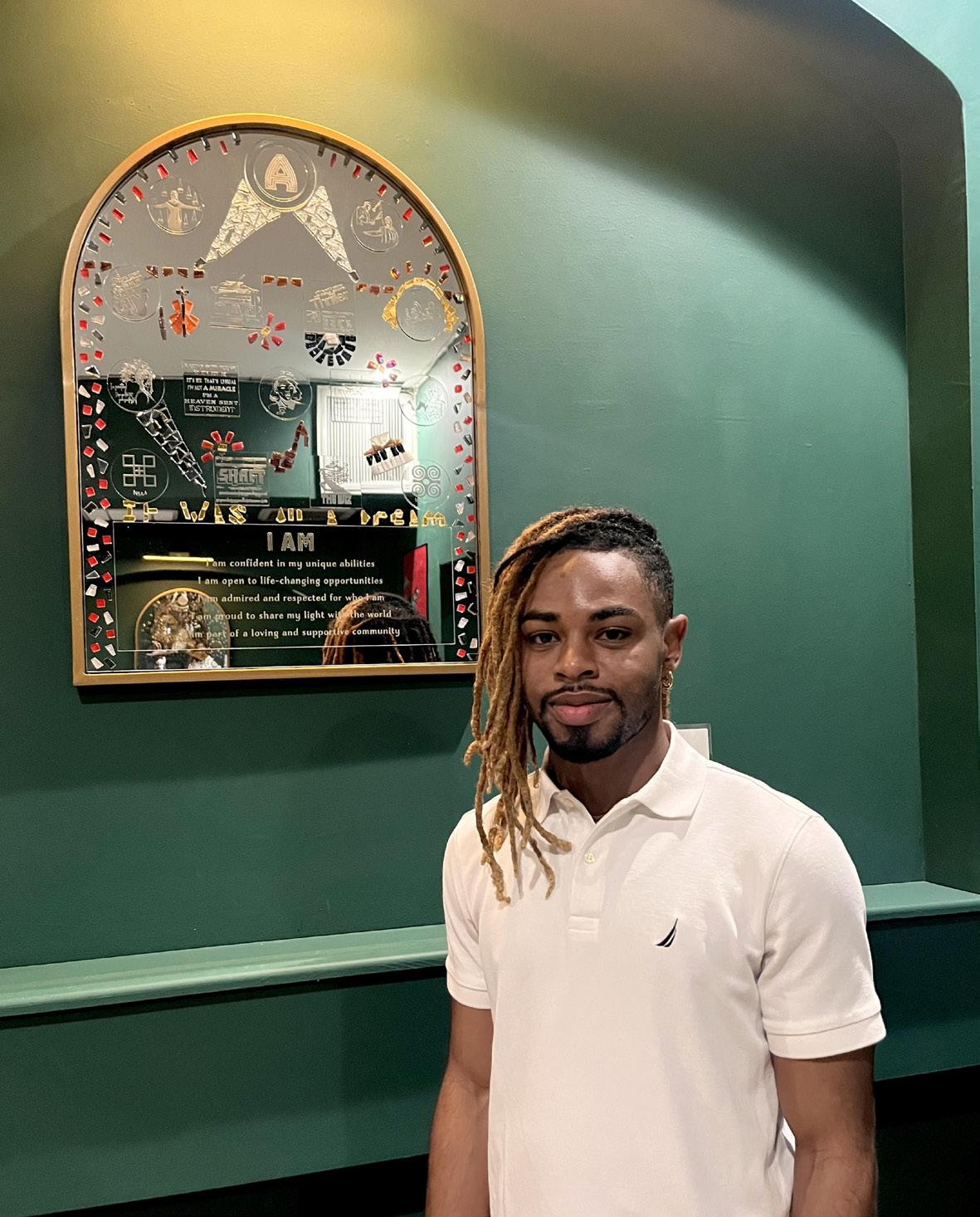
within the community.”
Smith was very impressed with James’s mirror artwork when he initially unveiled them. Smith admired the designs James had for his art and the essential messages behind all five mirrors. The powerful meanings resonated with him, and he wanted the art on exhibit at Café Melo. “The fact that a young man at this stage in his life wanted to create something to dedicate to these institutions that have plenty of history and wants to send a positive message—it was a no brainer for me,” said Smith.
“If you look historically in Harlem, especially during the Jazz
Era, it’s not only people who were born in Harlem that contributed to the culture,” said Smith. He is grateful for those who came from different places, providing different perspectives that added to the greatness of Harlem. He believes James represents the iconic community extremely well. “He’s definitely acknowledging Harlem is a mecca of culture and he’s here to add to it,” said Smith. He also mentioned the importance of James and his art preserving the rich culture and history of Harlem, especially as gentrification continues.
For more info, please visit www. cafemelo-harlem.com
Saint James’s mirror artwork “I Saw Myself Move” dedicated to Jackie Robinson Park about movement; breaking through; being the first one to achieve. (Brenika Banks photos)
Saint James with all five of his mirror pieces at Café Melo in Harlem.
Saint James posing in front “I Saw Myself Perform” art dedicated to the Apollo Theater at Café Melo.
Book Review: ‘Hamilton Heights and Sugar Hill: Alexander Hamilton’s Old Harlem Neighborhood Through the Centuries’ by Davida Siwisa James
By KAREN JUANITA CARRILLO Amsterdam News Staff
Harlem’s Sugar Hill and Hamilton Heights neighborhoods boast tree-lined blocks and mansion-like brownstones. They have long been desirable neighborhoods and inspired locals to step back and recognize the sophistication and complex culture that surrounds them.
In her new book, “Hamilton Heights and Sugar Hill: Alexander Hamilton’s Old Harlem Neighborhood Through the Centuries,” Davida Siwisa James recalled her shock every time she witnessed “the pitying looks and remarks that greeted me whenever I mentioned that I had once lived in Harlem...Trying to convince people that Hamilton Heights and Sugar Hill were beautiful neighborhoods, with stunning architecture and mansions, fell on deaf ears,” she writes in the book’s preface.
James makes a concerted effort to document the history-rich trajectory of Sugar Hill and Hamilton Heights in her book. “Hamilton Heights and Sugar Hill” is a detailed account of the growth of these Harlem neighborhoods—and how that growth was in line with the overall development and increasing significance of Manhattan. Referencing documents that point to the arrival of the Dutch in the 1600s and detail their construction of stone houses, farms, and forts as they moved throughout the Lenape people’s Mannahata island, the book explains how Harlem started out as faraway farmland, miles from downtown Manhattan; was incorporated as the Village of New Haarlem in 1658; and came to be seen as a country retreat for the wealthy in the 1700s.
The area’s earliest Black residents were enslaved farmworkers although, over time, “Freed Blacks who were still working uptown had begun to form pockets of
communities,” James writes.
Harlem Heights (as the combined areas of Sugar Hill and Hamilton Heights were then called) is where George Washington and his Revolutionary War soldiers were sequestered at the Morris Mansion after fighting the Battle of Harlem Heights. By 1800, Alexander Hamilton had meticulously planned and had his only home, the Grange, constructed at 141st Street and Amsterdam and Convent Avenues.
In the 20th century, Harlem was home for Victor Hugo Green, author of The Negro Motorist Green Book, when he lived at “938 St. Nicholas Avenue at 158th Street in Sugar Hill, across the street from Duke Ellington.” Madame Stephanie St. Clair—“Harlem’s Policy Queen,” who fought to keep Mafia figures like Dutch Schultz from controlling Harlem—lived at 409 Edgecombe Avenue;other residents of this building included New York Yankees’ baseball player Babe Ruth, future United States Supreme Court Justice Thurgood Marshall, and civil rights activists Walter White and W. E. B. Du Bois. In 1943, First Lady Eleanor Roosevelt visited the home of civil rights activist/politician Hubert T. and Willetta Delany at 467 West 144th Street as they tried to drum up support for the Harlem Activities Committee of the Colored Orphan Asylum.
The book ends with a sweeping account of the buildings, businesses, and streets that have been affected by modern-day gentrification, and looks at how this has changed Sugar Hill and Hamilton Heights—and Harlem as a whole. James offers an encyclopedic accounting of two of Harlem’s historic neighborhoods— and a reminder of why area residents should never bow their heads when naming these neighborhoods as their home.
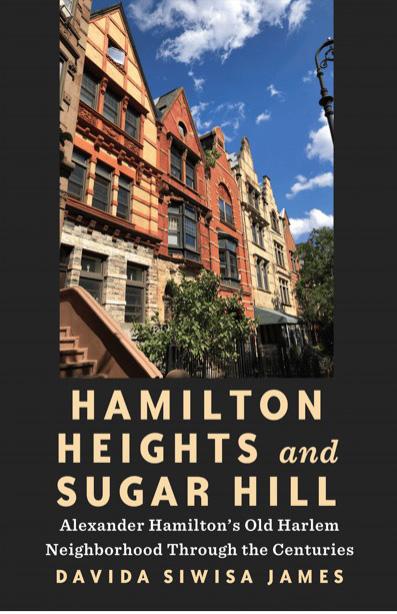
Book cover for “Hamilton Heights and Sugar Hill: Alexander Hamilton’s Old Harlem Neighborhood Through the Centuries” by Davida Siwisa James
Shakespeare in Harlem’s Marcus Garvey Park
The Classical Theater of Harlem presents “A Midsummer Night’s Dream,” starring Russell Peters as Nick Bottom, at the Richard Rodgers Amphitheater in Marcus Garvey Park on Tuesdays through Sundays from July 6–28, with performance
times at 8:30 p.m. Since Central Park’s Delacorte Theater, the usual location for Shakespeare in the Park, is closed for renovations, the Harlem location is seeing overflow crowds. For more info and to RSVP, visit www.eventbrite.com.





(Bill Moore photos)
Dick Griffin Big Band, Jazz in July, St. Albans Fest

The trombonist, composer and artist Dick Griffin, who usually leads small ensembles down interesting paths, will take another exciting journey this time with his 18-piece Big Band, making an appearance on July 17 at Hudson River Park, Pier 84 (555 12th Avenue) at 7 p.m.. This show is free and open to the public. “I have been writing music for big band since I was in college,” said Griffin. “Last year at this venue I had the opportunity to present some of it, but I have so much more of this music to share.” Griffin has extensive experience playing with big bands led by Lionel Hampton, Count Basie, Cab Calloway, Thad Jones/Mel Lewis Orchestra, Frank Foster, Illinois Jacquet and Sun Ra. “I love big bands, I hear it in different possibilities outside of what Duke and Count Basie were doing,” said Griffin. “But I also hear some traditional styles as well. Big band is about the whole sound, it’s more about highlighting instrumental sections as opposed to solos in smaller groups.” The Mississippi native was in New York during the 1970s downtown “Loft jazz scene,” and was a long-time member of Sam Rivers’ Rivbea Orchestra. Griffin has been rehearsing variations of his big band for over a year at the Musicians Union Local 801. He said, “these rehearsals and the upcoming gig at the pier allows me to extend the music with multiple possibilities.” Some of the band members will include trombonist Frank Lacy, trumpeters James Zoller and Jon Mark McGowan. This event is sponsored by the Jazz Foundation of America.
92NY (1395 Lexington Avenue) is set to present one of New York’s favorite music events, Jazz in July, under the artistic directorship of pianist Aaron Diehl, who was hand-picked by its previous artistic directors Dick Hyman and Bill Charlap. This 39th season of concerts are in person and online with six concerts from July 17-27. Building on what his predecessors established, Diehl is presenting an expanded jazz vocabulary with fresh colorful interpretations of the American Songbook. The piano has been a centerpiece of Jazz in July with a legacy of performances by the instrument’s most renowned artists, including Hank Jones, Cedar Walton, Marian McPartland, and Barry Harris, along with the festival’s first artistic directors, Dick Hyman and Bill Charlap. The happening kicks off on July 17 with Kenny, Benny & Bop! Featuring NEA Jazz Master Kenny Barron and Benny Green leading a five-pianist celebra-

tion in two piano configurations featuring the creative imagery of Helen Sung, Joe Block and Diehl with the lively rhythm support of bassist Peter Washington and drummer Willie Jones III. Some highlights of Jazz in July include: July 20, Singers and the Song with three generations of remarkable jazz vocalists Marilyn Maye, Catherine Russell, and Ekep Nkwelle, accompanied by the Aaron Diehl Trio.
The unmatched Marilyn Maye at age 96 is far from retiring with her illustrious career swinging over eight decades with big doses of cabaret, pop and jazz. Catherine Russell is a song stylist and a storyteller, who sings the blues in vivid vignettes that hug your emotions and grab your attention. Her magical artistry allows her to take rarely heard jazz tunes and turn them into polished gems. She was influenced by her father, the great bandleader Luis Russell, and her mother, vocalist and guitarist Carline Ray, former member of early all-female band the International Sweethearts of Rhythm.
The 25-year-old Cameroonian American Ekep Nkwelle is a vocalist of the futureNow. She effortlessly reconstructs jazz standards and sings the blues in her own unique style. She was a finalist in the Sarah Vaughan Vocal Competition. Nkwelle has opened for both Cécile McLorin Salvant and Regina Carter, performed
with classical musician Lang Lang, Jazz in July bows for its finale on July 27 with the inventive visionary, composer and multi-instrumentalist Tyshawn Sorey Trio and Warren Wolf. The drummer will be playing with his ongoing collaborator vibraphonist Wolf and bassist Yasushi Nakamura rounding out the trio. Pianist Diehl, another longtime associate of Sorey’s, will also add his creative perspective to the trio. “I will be pushing some boundaries of the great American Songbook which is a living document from Gershwin to Wayne Shorter,” said Sorey during our recent interview. This season’s concerts are in 92NY’s Kaufmann Concert Hall and the recently renovated Buttenwieser Hall at the Arnhold Center. Shows are 7:30 p.m.. For a complete schedule and ticket information visit www.92ny.org/jazzinjuly.
The borough of Queens has a long history of jazz dating back to those days when such jazz royalty as Count Basie, Louis Armstrong, Lena Horne and Roy Haynes (now living on Long Island). That vibrant legacy continues on July 20, (4 p.m.-10 p.m.) at the St. Albans Annual Jazz & R&B Festival at St. Albans Park/Archie Spigner Park (conamed after the longrunning New York City councilman), on Merrick Blvd & Sayres Avenue in Jamaica, Queens. The festival’s guest performer will be sax-
ophonist and composer Najee. Although he is basically known for his smooth jazz niche, he studied early on in Jazzmobile’s education program, under the tutelage of saxophonist greats Jimmy Heath and Frank Foster. Let’s not let the category of smooth jazz fool you. Najee is a well-equipped musician, who plays good music as confirmed by those who have requested his playing diversity such as vocalists Jeffrey Osborne, Phil Perry and Patti LaBelle, a three-year stint with Prince and straight-ahead with Herbie Hancock, Billy Cobham, Stanley Clarke and George Duke. For his contribution to the world of music, Najee, a former Queens resident, will be presented with the Key to the City by NYC Mayor Eric Adams. Others on the roster will include the Earth Wind & Fire Tribute Band, “My Shining Star Tribute,” co-founded by vocalist Kevin Morris and drummer Frank Bellucci. “We have been playing the music of our favorite group for over seven-years,” explained Morris. “We formed the band out of our love for EWF and a desire to share their music and keep their legacy alive. The ensemble consists of 10-members, who regularly play throughout the New York region. Also on board will be DJ Hollywood and esteemed radio personality Dr. Bob Lee. This event is free and open to the public for further information call Black Spectrum Theatre at 718-723-1800.
Marilyn Maye, Catherine Russell and Ekep Nkwelle (Images courtesy of 92NY)
Squatting
of glamorized city grit. People learned to build barricades, rig booby traps, and incite riots whenever faced with the possibility of eviction. This led to escalated and hostile police tactics throughout the ’80s, culminating in the cops resorting to tanks and helicopters by the ’90s.
Squatting was also seen as a way to push back against gentrification, displacement of residents by private developers, and racist eviction tactics, such as when Association of Community Organizations for Reform Now (ACORN) members took over 25 buildings in East New York in Brooklyn in 1985.
Author Amy Starecheski, in her account of the squatting movement in her book “Ours to Lose: When Squatters Became Homeowners in New York City,” wrote that by 2002, the city had conducted secret negotiations, agreeing to sell the LES squatted buildings for a dollar each to the Urban Homesteading Assistance Board (UHAB). The nonprofit took out loans on the squatters’ behalf to renovate the buildings, bring them up to code, and then convert them to low-income co-operatives (co-ops). About five of the 11 buildings in LES were converted by 2013 in a long, messy process, Starecheski wrote.
This time period in the state’s history essentially cemented squatter’s rights, meaning that a person who can move into someone else’s property and live there without the owner knowing for at least 30 days is technically considered a tenant and cannot be evicted by the homeowner or police without a judicial process, even if that person broke in illegally to begin with.
Earlier in April of this year, four people were arrested who were squatting in a partially evacuated house with dilapidated conditions on Livermore Avenue on Staten Island. This June, Hanks combined forces with Sen. Jessica Scarcella-Spanton at a press conference
City charter
Continued from page 3
Adams tasked charter commissioners with reviewing the city charter in its entirety, with a particular emphasis on public safety and “fiscal responsibility.”
The mayor’s preliminary report outlines how Adams’s mandates often clash with the City Council’s stance, which has been the case several times since Adams took office, over issues like City Fighting Homelessness and Eviction Prevention Supplement (CityFHEPS) housing vouchers, the How Many Stops Act, and the solitary confinement ban in jails.
That’s where the controversy builds.
“People have to vote and they have to get engaged and they have to recognize when there are power grabs happening at the local level,” said Racial
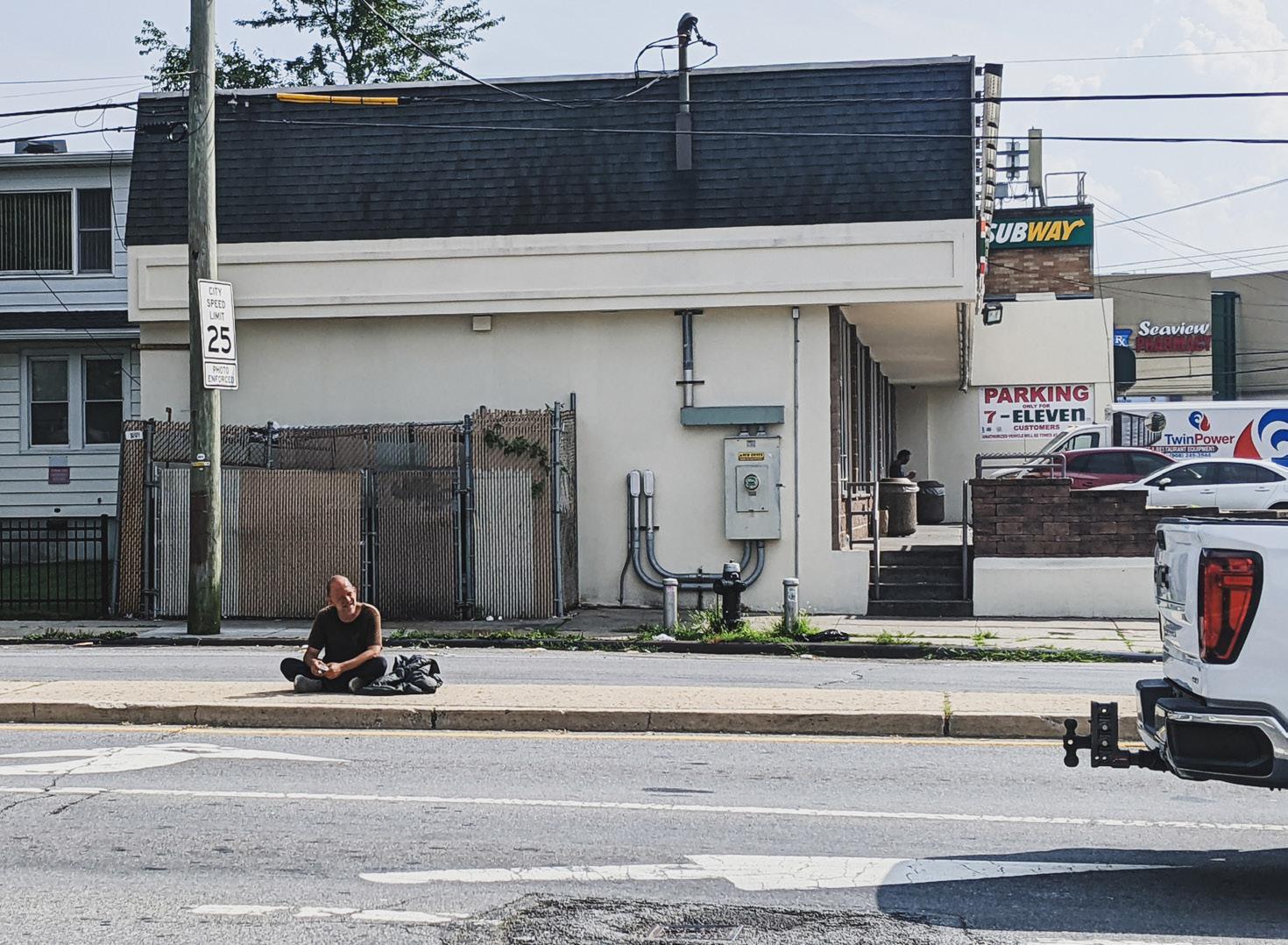
in front of 108 Tysen Street in New Brighton where another instance of squatting was found. James Clinton of District Attorney Michael McMahon’s office explained that the Tysen Street house was up for sale when the Realtor discovered a person living there. The police were able to use camera footage from the owner’s security system to secure a conviction since the squatter didn’t meet the 30-day threshold, Clinton said.
Antoinnette Donegan, a Mayor’s Action Plan for Neighborhood Safety (MAP) Engagement Coordinator (MEC) for Stapleton and West Brighton NYCHA Houses, confirmed that the issue of squatting was not just about homeowners in the North Shore district.
As of February 2023, 2,964 of 4,500 NYCHA apartments on the island were on the North Shore, accommodating 6,370 residents, said the state comptroller’s report. “This issue affects these residents as well. There are issues with folks living in vacant apartments, on the
Justice Attorney Lurie Daniel Favors.
“The mayor right now has a charter commission that has practically put a report [out about] hearings that no one either knew about or attended. I’m curious that they already have a report out, and it’s essentially to go around the City Council.”
Favors added that it’s time to understand, as a community, that Black representation in government is only part of the solution. “I think when you have skinfolk who are acting in ways and initiating policies that wouldn’t be done under a mayor that wasn’t part of the community, we would be in the streets protesting,” said Favors.
Others disagree with the power grab notion and believe the Charter Revision Commission is being conducted in good faith, especially by some of the commissioners themselves, who have dedicated time and resources to carrying out the hearings.
roof, and in the lobbies,” Donegan said. She said the perpetrators are a combination of migrants desperate for housing and the fact that security doors in the two NYCHA developments she oversees don’t work, which lets anyone enter even if they don’t live there.
The squatting instances this year prompted Scarcella-Spanton to get the rules around squatter’s rights changed in the recently passed state budget. The term “squatter” was excluded from the definition of tenant, allowing for the DA’s office to charge people more easily with burglary and criminal trespassing in criminal court if they are discovered living in someone else’s home, said Clinton. At the moment, the DA relies on direct calls from the community to report instances of squatting since there’s no required city or state reporting about it—according to the NYPD, the police don’t track that information on “that level of specificity.”
Hanks introduced Int. 0872, a bill that creates
Black New Yorker
Continued from page 5
Shorne did as he was told: He went to college, and because he comes from a business-oriented family, he figured he’d also go down the path to a finance-related career. He ended up working in a bank, learned about stocks, and could often be found eating at New York City’s fine dining establishments. After a while, he noticed that there were not many Caribbean sitdown fine dining restaurants. That’s when Shorne said he began toying with the idea of opening a restaurant of his own.
Just as the luster was beginning to fade on his banking job, the 2008 financial crisis hit, and he lost his job. At age 30, Shorne was jobless—but he did have a year and a half’s severance payment. He started wondering, what next? How could he reinvent himself? That is when he decided to pursue his culinary dream.
an interagency taskforce to remove squatters, help them find legitimate housing, communicate with the owners of abandoned buildings, and better identify squatted properties.
“The creation of a permanent task force will not only save time and resources, but also ensure a more coordinated and efficient response to squatting incidents,” Hanks said.
Dealing with a similar issue in her district in south Brooklyn, Councilmember Susan Zhuang also introduced Int. 0907 this May, which calls for an amendment to the city’s administrative code to report on squatting locations. Her office said that in the last five months, homeowners in Dyker Heights had their homes burned down because of squatters and the hardest part is identifying which buildings squatters are in.
“It’s something that’s become more prevalent in recent years as we’ve seen the unhoused population in our city increase. We don’t have the proper solutions needed,” Zhuang’s office said.
Her district is composed of a diverse immigrant community, with people from Asian, Russian, and Muslim backgrounds. Zhuang’s office said that many of the afflicted homeowners in her district who are dealing with squatters struggle with a language barrier, and therefore don’t always get the help they need in housing court.
“Most of them didn’t know who to reach out to or ask for help, and so these things have been stuck in housing court or dealing with squatters in their homes for years,” her office said. “We talked to someone a month ago who was in housing court for 10 years with an interpreter because they don’t know how to speak English and couldn’t navigate [the system] themselves. It’s an incredible financial burden put on predominantly immigrant families. The bill is needed to understand who this is happening to and how this is happening…this is still really dramatically hurting immigrant families more than families that have the means and understanding of the legal system to fight this.”
After attending the French Institute Of Culinary Arts (now the International Culinary Center), Shorne’s non-traditional take on Caribbean cuisine won him invitations to national and international catering gigs. During the pandemic, he catered meals for private customers and, just for fun, would film himself experimenting on new dishes and post the results to his Instagram page.
“It’s been a real blessing in terms of how people respond, and that’s what I wanted to do: get the message out of where I am as a chef and how I could make simple food taste good,” Shorne said.
A major part of Shorne’s flavor profile is an evocation of the food his grandmother used to make in Saint Lucia; that’s one reason he wants to keep cooking: He wants to keep her legacy alive.
“I think food is how you see a culture or the way you say you love somebody,” he said. “I just do it differently. I create my cooking from the center, and the center is like raw, pure energy and creativity.”
Photo of a man sitting on the ground on Seaview Avenue on Staten Island. (Ariama C. Long photo)
CLASSROOM IN THE
Grace Nail Johnson expanded her family’s renown in civic and cultural affairs
By HERB BOYD Special to the AmNews
Last week, we featured John E. Nail, so now we keep it in the family with a profile of his sister, Grace, whose life is no less remarkable than that of her brother and her father. She was born on February 27, 1885, in New London, Conn., and her parents were prominent business and civil rights activists, most notably John B. Nail.
The child of an enormously successful family, Grace’s renown was extended through her involvement in cultural affairs during the Harlem Renaissance, as well as her marriage to James Weldon Johnson. To list just a portion of the organizations and institutions would exhaust the parameters of this article, but her commitment to the NAACP and several feminist groups cannot be excluded.
In 1904, more than a decade or so before the Harlem Renaissance gained momentum, she met Johnson, one of the progenitors of the movement, who was visiting New York. They met at a theatrical production, confirming their similar proclivities in art and culture. It took awhile before their relationship solidified, mainly through correspondence while Johnson was U.S. Consul to Venezuela and later Nicaragua. Their engagement occurred five years later and they were married on February 3, 1910, at the family’s home in Brooklyn.
They spent the first years of their marriage in Corinto, Nicaragua, and Grace adapted well to their diplomatic life, in the process studying Spanish and French. In 1912, she traveled to New York to oversee her husband’s writings. Although it’s merely speculation, she may have been spirited away to protect her from the revolution that was brewing in the nation. Even before the possibility of revolt, Johnson had grown weary of the tropics and, on several occasions, requested a transfer, one that was finally granted in 1912, which permitted him to rejoin Grace in the States.
After James left consulate work, the Johnsons next lived in Jacksonville, Fla., where he managed a theater, and even tried his hand at writing screenplays. One
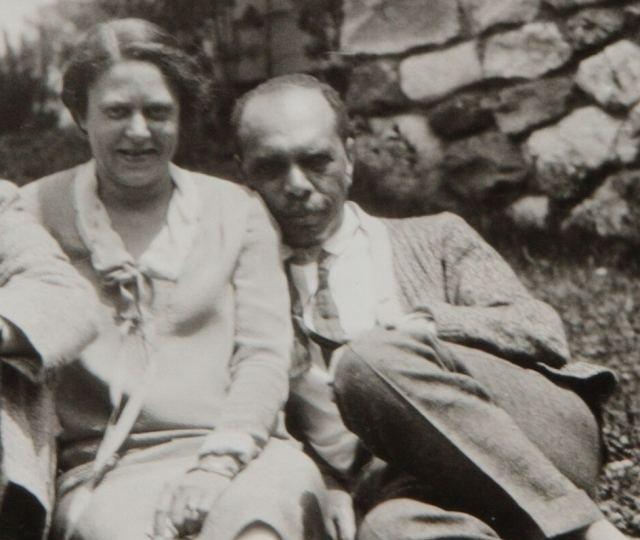
of them was so disgusting to him that it ended his interest in the pursuit. Grace was ready to leave long before, having about as much as she could digest of the Southern experience. By 1914, they were back in New York, according to Eugene Levy’s biography of Johnson.
They returned to Manhattan just as the Harlem Renaissance was sprouting, and Grace, with her usual flair and congeniality, immersed herself in a variety of social affairs, hosting one cultural event after another. She was often proclaimed “the hostess with the mostest” and was invited to head several events sponsored by the NAACP, Heterodoxy Club (its only African American member), Anti-Lynching Crusaders, and Circle of Negro Relief. In 1929, after the Renaissance was no longer booming, she founded the NAACP’s Junior League.
In 1932, she toured the South with author Nella Larsen, which was her toe in the water that led to her deep
involvement in promoting children’s literature, mostly in association with the poet Langston Hughes. Her fame and acclaim were influential in local and national political circles, so much so that First Lady Eleanor Roosevelt often included her in White House discussions, along with other notables such as educator Mary McLeod Bethune.
Six years later, when they were driving to their summer home in Great Barrington, Mass., Levy wrote, “The weather was threatening and Grace soon found herself driving through a blinding rainstorm....[As they were driving] across an unguarded railroad crossing, a speeding train bore down on them…Johnson was fatally injured, dying a few minutes after being freed from the wreckage. Grace survived, was seriously injured, and was destined to spend many weeks in the hospital.”
It was often rumored that lightcomplexioned Grace could have
passed for white and possibly did in the company of her cousin Frances Cohen, recalled Sondra Kathryn Wilson in her book “Meet Me at the Theresa.” She and Mrs. Johnson looked like sisters rather than cousins. People in the hotel [Theresa] knew that Mrs. Cohen was passing as white. She and Mrs. Johnson became reacquainted after her husband died...Around the Theresa, folks used to say that once Mrs. Johnson got on that Fifth Avenue bus to head downtown, when the bus hit 110 Street, she didn’t speak to any Black people from Harlem.” This attitude must have changed once she took up residence in the Lenox Terrace complex.
Wilson concluded that it was from her apartment in Lenox Terrace: “She spent the remainder of her life perpetuating the legacy of her husband...She died at her home in Harlem on November 1, 1976, at the age of 91.” She is buried in Greenwood Cemetery in New York City.
ACTIVITIES
FIND OUT MORE
As noted above, Sondra Kathryn Wilson is a good resource and Ellen Tarry’s obit in the NAACP’s The Crisis is informative.
DISCUSSION
More could have been said about Grace Nail Johnson’s early years and it may be found in the many books about the Johnsons in Harlem.
PLACE IN CONTEXT
Grace Nail Johnson lived through the exciting and memorable Harlem Renaissance and the Civil Rights Movement, where she was more than a witness.
THIS WEEK IN BLACK HISTORY
July 7, 1972: Basketball legend Lisa Leslie was born in Inglewood, Calif.
July 8, 1914: Vocalist and musician Billy Eckstine was born in Pittsburgh, Pa. He died in 1993.
July 10, 1943: Tennis immortal Arthur Ashe was born in Richmond, Va. He died in 1993.
Grace and James Weldon Johnson (Courtesy of the Free Encyclopedia)
Infant mortality rate rose 8% in wake of Texas abortion ban, study shows
By DEVI SHASTRI AP Health Writer
In the wake of the Texas abortion ban, the state’s infant death rate increased and more died from birth defects, a study published Monday in the journal JAMA Pediatrics shows.
The Texas law blocks abortions after the detection of cardiac activity, usually five or six weeks into pregnancy, well before tests are done to detect fetal abnormalities. The analysis from Johns Hopkins University is the latest research to find higher infant mortality rates in states with abortion restrictions.
The researchers looked at how many infants died before their first birthday after Texas adopted its abortion ban in September 2021. They compared infant deaths in Texas to those in 28 states— some that also have restrictions. The researchers calculated that there were 216 more deaths in Texas than expected between March and December the next year.
In Texas, the 2022 mortality rate for infants went up 8% to 5.75 per 1,000 births, compared to a 2% increase in the rest of the U.S., according to the study. Among causes of deaths, birth defects showed a 23% increase, compared to a decrease of about 3% in the rest of the U.S.
“I think these findings make clear the potentially devastating consequences that abortion bans can have,” said study co-author Suzanne Bell, a fertility researcher.
Doctors have argued that the law is too restrictive toward women who face pregnancy complications, though the state’s Supreme Court last month rejected a case that sought to weaken it.

Infant deaths are relatively rare, Bell said, so the team was a bit surprised by the findings. Because of the small numbers, the researchers could not parse out the rates for different populations, for example, to see if rates were rising more for certain races or socioeconomic groups, but the results did not come as a surprise to Tiffany Green, a University of Wisconsin-Madison economist and population health scientist who studies the consequences of racial inequities on reproductive health.
Many of the people getting abortions are vulnerable to pregnancy complications, said Green, who was not part of the new research.
nancies with fetal anomalies need extra support, education, and specialized medical care for the mother and newborn—all of which require resources.
Green said the results were in line with earlier research on racial disparities in infant mortality rates due to state differences in Medicaid funding for abortions.
Stephen Chasen, a maternal-fetal medicine specialist with Weill Cornell Medicine, said abortion restrictions have other consequences. Chasen, who had no role in the research, said people who carry out preg-
The Associated Press Health and Science Department receives support from the Robert Wood Johnson Foundation. The AP is solely responsible for all content.


People march through downtown Amarillo, Texas, to protest lawsuit to ban abortion drug mifepristone. Two years after U.S. Supreme Court ended nationwide right to abortion, travel and pills have become big parts of issue (AP Photo/Justin Rex)
Education Assemblymember Landon Dais secures additional $1 million in STEM grants for Bronx schools
By YASMIN MINOS Special to the AmNews
Bronx Assemblymember Landon Dais and his team are touting their success in securing an additional $1 million in grants totaling $2 million for STEM programs at 10 local Bronx public schools—the largest technology grant ever awarded to District Nine schools, he said.
The funding will go toward obtaining new equipment, fostering new programs, and enhancing existing STEM facilities.
“The reality is the future of jobs and schools is going to be heavily technology-based, especially [with] the advent of artificial intelligence and other technical skills, so what I wanted to make sure is that the children in my district, District Nine in the Bronx, don’t fall behind,” Dais said.
Dais added the grants will aid in a brighter future not only for students but also for the Bronx as a whole. “I want them to be
the future of engineers, architects in the Bronx. I want them to build new affordable housing in our boroughs,” he said.
The goal is to create a proper basis from the beginning in elementary and middle school so students are better prepared for what comes next in high school, college, and life after school.
Previously, many of the challenges to STEM education in the district were simply a lack of “access to capital” and the fact that the schools weren’t made a priority, Dais said. That is something he hopes to remedy.
“I made it a priority, and I think that made a difference. I think you just got to make sure that the administration of [grant support] isn’t held up by red tape,” Dais said.
“I’m going to work with my superintendent and principals to take account of it.
I’m going to make sure there’s no funny accounting. This is really necessary—got to make sure that it is not only executed but also executed in an efficient manner.”
Members of the community have expressed their excitement about the funding, including Principal Sharda Flores of P.S. 53 Basheer Quisim. Flores and the teachers at P.S. 53 were in the midst of discussions about creating a STEM lab even before receiving news of the grant, which made the news of the funding they would receive a dream come true.
“Knowing that we now have $200,000 to create a fully functioning lab site versus ‘Hey, let’s put some stuff together’—it means the world to my kids, because my children truly believe in that tactile learning,” Flores said. “Kids will come to school if they know they have technology this day. The idea is to make learning cyclical and to make it enjoyable every day, so our kids are coming to school, our kids are motivated.”
Flores sis also looking forward to reactions from parents and the community at large.
“To know that we’re having this fully funded grant—it means the world to
me…I’m getting chills talking about it. We posted it on our social media page, and parents were through the roof, they were so excited. They were more excited…just to know that their kids are going to have access to all these different learning [tools].”
Flores described STEM education as especially important because it provides students with a “new avenue to explore learning”; one that will provide a fuller, more comprehensive way of learning that allows students with different learning styles to remain engaged.
Securing the grant is an impressive feat for Dais within his first three months in office.
“These kids are special. They just need the opportunity and the tools to allow them to be successful, and that’s our job,” Dais said. “That’s what I believe that is my job to do: to give them the opportunity to be successful, be the best version of themselves.”
Texas State Board of Education fields concerns about Christian bias in proposed K-12 curriculum
By JADEN EDISON Texas Tribune
Members of the public told the Texas State Board of Education on Thursday they were worried a proposed elementary school curriculum infused with religious references is too complicated, biased toward Christianity, and below the standards of a classical education.
The public hearing occurred a month after the Texas Education Agency (TEA) unveiled the curriculum and offered the public an opportunity to share their thoughts with the body that will decide whether to approve the materials.
An initial review by the Texas Tribune of the proposed textbooks showed that religious references are featured prominently, with texts sourced from the Bible being the most heavily used.
The curriculum promotes, for example, lessons about Leonardo Da Vinci’s “The Last Supper” alongside the Gospel of Matthew, which centers on Jesus’s crucifixion and its atonement for human sin.
References also include the parable of the good Samaritan in a social studies unit and teaching “Do unto others as you would have them do unto you” in a kindergarten

unit about fairy tales and folktales.
TEA Commissioner Mike Morath said last month that the curriculum as a whole, which consists of lesson plans for K–12 students and spans other subjects that don’t include religious references like math and science, is based on extensive cognitive science research and will help improve students’ reading and math scores.
The board will decide whether to approve the curriculum in November. If it does, the decision to adopt the curriculum would rest with school districts. Those that use it will receive an incentive of up to $60 per student. The extra money would be particularly attractive at a time when public schools have not received increased funding from the state legislature in half a decade. Schools are also grappling with expiring pandemic relief money, inflation and multimillion-dollar budget deficits.
The proposed curriculum has drawn praise from top Republican officials while raising eyebrows among some school district
leaders, parents, and education advocates. Much of the same was true Thursday, when people expressed discontent with the materials.
Some people who spoke before State Board of Education (SBOE) members said that after reviewing some of the curriculum’ materials, they found themselves questioning whether children would understand something as complicated as the parable of the prodigal son, a story about sinning and repenting.
Robert Norris, founder of Grandparents for Public Schools, told board members that he is concerned that the materials focus too heavily on Christianity and do not include other religions.
“This could easily lead students to believe that this religion…is the best and most important one in the world,” Norris said. “That kind of messaging does not belong in our public schools.”
Some people don’t see the curriculum as classical education. Chris Byrd, an attorney, said he believed Morath was making curriculum decisions based on what he felt “needs to be the truth.”
Lynn Davenport, whose three children attended school in Richardson ISD, accused See EDUCATIONon page 29
Joe Zamecki protests outside building where Board of Education was holding a meeting (AP Photo/Eric Gay)
As election polls intensify, youth voting has become a point of contention
By ENOCH NAKLEN Special to the AmNews
To the untrained eye, American voters under the age of 25 seem destined to adopt an atypical precedent for how the voting process is perceived.
Ultimately, the initiative to remain involved and engaged within the democratic process has been a challenge youth voters are stepping up to in stride. As the 2024 election cycle beckons new voters to navigate the complexities of American democracy, the landscape is marked by a generation challenging the status quo.
From questioning traditional party politics, to advocating for inclusive civic engagement, young adults are forging paths towards a more representative future.
With tools like social media and grassroots initiatives amplifying their voices, the next generation is poised to shape a democracy that reflects their personal values and aspirations. Still, as the 2024 election polls once again invite new voters to join the fray, ‘mixed opinion’ is the prevailing sentiment.
The two-party system, traditionally seen as the bedrock of American politics, is increasingly being questioned by rapidly evolving young voters who rebel against outdated values that no longer resonate with them.
In response to this two-party system, Che Defreitas, a Posse Scholar studying Black Studies at Middlebury College, proposes an entirely new voting infrastructure that would be more attractive to new voters. “[I] feel like a winner-takes-all election is a bigger problem. Ranked choice would be better,” he said.
Similar sentiments are echoed by weary youth who believe the presidential election process “is in place to create division,” said Aidan Wohl, a student at University of Rhode Island, to the AmNews. Chastity McDougald, a student at Lehman College, added that it “highlights the lack of America’s understanding of democracy.”
Reese Williams, an assistant at African Voices Magazine, identifies social media as the culprit behind many sensationalized views held by young people regarding the
Education
the TEA commissioner of “tickling the ears of the religious right.”
However, others voiced their support for the curriculum. Jonathan Covey, director of policy for Texas Values—a nonprofit organization that describes itself as being dedicated to faith, family, and freedom —encouraged board members to vet the materials to ensure they do not promote any particular viewpoint. He said he believes the curriculum is part of an ac-

election process.
“Not only do we get to see these opinionated highlights…but because of algorithms, we as the audience are susceptible to targeted messaging,” Williams said about prospective voters. Critiques of the American election process dovetails with concerns over decreasing youth voter turnout, exacerbated by social media trends promoting voter abstention. For instance, in 2022, “only 23% of youths in New York participated in local elections,” a stark contrast with the “67% turnout among those aged 65 and older nationally,” according to the Kaiser
ademic and rigorous-based approach to education.
“We think it’s important having the Bible and Bible characters in the curriculum as part of a well-rounded understanding of America’s founding,” Covey said.
Many of the questions posed by board members sought clarification from speakers on certain talking points or materials they provided. Aicha Davis, a Dallas area Democrat who represents the SBOE’s District 13, said she has yet to see any research to back the assertion that the curriculum will improve student outcomes.
“It does seem like it’s experimental,” she said.
Family Foundation.
Despite these challenges, there is hope prevailing within the margins. Pointing to optimism in hope of a more representative democracy, the youth turnout has been recovering, with a “4.3% rise between the 2018 and 2022 midterm elections.” This uptick underscores the potential to narrow the generational voting gap over time.
And contrary to common belief, the presidential election year isn’t the alpha and omega of civic engagement. Every year presents new candidates on the local and state levels who directly influence the lives of communities around NYC.
Jermaine Isaac, president of the Brooklyn Young Democrats, seeks to heighten awareness of year-round civic engagement through interactive activities that expose youth to the power of their vote on locally elected officials.
“The youth are not just the leaders of tomorrow; they are the changemakers of today.”, Isaac said. “By voting, young people can take control of their future and ensure that their voices are heard.”
The right to vote isn’t something to take for granted. This power has been advocated as a tool of security, ensuring that all people are equally represented by the government that serves them. It was under this idea that Jahnavi Rao founded and currently serves as president for New Voters, a Gen Z-led organization that pri -
The proposal comes as part of a larger effort by officials in Texas and across the country to infuse conservative Christianity into public life, perhaps most notably through public schools, which they say are indoctrinating children through their teachings about race, sex and gender.
Religion has also played a role in the push for school vouchers in Texas, which would allow families to use taxpayer dollars to pay for private and religious schools. Throughout the nation’s largest voucher programs, the vast majority of funding is directed toward religious schools, according to a Washington Post examination.
The Texas Legislature passed a mea -
oritizes ‘saving a seat at the table’ for the future protectors of our democracy
“There’s more than enough people in this country that don’t want you to vote,” Rao says. “All we can do is make sure you have the tools to vote if you want to.”
As a leader of over 30,000 eager advocates from various backgrounds all over the country, New Voters touches on a topic that most don’t consider: the vote of those who speak a language other than English. Recognizing the need to connect to all registered voters, New Voters launches campaigns in NYC and beyond in collaboration with ESOL programs aimed at engaging those with an interpersonal interest that may not traditionally connect with primary candidates.
Rao emphasizes the importance of inclusive civic engagement, saying that, “it takes a village to foster complete civic engagement, so being aware of where you are and who needs representation is always at the top of our priority list.”
In line with this commitment to inclusivity, CUNY Votes is one initiative looking to foster effective voter engagement.
Spanning all 25 colleges in the system, CUNY Votes operates as a non-partisan organizer of campus-based activities such as forums, Club Fests, and voter registration drives during freshman orientations. This initiative reaches a student population exceeding 250,000 students.
The goal is to, “promote voter registration, education and turnout through campus-based activities, university-wide campaigns and external partnerships,” a CUNY spokesperson tells AmNews . However, in the digital age, social media serves as a pivotal tool for connecting populations from all backgrounds. Despite its potential for misinformation and exposure to detrimental ideals, Rao argued that social media unfairly receives criticism. She compared navigating social media to interpreting an abstract painting, highlighting individuals’ ability to discern valuable information from misinformation.
“Our youth are the most informed we have ever been,” Rao says. “We just have to make it a habit to stay connected.”
sure last year to allow schools to use unlicensed chaplains in mental health roles. Lt. Gov. Dan Patrick, who presides over the Texas Senate, recently pledged that the legislature would pass a proposal requiring public schools to display the Ten Commandments in classrooms.
Earlier this month, Louisiana became the first state to pass such legislation, resulting in a legal challenge. Oklahoma’s state superintendent Thursday directed public schools to teach the Bible.
(AP photo)
Religion & Spirituality
A journalist honors ancestor at ceremony for Black soldiers who served in Civil War
By DARREN SANDS Associated Press
WASHINGTON, DC—It was the middle of the night in the summer of 2021 when I finally found the missing piece of my family history.
My great-great-great-great grandfather, Hewlett Sands, was born into slavery in Oyster Bay, N.Y., in 1820, and was one of the more than 200,000 names listed on the African American Civil War Memorial in Washington, D.C. That meant he was a soldier who served in a United States Colored Troops regiment that fought for the Union—and the freedom we still celebrate today.
As the computer screen glowed, a mix of emotions—anxiety, elation, pride—washed over me. It was the first step in understanding the story of his life. I want to share what I know about him.
I had to resist the urge to race to the Spirit of Freedom statue and trace my fingers over his name, etched on the nearby Wall of Honor. I held off until the sun came up.

Associated Press reporter Darren Sands points to name of his great-great-great-great grandfather Hewlett Sands, listed with names of other United States Colored Troops soldiers on African American Civil War Memorial during Juneteenth commemorations on Wednesday, June 19, 2024, in Washington (AP Photo/Mark Schiefelbein)
This Juneteenth, I returned to the memorial to honor him and all who served our country—one that spent its first two centuries seeing most of its Black people as someone else’s property. In a special ceremony on Wednesday, I helped carry on the more than 150-year-old com-
Prayer & Praise gathering held at State Office Building
The Christ Embassy Church Manhattan recently held a Prayer & Praise gathering at the Adam Clayton Powell, Jr. State Office Building plaza to pray for the people of Harlem and its communities.
(Bill Moore photos)


memoration of enslaved people in Galveston, Texas, finding out on June 19, 1865, that they’d been freed. It’s been a longtime sacred celebration for many Black Americans, but only recently recognized as a federal holiday.
I didn’t go just for myself or my family. I also wanted to celebrate Frank Smith, a civil rights leader and the memorial’s director, whose work in preserving this lesserknown American history helped me understand where I came from and who I was.
One of Smith’s biggest wishes is for the National Parks Service to assign a full-time ranger to the memorial site. If there was ever a candidate, it would be Marquett Awa-Milton. I first met him when I came to find my ancestor’s name. He serves the memorial daily in full Civil War regalia, and was taking selfies and gladhanding visitors as I arrived.
As the ceremony began, Smith, who once presided over this event with just his staff and very little fanfare, opened the ceremony by welcoming about 150 people, many in the shade as temperatures rose. Smith then asked me and two dozen other volunteers to read the names of soldiers who were in Galveston when the war ended, including the 26th Regiment. After I read Hewlett Sands’s name aloud, I took my wife, Jummy, by the hand and showed her the tiny corner of the memorial symbolizing his sacrifice. I felt again the same mix of pride and gratitude I first felt in the summer of 2021.
“Congratulations on finding your ancestor,” Smith had told me again
In January 1864, Sands collected a $300 bounty and joined the 26th United States Colored Troops infantry regiment, which prepared for war on Riker’s Island, along with thousands of other soldiers. His enlistment papers say he was 42, but in fact he was about to turn 44.
According to military records, his regiment—after enduring rugged conditions in camp—boarded a ship called “Warrior” in March 1864, bound for South Carolina, where they fought in the battle at Honey Hill and other engagements.
last week, as he had in 2021 after I found my connection to Hewlett Sands. I think it is what he says to everyone who finds their ancestor on the wall—a thank you for all those men who sacrificed.
I learned about Sands while researching my family’s history, hoping to interweave it into a book I’m writing about Coretta Scott King’s efforts to transform America into a nonviolent society after the assassination of her husband, Martin Luther King Jr., in April 1968.
Over the many decades since the Civil War, there was a lot of displacement among my ancestors; People moved away and never came back, and a lot of our family stories were lost. I do know that the Sands men served valiantly in World War II.
There was a newspaper headline about “The Sands Family Fights” with a photograph of several of them. We knew a lot more about World War II than about the Civil War.
According to the records I found, Sands was born on Nov. 29, 1820, in the home of the Townsend family, a wealthy and powerful family on Long Island who held many enslaved people before New York abolished slavery in 1827.
It isn’t clear to me how he spent much of his life between 1820 and 1852—he apparently worked as a farm laborer, and even as a clam digger. When he was 32, he met and married a young widow named Anne Amelia Payne, who took Sands as her last name.
In April 1861, Confederates fired on Fort Sumter in South Carolina, igniting the Civil War.
Life after the war for Hewlett Sands was defined by a series of economic hardships. He fell and lost vision in one eye; and he lost an inheritance he intended to pass down to his family through the generations. He died on April 8, 1901, at the age of 81. His and Amelia’s son, James Edward Sands, got married and had two children, one of whom was Alfred Sands. Among Alfred’s children was my grandfather Alonzo, who served with his brothers in World War II. In June 1960, Alonzo and Catherine Sands gave birth to a boy, Lonnie, who is my dad.
Like Hewlett Sands, I grew up in Long Island, in the town of Roslyn, where I developed a love for reading.
I first read about the life of Martin Luther King at the Bryant Library, and by age 11, was giving speeches about him and his impact on my life. It was in Roslyn, as a boy, that I decided I wanted to be a journalist, after a compassionate Newsday reporter visited to get our family’s side of the story for an article about a neighborhood controversy.
Now, working on this Juneteenth story as a journalist, I feel it’s part of my mission to educate and inform people about all of this, and to be able to share it with my dad, my mom—all of my family.
I have a very strong sense of connection to the idea that Hewlett Sands risked his life for not just his family, but a higher ideal. I think all those men shared a sense of doing something that was going to have an impact on generations that they would never meet.
No one living had ever seen Hewlett’s grave, but I went just the other day. On a cloudless day, my dad and I discovered his tombstone, inscribed “Co. D 26th U.S. INF.” Somehow, we felt a little closer to him, and a little closer to each other.










































































































































































































































CLASSIFIED ADS
RULES AND REGULATIONS
CANCELLATIONS must be made in writing by 12 Noon Monday.
The forwarding of an order is construed as an acceptance of all advertising rules and conditions under which advertising space is sold by the NEW YORK AMSTERDAM NEWS. Publication is made and charged according to the terms of this card.
Rates and regulations subject to change without notice. No agreements as to position or regulations, other than those printed on this.
Til forbid orders charged for rate earned. Increases or decreases in space take the rate of a new advertisement.
The New York AMSTERDAM NEWS reserves the right to censor, reject, alter or revise all advertisements in accordance with its rules governing the acceptance of advertising and accepts no liability for its failure to insert an advertisement for any cause. Credit for errors in advertisements allowed only for first insertion.
CLASSIFIED
• Classified advertisements take the regular earned rate of their classification. Four line minimum on all ads except spirituals and horoscopes (14 lines).
CLASSIFIED DISPLAY
• Classified Display (boarder or picture) advertisements take the regular earned rate of their classification. Display (boarder or picture) advertisements one column wide must be 14 lines deep; two columns, 28 lines deep; 3 columns, 56 lines deep. Classified Display (boarder or picture) placed as close to classifications as rules and makeup permit.
CLASSIFICATIONS
All advertisement accepted for publication is classified according to the standard classifications. Misclassification is not permitted.
BASIS OF CHARGE
Charges are based on point size and characters per line. Upon reaching 15 lines the rate converts to column inch. Any deviation from solid composition such as indentation, use of white space, bold type, etc., will incur a premium.
SUMMONS
SUMMONS IN TAX LIEN FORECLOSURE –SUPREME COURT OF THE STATE OF NEW YORK, COUNTY OF NEW YORK– NYCTL 19982 TRUST AND THE BANK OF NEW YORK MELLON AS COLLATERAL AGENT AND CUSTODIAN FOR THE NYCTL 1998-2 TRUST, Plaintiffs, against Annabelle Baires de Garcia-Rossi as Heir and Distributee of the deceased Ernesto Juan Garcia-Rossi and unknown Heirs and Distributees of the deceased last owners of record Dr. Francis A. Garcia-Rossi, Ana Maria Dina Garcia-Rossi,, if living, et. al., Defendants. Index No. 160295/2022 . To the above-named Defendants –YOU ARE HEREBY SUMMONED to answer the complaint in this action within twenty days after the service of this summons, exclusive of the day of service or within thirty days after service is completed if the summons is not personally delivered t o you within the State of New York. In case of your failure to appear or answer, judgment will be taken against you by default for the relief demanded in the complaint. Plaintiffs designate New York County as the place of trial. Venue is based upon the county in which the property a lien upon which is being foreclosed is situated. The foregoing summons is served upon you by publication pursuant to the Order of the Hon. Francis A, Kahn III, J.S.C., dated June 12, 2024. The object of this action is to foreclose a New York City Tax Lien covering the premises located at Block 1342 Lot 1013 on the Tax Map of New York County and is also known as 309 East 49th Street, Unit 3C, New York, New York. Dated: June 14, 2024. BRONSTER LLP, Attorney for Plaintiffs, NYCTL 1998-2 TRUST AND THE BANK OF NEW YORK MELLON AS COLLATERAL AGENT AND CUSTODIAN FOR THE NYCTL 1998-2 TRUST, By: Josef F. Abt, Esq., 156 West 56 th Street, Suite 703, New York, NY 10019 (347) 246-4776
SUPREME COURT-NEW YORK COUNTY- HILTON RESORTS CORP., Pltf. v. HASMAIK ESTEVEZ IT SERVICES, LLC and HASMAIK ESTEVEZ, Defts. - Index # 850115/2022. Pursuant to Judgment of Foreclosure and Sale dated May 15, 2023, I will sell at public auction in Room 130 of the New York County Courthouse located at 60 Centre Street, New York, NY on Thursday, July 25, 2024, at 2:15 pm, an interest of an undivided 0.00493200000% tenant in common interest in the timeshare known as 57TH STREET VACATION SUITES located at 102 West 57th Street, New York, NY. Approximate amount of judgment is $25,164.06 plus costs and interest as of January 4, 2023. Sold subject to terms and conditions of filed Judgment and Terms of Sale which includes annual maintenance fees and charges. Scott H. Siller, Esq., Referee. Cruser, Mitchell, Novitz, Sanchez, Gaston, & Zimet LLP, Attys. for Pltf., 341 Conklin Street, Farmingdale, NY.

SUPREME COURT-NEW YORK COUNTY- HILTON RESORTS CORP., Pltf. v. NAYDA FIGUEROA AND CARISSA R. VILLANUEVA, if living, and if they be dead, any and all persons unknown to Plaintiff, claiming, or who may claim to have an interest in, or generally or specific lien upon the real property described in this action; such unknown persons being herein generally described and intended to be included in the following designation, namely: the wife, widow, husband, widower, heirsat-law, next of kin, descendants, executors, administrators, devisees, legatees, creditors, trustees, committees, lienors and assignees of such deceased, any and all persons deriving interest in or lien upon, or title to said real property by, through or under them, or either of them, and their respective wives, widows, husbands, widowers, heirs-at-law, next of kin, descendants, executors, administrators, devisees, legatees, creditors, trustees, committees, lienors and assigns, all of whom and whose names, except as stated, are unknown to Plaintiff, Defts. - Index # 850135/2020. Pursuant to Judgment of Foreclosure and Sale dated May 10, 2024, I will sell at public auction in Room 130 of the New York County Courthouse located at 60 Centre Street, New York, NY on Thursday, July 25, 2024, at 2:15 pm, an interest of an undivided 0.00986400000% tenant in common interest in the timeshare known as 57TH STREET VACATION SUITES located at 102 West 57th Street, New York, NY. Approximate amount of judgment is $42,303.39 plus costs and interest as of February 9, 2024. Sold subject to terms and conditions of filed Judgment and Terms of Sale which includes annual maintenance fees and charges. Matthew D. Hunter III, Esq., Referee. Cruser, Mitchell, Novitz, Sanchez, Gaston, & Zimet LLP, Attys. for Pltf., 341 Conklin Street, Farmingdale, NY.
SUPREME COURT, COUNTY OF NEW YORK, BOARD OF MANAGERS OF TOWERS ON THE PARK CONDOMINIUM, Plaintiff against CLAUDETH R ADAMS, ALLEN HEZEKIAH, and SECRETARY OF HOUSING AND URBAN DEVELOPMENT, Defendant(s). Pursuant to a Judgment of Foreclosure and Sale entered February 26, 2024. I, the undersigned Referee will sell at public auction at the front steps of the Supreme Court, County of New York, 60 Centre Street, Room 130, New York, New York on the 31st day of July, 2024 at 2:15 p.m.; premises described as follows: All that certain plot, piece or parcel of land, with the buildings and improvements thereon erected, situate, lying and being partially in the Incorporated County of New York, State of New York. Said premises known as 300 Cathedral Parkway, Unit 11K, New York, New York (Block: 1845, Lot: 1110). Approximate amount of lien $136,333.24 and such additional common charges and assessments and late fees, legal fees as may accrue up to the date of sale or so much of it as the purchase money of the mortgaged premises will pay of the same not previously included in the computation and upon presentation of proofs of same to Referee, together with interest thereon pursuant to the common charge lien. Premises will be sold subject to provisions of filed judgment and terms of sale and any amount owed on underlying mortgage. Index No. 157781/2020, Scott H. Siller, Esq., Referee. Ian J. Brandt, Esq, Davidoff Hutcher & Citron LLP Attorney(s) for Plaintiff 605 Third Avenue, 34th Floor, New York, New York 10158 (646) 428-3291
SUPREME COURT-NEW YORK COUNTY- HILTON RESORTS CORP., Pltf. v. ELIZABETH BARON and BRUCE R. BARON, Defts. Index # 850531/2023. Pursuant to Judgment of Foreclosure and Sale dated May 30, 2024, I will sell at public auction in Room 130 of the New York County Courthouse located at 60 Centre Street, New York, NY on Thursday, July 25, 2024, at 2:15 pm, an interest of an undivided 0.00493200000% tenant in common interest in the timeshare known as 57TH STREET VACATION SUITES located at 102 West 57th Street, New York, NY. Approximate amount of judgment is $20,123.92 plus costs and interest as of February 27, 2024. Sold subject to terms and conditions of filed Judgment and Terms of Sale which includes annual maintenance fees and charges. Scott H. Siller, Esq., Referee. Cruser, Mitchell, Novitz, Sanchez, Gaston, & Zimet LLP, Attys. for Pltf., 341 Conklin Street, Farmingdale, NY.
LF 2024 RETAIL LLC. Arts. of Org. filed with the SSNY on 05/09/24. Office: New York County. SSNY designated as agent of the LLC upon whom process against it may be served. SSNY shall mail copy of process to the LLC, c/o Larstrand Corporation, 500 Park Avenue, 11th Floor, New York, NY 10022. Purpose: Any lawful purpose.
SNF Global LLC Arts. of Org. filed with the SSNY on 3/23/2022. Office location: NY County. SSNY has been designated as an agent upon whom process against it may be served & shall mail a copy to: 100 W 31 St Apt 20D, NY, NY 10001. Purpose: Any lawful act.
Notice of Formation of FIVE IRON GOLF KIRKLAND LLC. Arts. of Org. filed with Secy. of State of NY (SSNY) on 2/26/2024. Office location: New York County. SSNY designated as agent of LLC upon whom process against it may be served. SSNY shall mail process to: 883 AVENUE OF THE AMERICAS, NEW YORK, NY 10001. Purpose: Any lawful activity.
Notice of Formation of HAUTE HOME LLC Arts. of Org. filed with Secy. of State of NY (SSNY) on 05/29/24. Office location: NY County. Princ. office of LLC: 17 E. 84th St., Apt. 9A, NY, NY 10028. SSNY designated as agent of LLC upon whom process against it may be served. SSNY shall mail process to Sandi Harris Pleeter at the princ. office of the LLC. Purpose: Any lawful activity.
NOTICE OF SALE In pursuance and by virtue of a Judgment of Foreclosure and Sale duly granted and entered in an action entitled NYCTL 2021-A Trust and The Bank of New York Mellon as Collateral Agent and Custodian for the NYCTL 2021-A Trust v. South Atlantic Trading Ltd., et al., bearing Index No. 157450/2022 on or about February 29, 2024, by the Supreme Court of the State of New York, County of New York, I, the Referee, duly appointed in this action for such purpose, will expose for sale and sell at public auction to the highest bidder on July 24, 2024 at 2:15 p.m., at the New York County Courthouse, 60 Centre Street, Room 130, New York, New York 10007, the liened premises designated as Block 1419, Lot 1740, in the City of New York, County of New York and Borough of Manhattan, State of New York and known as 214/216 East 65 th Street (a/k/a 225/235 East 64 th Street a/k/a 220 East 65 th Street), Unit 18L, New York, New York 10065 , directed in and by said judgment to be sold. The sale will be conducted pursuant to the Court’s Auction Rules and any COVID Restrictions.
Notice of Formation of FAIRVIEW HOUSING I AND II, L.P. Cert. of LP filed with Secy. of State of NY (SSNY) on 05/21/24. Office location: NY County. Princ. office of LP: 30 Hudson Yards, 72nd Fl., NY, NY 10001. Latest date on which the LP may dissolve is 12/31/2123. SSNY designated as agent of LP upon whom process against it may be served. SSNY shall mail process to Corporation Service Co., 80 State St., Albany, NY 12207-2543. Name and addr. of each general partner are available from SSNY. Purpose: Any lawful activity.
Notice of Formation of NORTHCREST GARDENS HOUSING, L.P. Cert. of LP filed with Secy. of State of NY (SSNY) on 05/21/24. Office location: NY County. Princ. office of LP: 30 Hudson Yards, 72nd Fl., NY, NY 10001. Latest date on which the LP may dissolve is 12/31/2123. SSNY designated as agent of LP upon whom process against it may be served. SSNY shall mail process to Corporation Service Co., 80 State St., Albany, NY 12207-2543. Name and addr. of each general partner are available from SSNY. Purpose: Any lawful activity.
LEGAL NOTICE Formation of ARCHIE STUDIOS LLC filed with the Secy. of State of NY (SSNY) on 6/26/2024. Office loc.: NY County. SSNY designated as agent of LLC upon whom process against it may be served. The address SSNY shall mail process to 300 W. 53rd St., Apt. #5B, New York, NY 10019. Purpose: Any lawful activity.
The approximate amount of the judgment is $118,585.40 plus interest and other charges, and the property is being sold subject to the terms and conditions stated in the judgment, any prior encumbrances and the terms of sale which shall be available at the time of sale.
Dated: June 20, 2024 New York, New York Matthew D. Hunter III, Esq. Referee 71-01 Austin Street Forest Hills, New York 11375 (718) 309-1660
David P. Stich, Esq. Attorney for Plaintiff 521 Fifth Avenue, 17th Floor New York, New York 10175 (646) 554-4421
The West Prjct LLC Arts. of Org. filed with the SSNY on 3/14/2024. Office: NY County. SSNY has been designated as an agent upon whom process against it may be served & shall mail a copy to: 110 Horatio St #111, New York, NY 10014. Purpose: Any lawful act.
One Golden Eagle LLC Arts. of Org. filed with the SSNY on 03/23/2024. Office location: NY County. SSNY has been designated as an agent upon whom process against it may be served & shall mail a copy to: U.S. Corp. Agents, Inc., 7014 13th Ave., Ste. 202, Bklyn, NY, 11228. Purpose: Any lawful act.
Crowned Marketing Solutions LLC Arts. of Org. filed with the SSNY on 6/6/2024. Office location: New York County. SSNY has been designated as an agent upon whom process against it may be served & shall mail a copy to: 88 Greenwich St #809, New York, NY 10006. Purpose: Any lawful act.
NOTICE OF FORECLOSURE
AUCTION SALE
Pursuant to a judgment dated January 24, 2023, the property located at and commonly known as 768 5th Avenue, Unit 1126, New York, NY 10019 (Block 01274, Lot 1304) (the “Property”) currently held by Kondo Enterprises, Inc., and the rights together with the Property and related collateral described in the judgment and the mortgage being foreclosed thereby, will be sold to the highest qualified bidder at a public auction to be held at 2:15 PM, EST, on August 7, 2024 in Room 130 of the New York County Courthouse located at 60 Centre Street, New York, NY.
The Property will be sold subject to the terms of the above-referenced judgment (New York County Supreme Court, Index No. 850050/2022), in addition to the terms of sale, by Jerry Merola, Esq., the Referee. The approximate amount of the sums due pursuant to the judgment, as of September 22, 2022, excluding costs and expenses of the sale, reimbursable costs and expenses incurred by plaintiffs in the foreclosure action, additional accrued interest, and protective advances made to preserve the Property through the date of sale, is $411,359.28. For all questions and inquiries, contact James N. Faller, Esq., james. faller@reedsmith.com , +1 (212) 521-5400, Reed Smith, LLP, attorney(s) for Plaintiff, 599 Lexington Avenue, New York, NY 10022.
NOTICE OF SALE
SUPREME COURT, NEW YORK COUNTY, ROYS REALTY GROUP LLC, Plaintiff, against EIGHTH AVENUE 154 LLC, et al., Defendants.
Pursuant to a Final Judgment of Foreclosure and Sale dated January 18, 2024, and entered on February 23, 2024, I, the undersigned Referee appointed in said Judgment, will sell at public auction at the New York County Supreme Courthouse, 60 Centre Street, Room 130, New York, New York, on Wednesday, July 17, 2024, at 2:15 p.m., all that certain plot, piece or parcel of land, with the buildings and improvements situated, lying and being in the Borough of Manhattan and County of New York, State of New York, Block 767, Lot 74. Said premises known as 154 8th Avenue, New York, NY 10001. Premises will be sold subject to the terms of the filed Judgment, Index No. 850022/2022, and the Terms of Sale, all of which are available from Plaintiff’s counsel upon request.
The approximate amount of the Judgment is $8,462,096.48 plus interest and costs, as provided in the Judgment.
The foreclosure sale will be conducted in compliance with the First Judicial District’s Covid-19 Policies concerning public auctions of foreclosed properties and the New York County Foreclosure Auction Rules which can be found on the Court’s website.
Clark Whitsett, Esq., Referee.
Rosenberg & Estis, P.C.
Attorneys for Plaintiff
733 Third Avenue, 15th Floor
New York, NY 10017
(212) 867-6000
Attention: Richard Y. Im, Esq.
NOTICE OF SALE
SUPREME COURT COUNTY OF New York , HMC Assets, LLC Solely in its Capacity as Separate Trustee of Cam XI Trust , Plaintiff, vs . Leo Tsimmer a/k/a Leo E. Tsimmer , ET AL., Defendant(s).
Pursuant to a Judgment of Foreclosure and Sale and Decision + Order on Motion duly entered on April 8 , 2024 , I, the undersigned Referee will sell at public auction at Room 130 of the New York County Courthouse, 60 Centre Street, New York, NY 10007 on August 7, 2024 at 2:15 p.m., premises known as 200 East 58th Street, Unit 16F, New York, NY 10022. All that certain plot, piece or parcel of land, with the buildings and improvements thereon erected, situate, lying and being in the Borough of Manhattan, County of New York, City and State of New York, Block 1331 and Lot 1083 together with an undivided 0.68227 percent interest in the Common Elements. Approximate amount of judgment is $645,401.04 plus interest and costs. Premises will be sold subject to provisions of filed Judgment Index #850209/2020. COVID-19 safety protocols will be followed at the foreclosure sale.
Paul R. Sklar, Esq., Referee Friedman Vartolo LLP, 85 Broad Street, Suite 501, New York, New York 10004, Attorneys for Plaintiff. Firm File No.: 150137-5
SUPREME COURT - COUNTY OF NEW YORK. NYCTL 2021-A TRUST AND THE BANK OF NEW YORK
MELLON, AS COLLATERAL AGENT AND CUSTODIAN FOR THE NYCTL 2021-A TRUST, Plaintiffs -against- KAYLAND REALTY LTD., et al Defendant(s). Pursuant to a Judgment of Foreclosure and Sale entered herein on March 15, 2024, I, the undersigned Referee will sell at public auction in Room 130 of the New York County Courthouse, 60 Centre Street New York, NY on August 14, 2024 at 2:15 p.m. premises situate, lying and being in the Borough of Manhattan, County of New York, City and state of New York, known and designated as Block 1372 and Lot 53 on the New York County Tax Assessment Map. Said premises known as 5 RIVERVIEW TERRACE, NEW YORK, NY 10022
Approximate amount of lien $27,224.10 plus interest & costs.
Premises will be sold subject to provisions of filed Judgment and Terms of Sale. Index Number 160409/2022. RONALD ZEZIMA, ESQ., Referee
Phillips Lytle LLP
Attorney(s) for Plaintiffs 28 East Main Street, Suite 1400, Rochester, NY 14614
Compass Rose Publishing LLC Arts. of Org. filed with the SSNY on 4/27/2024. Office location: New York County. SSNY has been designated as an agent upon whom process against it may be served & shall mail a copy to: 7014 13TH AVENUE, SUITE 202, BROOKLYN, NY, 11228. Purpose: Any lawful act.
STARLIGHT EVENTS GROUP LLC Arts. of Org. filed with the SSNY on 02/24/2024. Office location: NY County. SSNY has been designated as an agent upon whom process against it may be served & shall mail a copy to: 7014 13th Ave Ste 210, Bklyn, NY 11228. Purpose: Any lawful purpose.
NOTICE OF SALE
SUPREME COURT COUNTY OF New York , U.S. Bank National Association as Legal Title Trustee for Truman 2016 SC6 Title Trust, Plaintiff, vs . Moshe RahImi , ET AL., Defendant(s). Pursuant to a Judgment of Foreclosure and Sale and Sale and Decision + Order on Motion duly entered on February 15, 2024 , I, the undersigned Referee will sell at public auction at Room 130 of the New York County Courthouse, 60 Centre Street, New York, NY 10007 on July 31, 2024 at 2:15 p.m., premises known as 635 West 42nd Street a/k/a 627-635 West 42nd Street, Unit 15J, New York, NY 10036. All that certain plot, piece or parcel of land, with the buildings and improvements thereon erected, situate, lying and being in the Borough of Manhattan, County, City and State of New York, Block 1090 and Lot 1351 together with an undivided 0.12612 percent interest in the Common Elements. Approximate amount of judgment is $570,028.95 plus interest and costs. Premises will be sold subject to provisions of filed Judgment Index #850111/2020. COVID-19 safety protocols will be followed at the foreclosure sale.
Paul R. Sklar, Esq., Referee Friedman Vartolo LLP, 85 Broad Street, Suite 501, New York, New York 10004, Attorneys for Plaintiff. File Firm No.: 201235-1
NOTICE OF SALE
SUPREME COURT COUNTY OF New York, The Board of Managers of the 184 Thompson Condominium, Plaintiff, vs. Tet Thye Chan, Defendant.
Pursuant to a Judgment of Foreclosure and Sale and Decision + Order on Motion duly entered on October 5, 2023, I, the undersigned Referee will sell at public auction at Room 130 of the New York County Courthouse, 60 Centre Street, New York, NY 10007 on July 24, 2024 at 2:15 p.m., premises known as 184 Thompson Street, Unit LD, New York, NY 10012. All that certain plot, piece or parcel of land, with the buildings and improvements thereon erected, situate, lying and being in the Borough of Manhattan, County of New York, City and State of New York, Block 525 and Lot 1731 together with an undivided 0.9553 percent interest in the Common Elements. Approximate amount of judgment is $62,853.50 plus interest and costs. Premises will be sold subject to provisions of filed Judgment Index #850156/2022. COVID-19 safety protocols will be followed at the foreclosure sale.
Allison Furman, Esq., Referee Adam Leitman Bailey, P.C., Attn: Courtney Lerias, Esq., One Battery Park Plaza, 18th Floor, New York, New York 10004, Tel: 212.825.0365, Attorneys for Plaintiff
Notice of Formation of NORWALK NORTH HOUSING, L.P. Cert. of LP filed with Secy. of State of NY (SSNY) on 05/21/24. Office location: NY County. Princ. office of LP: 30 Hudson Yards, 72nd Fl., NY, NY 10001. Latest date on which the LP may dissolve is 12/31/2123. SSNY designated as agent of LP upon whom process against it may be served. SSNY shall mail process to Corporation Service Co., 80 State St., Albany, NY 12207-2543. Name and addr. of each general partner are available from SSNY. Purpose: Any lawful activity.
SUPREME COURT - COUNTY OF NEW YORK.
CIPRIANI CLUB RESIDENCES AT 55 WALL CONDOMINIUM, BY ITS BOARD OF MANAGERS, Plaintiff -against- SOLU PROPERTIES LLC, et al Defendant(s). Pursuant to a Judgment of Foreclosure and Sale entered herein and dated February 29, 2024, I, the undersigned Referee will sell at public auction in Room 130 of the New York County Courthouse, 60 Centre Street New York, NY on August 7, 2024 at 2:15 p.m. premises situate, lying and being in the Borough of Manhattan, City, County and State of New York, known as "The 55 Wall Condominium" designated and described as Unit 622. Together with an undivided 0.4804% percent interest in the common elements. Block: 27 Lot: 1033 Said premises known as 55 WALL STREET, UNIT 622, NEW YORK, NY
Approximate amount of lien $45,598.51 plus interest & costs.
Premises will be sold subject to provisions of filed Judgment and Terms of Sale.
Index Number 154426/2023.
ELAINE SHAY, ESQ., Referee Schwartz Sladkus Reich Greenberg Atlas LLP Attorney(s) for Plaintiff 444 Madison Ave., 6th Floor, New York, NY 10022
Notice of Formation of LP PRESERVATION HTC LLC Arts. of Org. filed with Secy. of State of NY (SSNY) on 05/23/24. Office location: NY County. Princ. office of LLC: 116 E. 27th St., 11th Fl., NY, NY 10016. SSNY designated as agent of LLC upon whom process against it may be served. SSNY shall mail process to Corporation Service Co., 80 State St., Albany, NY 122072543. Purpose: Real estate.
Notice of Formation of 251 WEST 91ST STREET 4A LLC Arts. of Org. filed with Secy. of State of NY (SSNY) on 05/23/24. Office location: NY County. SSNY designated as agent of LLC upon whom process against it may be served. SSNY shall mail process to Corporation Service Co., 80 State St., Albany, NY 12207. Purpose: Any lawful activity.
Notice of Qualification of BMH Penn, LLC Appl. for Auth. filed with Secy. of State of NY (SSNY) on 05/16/24. Office location: NY County. LLC formed in Pennsylvania (PA) on 06/21/18. Princ. office of LLC: Three Logan Sq., 1717 Arch Street, Ste. 5100, Philadelphia, PA 19103. SSNY designated as agent of LLC upon whom process against it may be served. SSNY shall mail process to Corporation Service Co., 80 State St., Albany, NY 12207-2543. Cert. of Form. filed with Secy. of the Commonwealth of PA, 302 N. Office Bldg., 401 North St., Harrisburg, PA 17120. Purpose: Any lawful activity.
Velvet Riot Creative LLC Auth. filed w/ SSNY 5/20/24. Off. in NY Co. Cert. of Form filed w/ SSDE 4/4/24. Process served to SSNY - desig. as agt. of LLC & mailed to the LLC, 2912 Hostetler St, Raleigh, NC 27609. Add. maint’d. in DE: 3500 S Dupont Hwy, Dover, DE 19901. Name & add. of auth. officer in DE where Cert. of Form filed: SSDE Div. of Corp, 401 Federal St, Ste. 4, DE 19901. Any lawful purpose.
Notice of Qualification of FORTHILL WALKER HOLDER, LLC Appl. for Auth. filed with Secy. of State of NY (SSNY) on 05/20/24. Office location: NY County. LLC formed in Delaware (DE) on 05/16/24. SSNY designated as agent of LLC upon whom process against it may be served. SSNY shall mail process to Corporation Service Co., 80 State St., Albany, NY 12207-2543. DE addr. of LLC: 251 Little Falls Dr., Wilmington, DE 19808. Cert. of Form. filed with Secy. of State, 802 N. French St., 10th Fl., Wilmington, DE 19801. Purpose: Any lawful activity.
Notice of Qualification of 980 MADISON AVENUE HOLDINGS LLC Appl. for Auth. filed with Secy. of State of NY (SSNY) on 05/30/24. Office location: NY County. LLC formed in Delaware (DE) on 06/14/07. SSNY designated as agent of LLC upon whom process against it may be served. SSNY shall mail process to Corporation Service Co. (CSC), 80 State St., Albany, NY 122072543. DE addr. of LLC: c/o CSC, 251 Little Falls Dr., Wilmington, DE 19808. Cert. of Form. filed with Secy. of State, 401 Federal St., #4, Dover, DE 19901. Purpose: Any lawful activity.
Notice of Qualification of AlleyCorp Exavir 2022, LLC Appl. for Auth. filed with Secy. of State of NY (SSNY) on 05/23/24. Office location: NY County. LLC formed in Delaware (DE) on 02/07/22. SSNY designated as agent of LLC upon whom process against it may be served. SSNY shall mail process to the LLC, 220 5th Ave., 17th Fl., NY, NY 10001. DE addr. of LLC: Corporation Service Co., 251 Little Falls Dr., Wilmington, DE 19808. Cert. of Form. filed with Secy. of State, 401 Federal St., Dover, DE 19901. Purpose: Any lawful activity.
LEGAL NOTICE
Formation of THE CLAYTON FARM LLC filed with the Secy. of State of NY (SSNY) on 6/26/2024. Office loc.: NY County. SSNY designated as agent of LLC upon whom process against it may be served. The address SSNY shall mail process to 300 W. 53rd St., Apt. #5B, New York, NY 10019. Purpose: Any lawful activity.
Notice of Formation of H 18 & 8TH, LLC Arts. of Org. filed with Secy. of State of NY (SSNY) on 04/18/24. Office location: NY County. Princ. office of LLC: 115 W. 30th St., Ste. 1107, NY, NY 10001. SSNY designated as agent of LLC upon whom process against it may be served. SSNY shall mail process to Davidoff Hutcher & Citron LLP, 605 Third Ave., 15th Fl., NY, NY 10158. Purpose: Any lawful activity.
NOTICE OF FORMATION of NYC Catalyst Fund, LLC (the “LLC”) filed with the Secretary of State of the State of New York (“SSNY”) on 05/20/2024. Office location: New York County. The principal business address of the LLC is: One Liberty Plaza, New York, New York 10006. SSNY has been designated as the agent of the LLC upon whom process against it may be served. SSNY shall mail service of process to c/o New York City Economic Development Corporation, One Liberty Plaza, New York, New York 10006, Attention: General Counsel. Purpose: any lawful purpose.
GEBAYA LLC Arts. of Org. filed with the SSNY on 04/04/2024. Office location: NEW YORK County. SSNY has been designated as an agent upon whom process against it may be served & shall mail a copy to: 420 EAST 111TH STREET, P.O. BOX 689, NEW YORK, NY 10029. Purpose: Any lawful act.
100 BARCLAY 16M LLC. Arts. of Org. filed with the SSNY on 06/05/24. Office: New York County. SSNY designated as agent of the LLC upon whom process against it may be served. SSNY shall mail copy of process to the LLC, 100 Barclay Street, 16M, New York, NY 10007. Purpose: Any lawful purpose.
Mega Mode LLC Arts. of Org. filed with the SSNY on 02/19/2024. Office location: NY County. SSNY has been designated as an agent upon whom process against it may be served & shall mail a copy to: 207 W 110th St, Unit 16, New York, NY 10026. Purpose: Any lawful act.
Breakfast Bar Books LLC Arts. of Org. filed with the SSNY on 5/31/2024. Office location: NY County. SSNY has been designated as an agent upon whom process against it may be served & shall mail a copy to: Cohen Schneider Law, P.C., 275 Madison Ave., Suite 1905, New York, NY 10016. Purpose: Any lawful act.
CORE SETON AVENUE PROPERTIES, LLC. Arts. of Org. filed with the SSNY on 06/12/24. Office: New York County. SSNY designated as agent of the LLC upon whom process against it may be served. SSNY shall mail copy of process to the LLC, 3184 Westchester Avenue, Bronx, NY 10461. Purpose: Any lawful purpose.
RIVIERA DEL CORALLO LLC. Arts. of Org. filed with the SSNY on 06/12/24. Office: New York County. SSNY designated as agent of the LLC upon whom process against it may be served. SSNY shall mail copy of process to the LLC, 1-50 50th Avenue, Apartment 2508, Long Island City, NY 11101. Purpose: Any lawful purpose.
ALL ANGLES PRODUCTIONS LLC Arts. of Org. filed with the SSNY on 06/03/2024. Office location: NY County. SSNY has been designated as an agent upon whom process against it may be served & shall mail a copy to: 40 Bruckner Blvd, Apt 1213, New York, NY 10454. Purpose: Any lawful purpose.
DK LEGAL LLP. Notice of Registration filed with the SSNY on 06/13/24. Office: New York County. SSNY designated as agent of the LLP upon whom process against it may be served. SSNY shall mail copy of process to the LLP, 502 Park Avenue, 9D, New York, NY 10022, which is also the location of the partnership. Purpose: For the practice of the profession of Law.
Rebel Soul Music Fair LLC Arts. of Org. filed with the SSNY on 04/23/2024. Office location: New York County. SSNY has been designated as an agent upon whom process against it may be served & shall mail a copy to: 228 Park Ave S PMB 304952, New York, NY 100031502. Purpose: Any lawful act.
FEATHERS MANAGEMENT, LLC, filed App. for Auth. with the SSNY on 1/25/2024. Office: New York County. LLC formed in DE on 6/10/2021. SSNY is designated as agent upon whom process against the LLC may be served and shall mail process to: c/o Blair Feldman, 30 W 57th St, NY, NY 10019. Address required to be maintained in DE: 1105 N Market St. Ste 801, Wilmington, DE 19801. Cert of Formation filed with DE Sect’y of State, 401 Federal St #4, Dover, DE 19901. Purpose: any lawful act.
IQEQ Law, PLLC Arts. of Org. filed with the SSNY on 5/06/2019. Office: Queens County. SSNY designated as agent of the LLC upon whom process against it may be served & shall mail copy to: 237 36th St., Brooklyn NY 11232. Purpose: Any lawful act, including laws of business practices.
KingCo Ventures LLC Arts. of Org. filed with the SSNY on 05/27/2024. Office location: New York County. SSNY has been designated as an agent upon whom process against it may be served & shall mail a copy to: 7014 13th Ave, Ste 202, Brooklyn, NY, 11228. Purpose: Any lawful act.
The Missouri Rowe Collective LLC Arts. of Org. filed with the SSNY on 03/07/2024. Office location: NY County. SSNY has been designated as an agent upon whom process against it may be served & shall mail a copy to: 228 Park Ave S PMB 321009, New York, NY, 100031502. Purpose: Any lawful act.
Angel Charlie & Co LLC Arts. of Org. filed with the SSNY on 06/17/2024. Office location: NY County. SSNY has been designated as an agent upon whom process against it may be served & shall mail a copy to: 11 Broadway, Suite 615, New York, NY 10004. Purpose: Any lawful act.
Notice of Qualification of 170
EAST 83RD STREET OWNER
LLC Appl. for Auth. filed with Secy. of State of NY (SSNY) on 05/24/24. Office location: NY County. LLC formed in Delaware (DE) on 05/07/24. Princ. office of LLC: 7 Penn Plaza, Ste. 600, NY, NY 10001. SSNY designated as agent of LLC upon whom process against it may be served. SSNY shall mail process to c/o Corporation Service Co. (CSC), 80 State St., Albany, NY 12207-2543, regd. agent upon whom and at which process may be served. DE addr. of LLC: CSC, 251 Little Falls Dr., Wilmington, DE 19808-1674. Cert. of Form. filed with DE Secy. of State, John G. Townsend Bldg., 401 Federal St., Ste. 4, Dover, DE 19901. Purpose: Any lawful activity.

To display your legal, LLC, and classifieds ads contact:
Shaquana Folks
212-932-7412 shaquana.folks @amsterdamnews.com


































































Labor Council, has been quoted as saying, “It makes no sense that at a time when solidarity is needed to fight for real gains in economic opportunity and social justice for working families that the DSA would sow the seeds of disunity by targeting some of the most progressive unions in our city with plans for infiltration and disruption.”
Labor unions need to get back to basics. It’s long overdue.
Even though Ralph Chaplin wrote the song “Solidarity Forever” in 1915 for the industrial workers of World War I, its refrain is as relevant and important today as it was more than 100 years ago: “When the union’s inspiration thru the worker’s blood shall run, there can be no power greater anywhere beneath the sun, yet what force on earth is weaker than the feeble strength of one, but the union makes us strong. Solidarity forever, solidarity forever, solidarity forever, for the union makes us strong.”
It is important to also keep in mind the words of other great advocates of labor unions, like Dr. Martin Luther King Jr., President John F. Kennedy and even the Republican President Dwight D. Eisenhower. Dr. King told us that “The labor movement did not diminish the strength of the nation but enlarged it. By raising the living standard of millions, labor miraculous-
Salaam
Continued from page 11
long before they get the time of day. A bill attempting to change that passed the state legislature but was vetoed by Gov. Kathy Hochul.
Salaam’s experience stems from advocating for her son, now Harlem Councilmember Yusef Salaam, who was exonerated in the high-profile Central Park jogger case. His district office at 163 Malcolm X Blvd. in Harlem hosted Saturday’s event.
“We don’t believe that more criminals live in our communities than other communities, but we do believe that the people who live in our communities are more susceptible to being arrested [both] correctly [and] falsely, convicted [both] correctly [and] falsely, imprisoned correctly and falsely within our communities, specifically,” Sharonne Salaam said. “That is something that needs to be addressed.
“When people look at our community as a whole community of people of color, there’s a lot of racial overtones that lead toward these convictions in these arrests and the overpowering police presence,” she added.
One participant, William James, said he attended for a federal case he’s challenging. He was not sure the advice would help him, but hoped “something good will
ly created a market for industry and lifted the whole nation to undreamed of levels of production. Those who attack labor forget these simple truths, but history remembers them.”
President Kennedy said: “Our labor unions are not narrow, self-seeking groups. They have raised wages, shortened hours and provided supplemental benefits. Through collective bargaining and grievance procedures, they have brought justice and democracy to the shop floor.”
And President Eisenhower told us that America was better off because of unions and that “Only a fool would try to deprive working men and women of the right to join the union of their choice.”
With so many of us now focusing on summer plans for some well-deserved “R’n’R,” Labor Day may seem far away—or worse, an end to the fair-weather fun and something to avoid thinking about. Preparations for the Labor Day Parade along Fifth Avenue—to be held after the holiday on September 7 this year—are already underway, but in this current political climate, parades are not enough. There can no longer be more parade marchers than parade spectators. We need both. They symbolize that we can’t let union membership become an endangered species. We must fight extinction! We must dispel the thought, held by some, that unions
come out of this.” Another participant, Dr. Tawanna Gilford, said she found the presentation helpful as she continues to advocate for a family member in challenging a conviction through Stop False Police Reporting, an organization she co-founded.
“Today’s talk gave hope to individuals [who] may have felt that they didn’t have a shot at justice, because there was no DNA testing,” Gilford said. “We were able to get greater avenues for how to approach our cases, and how to push for actual innocence review or appeals, just based on looking at the credibility of the officers. And also the importance of galvanizing a movement, [by] speaking with other people that have been impacted by certain precincts.
“Those are ways that we can figure out whether there is actual misconduct happening in places where people are likely to become victimized.”
Next week’s talk will feature lawyer and Harlem native Anthony Ricco, about what to do if arrested. Those interested can find more information by emailing either SharoneSalaam1@gmail.com or district9@ council.nyc.gov.
Tandy Lau is a Report for America corps member who writes about public safety for the Amsterdam News. Your donation to match our RFA grant helps keep him writing stories like this one; please consider making a tax-deductible gift of any amount today by visiting https://bit.ly/amnews1.
have done little for working families, or that they are easily replaced or obsolete. Unlike dolphins, the DSA, and typewriters, unions have the resources and a long history of proven results to fight back. And now is the time for us to do it.
Labor leaders throughout New York State, where union membership is among the highest in the nation at 24%, have made it crystal-clear to our elected officials and candidates that labor unions matter. Not only did they build the middle class in America in the 1950s, but they are our nation’s best way to ensure that future generations will have a middle class in 2050.
We need to make sure now that our own children and grandchildren are not left out. No one can fault us for that, and many should want to join us. We need to use every opportunity to remind our elected leaders that labor still has a powerful voice, supported by millions of votes and campaign dollars. That always seems to get their attention!
One more thing: In New York, there is a sense that whether you’re in a public or private union, we’re all in the same family. An assault on one is an assault on all of us. The labor movement needs to approach future challenges, as we have done before when facing other major challenges: with unity and fervor. It’s all but certain that we will fight our fights mostly on our own.
That does not mean we shouldn’t seek allies. Certainly, mutual interests can bring together even the most unlikely bedfellows. We sought and received the help of nonunion groups in the past who saw the push to lessen the role of labor unions for what it really is: an attack on democracy perpetrated by the special interests of the well-funded corporate 1%. Simply put, there is no substitute for labor unions. Sometimes we forget that. Some never knew that or ignored the fact, but history reaffirms: The 40-hour work week, health benefits, workplace safety standards, $17-an-hour minimum pay, paid vacation and family leave are just some of our hardfought—and won—battles.
History also teaches us that especially in times of crisis, from World Wars to pandemics, labor unions proved to be not just about a movement, or a moment. They consist of dedicated workers and leaders who pitch in…who take charge…who are relied upon to quell fear, hold a hand, and provide a way for everyone to feel they are going to be okay.
In a world with so much chaos and change, both man-made and natural, now is the time to understand that unions are a stabilizing force. Unions represent a unique combination: aggressive, progressive, and necessary. Our history proves it. Our history didn’t begin today. Our history is a roadmap for tomorrow.
Continued from page 6
and excuses about budgetary and bureaucratic restraints.”
Also stipulated in the settlement were training mandates for DHS shelter staff on the rights of trans and GNC clients and enforcing corrective action like probation, suspension and termination against those who violate non-discrimination policies. The provisions tackled verbal harassment, like intentional misgendering, which involves purposely addressing a transgender and gender-nonconforming (TGNC) person by improper pronouns, as well as retaliation including involuntary transfers.
Those hired through third-party vendors are importantly included, as security contracted by the DHS are frequent culprits of transphobic harassment according to Hernández. Yet she said she continues to receive reports of discrimination from trans and GNC people in DHS shelters.
Then there’s the matter of expanding channels for reporting harassment in the shelter system, which Lopez believes benefits all unhoused New Yorkers regardless of gender identity. The settlement agreement obligates DHS to make best efforts so clients can make complaints and seek support when the agency’s ombudsman— who exclusively fields calls and emails during normal business hours—is not




To be clear, intake into the trans- and GNC-dedicated units are voluntary. Trans-gender clients can request placement in traditional men’s and women’s shelters if those facilities better affirm their gender.
available. Even within operating hours, the CCR reported some shelter clients could not reach the office. The plaintiffs have called for the ombudsman’s hotline to run 24/7. The provision also received a deadline for winter 2022.
“One of the other things that was in the settlement agreement that was really important, which the DHS has refused to do, is to extend the ombudsman’s hours past 5 p.m. despite agreeing to extend best efforts to do so,” Hernández said. “It’s safe to say that they haven’t extended best efforts because no effort is not best effort.”
With more than 14 lawsuits against government entities according to the New York Times in 2022, Lopez often seeks transgender rights through suing the City. She currently serves as the executive director of the Strategic Transgender Alliance for
Radical Reform (STARR), an organization first founded by two legendary transgender activists—her adopted mother Sylvia Rivera and Marsha P. Johnson—and later revived by Lopez.
Traditionally, debate on sheltering trans and GNC clients often grapples with the gender binary in single-adult shelters which split housing between male and female, leaving no room for other gender identities. But through Lopez’s lawsuits, the conversation was flipped, raising the question of why unhoused transgender people were forced into predominantly cisgender shelters to begin with.
To be clear, intake into the trans- and GNC-dedicated units are voluntary. Transgender clients can request placement in traditional men’s and women’s shelters if those facilities better affirm their gender.
At the end of June, on New York City’s Trans Day of Action, Lopez took to Foley Square calling for the city to construct permanent standalone shelters. She brought along other impacted trans individuals and, of course, a team of lawyers. Even Carolyn Wolpert, who served on the opposite side as deputy general counsel for the DHS during the Lopez suit came out to support her. During the rally, couple Somayah Haskins and Tariq Mccorkle said the shelter system failed them as individuals, turning them away and causing them to live in a car despite the Lopez settlement going into effect. Shauna Brooks, a prominent model who appeared in Ebony magazine, recounted facing anti-transgender discrimination while navigating the city shelter system, all while living with a disability.
“The pronouns were not used in the right term,” she said. “Even with assets and help and resources that I was afforded, it still went against regulation, procedure and of course, the settlement Mariah Lopez [secured] against the City. There has got to be some sort of radical change for transgender and non conforming people.”
Tandy Lau is a Report for America corps member who writes about public safety for the Amsterdam News. Your donation to match our RFA grant helps keep him writing stories like this one; please consider making a tax-deductible gift of any amount today by visiting https://bit.ly/amnews1



Yankees’ freefall has organization on high alert
By JAIME C. HARRIS AmNews Sports Editor
Few, if anyone, foresaw the current Yankees collapse, with a 5-3 loss to the Tampa Bay Rays on Tuesday night as their 17th in the previous 23 games. The free-fall has caused the alarms to ring loudly in the mammoth baseball stadium on 161st Street in the Bronx.
The Yankees fell to 55-38 before playing the Rays in Tampa again last night (Wednesday) with Brian Cashman, the team’s general manager, in attendance—he is traveling with them as a sign of urgency that prevailing issues have to be addressed.
“Because of how we’ve been playing, I’ve decided to join us,” said Cashman before Tuesday’s game. “It’s been a struggle, obviously. Thankfully, we got out of the gates really strong, so hopefully that cushion will allow us to work through this sooner than later on, because it’s gone on long enough.”
Indeed—the Yankees were 50-22 after an 8-1 road win versus the Boston Red Sox on June 14 and in first place, three and a half games ahead of the then 45-24 Baltimore Orioles, in the American League East before the plummet began. A little less than a month later, the Orioles were 57-34 as of yesterday and three games up on the Yankees. The Yankees have seen their collective pitching and hitting falter during this tumultuous stretch.

They conclude their three-game series against Tampa Bay tonight and then face the Orioles in Baltimore tomorrow through Sunday, with an All-Star break providing four days to regroup before returning to the field to host the Rays at home from July 19 through July 22.
As the Yankees have struggled, the Mets have thrived. They elevated themselves from 28-37 on June 11 to .500 at 45-45 after
a 7-5 victory over the Washington Nationals on Tuesday.
Shortstop Francisco Lindor has epitomized the Mets’ turnaround. His batting average hovered near .200 during the early stages of the season and his power numbers lagged, but going into last night’s game versus the Nationals at Citi Field, Lindor was batting .253 and led the Mets in hits with 93, in addition to 16 home runs.
Pete Alonso was named to his fifth All-Star team to represent the Mets in next Tuesday’s game. It was left fielder Brandon Nimmo who was deserving of the invite, though, with team highs of a .367 OBS and 58 RBI as of yesterday.
The Mets close out their series against the Nationals tonight and play the Colorado Rockies in Queens this weekend to go into the All-Star break.
The magnificent six MLBbros headed to the MLB All-Star game
By RONALD AGERS MLBbro.com
Special to the AmNews
Next Tuesday, Major League Baseball superstars will showcase their talents in front of their families, friends, and fans in Arlington, Texas, at Globe Life Field for the All-Star Game, commonly referred to as the Midsummer Classic.
The full rosters for both leagues were released last weekend with 32 players making their All-Star debuts. Among those selected are six gifted Black players who are continuing the tradition of pioneers, including the great Jackie Robinson, who was part of the 1949 MLB All-Star Game, the first to include Black players.
National League Representatives: Hunter Greene, Cincinnati Reds:
The 24-year-old hard-throwing pitcher has made only 64 starts in the big leagues and keeps adding to his resume.
“I’ve always had huge expectations for myself,” Greene said. “Sometimes it can hurt me. I like to put too much expectation on myself, but it’s good at the same time. It keeps me hungry. It keeps me motivated. It doesn’t allow me to get complacent. (This) might be validating for others who might have second guessed,” he added. “But for myself, I’m honestly not surprised.”

CJ Abrams, Washington Nationals: Count this as another step to superstardom for Abrams. Going into last night’s game versus the New York Mets, the 23-year-old shortstop led the Nationals in hits (92) home runs (14) and RBI (46).
Through 91 games, Abrams is batting .280.
Mookie Betts, Los Angeles Dodgers: Betts, 31, will miss the game after suffering a fractured hand on June 16. He was having an MVP-caliber season, moving
New York Yankees
outfielder Aaron Judge is among six Black players named to next Tuesday’s Major League Baseball All-Star Game.
(AP Photo/Frank Franklin II)
all of MLB with 32 homers, 83 RBIs and a 1.103 OPS (on-base plus slugging) as of yesterday and heads into the All-Star Game as the ALs leading MVP candidate, having already won the award in 2022.
Josh Naylor, Cleveland Guardians: Naylor should have gotten the call last year for an All-Star invite. But the 27-yearold native of Ontario, Canada didn’t pout. Instead, he’s been even better this season. At midweek, Naylor had 22 home runs and 70 RBIs.
What makes him an all-star goes beyond his impressive performance on the field. Naylor’s leadership is a major component to the team with the best record in American League (57-33) as of the writing of this article.
from the outfield where he was a perennial all-star to playing both second base and shortstop for the Dodgers. Expect Betts to round back into form when he returns later this season from the injury.
American League Representatives:
Aaron Judge, New York Yankees: The 32-year-old Judge may be the best player in the sport. After a slow start in April, the Yankees center fielder topped
“I think a lot of us should be All-Stars and I’m grateful to be one and looking forward to representing this team and my teammates and coaches and this organization,” he said.
Marcus Semien, Texas Rangers
This will be the 33-year-old Semien’s third All-Star Game after being voted in by the players. The second baseman came within an eyelash of starting but the fan vote gave the honor to future Hall of Famer Jose Altuve of the Houston Astros. Still, Semien was leading the Rangers in hits (86) and RBI (50) when they took on the Los Angeles Angels last night.
Mets shortstop Francisco Lindor has seen his season and that of the team take a positive turn over last month as they surge into the wildcard race. (AP Photo/ Gene J. Puskar)
Shakur Stevenson retains his WBC lightweight title in his hometown of Newark
By DERREL JOHNSON Special to the AmNews
World Boxing Council (WBC) lightweight world champion Shakur Stevenson successfully defended his title for the first time with a dominant 119-109, 118-110, 116-112 unanimous decision over Artem Harutyunyan on Saturday night at Prudential Center in his hometown of Newark, New Jersey, in front of nearly 8,500 fans.
The 27-year-old silver medalist in the bantamweight division at the 2016 Olympics in Rio de Janeiro remained undefeated (22-0, 10 KOs) as a pro. After defeating his Armenian-born German challenger who also medaled at the 2016 Rio Olympics, Stevenson voiced frustration regarding Harutyunyan’s seeming reluctance to engage him.
“It’s kind of hard to (be aggressive) if you don’t have a fighter who wants to fight back,” said Stevenson. “He’s just trying to make sure he survives. He’s a good fighter. He’s tough. He’s strong. I would’ve wanted him to try a little harder, so that way it could be a more fun fight.”
Some dissatisfied fans began to leave the arena in the later rounds, conceding they would not get a desired fight-ending knockout and that Stevenson would easily be the winner. “I think the boos were because of him,” said Stevenson. “He didn’t try to make the fight.”

“We’ll see,” Stevenson replied when asked for his plans ahead.”I want to fight the best fighters in boxing. That’s how you’ll see the best version of me. Put me in the ring with somebody else who wants to fight back and compete. That’s when you’ll get the best out of me.”
Last week, Stevenson accused WBA lightweight title holder Gervonta “Tank” Davis and IBF lightweight champion Vasiliy Lomachenko of ducking him. Davis and Lomachenko are two of the most popular fighters in the sport resulting from their more dynamic styles. Davis is a major draw because he often finishes his fights with highlight reel knockouts, including his devastating knockout of Frank Martin last month. If Stevenson does improve on his ability to cut off the ring and can earn more stoppages, he should see his fan base soar regardless of which promoter he signs with.
“I have to cut off the ring a bit more,” he acknowledged. “He’d go one way and then go the other way, so I got to go back in the gym
Using the bout as another learning experience, the 5-foot-8 defensive technician expressed his self-assessment for areas of improvement.
and work on cutting off the (ring.)” Stevenson has fought all 22 of his professional fights with Bob Arum’s Top Rank Boxing but is a free agent after fulfilling his contract with the company. He did not provide a definitive course for his immediate future.
The co-main event saw one of the most disgraceful decisions in recent boxing memory. Robson Conceição became the new WBC junior lightweight champion with a stunning and flagrantly egregious 115-113, 112-116, 116-112 decision over O’Shaquie Foster. Conceição only connected on 10.8% of his total punches and although he was the more aggressive fighter, Foster was by far the more accurate puncher, landing 109 punches to Conceição’s 76. The jeers from the fans after the judges scorecards were revealed also became outrage on social media.
HBCU Athletic Conference expands its brand through its own identity
By LOIS ELFMAN Special to the AmNews
Last week, Dr. Kiki Baker Barnes listened intently to the panels at the She’s Got Time Women in Sports Summit. Held in New Orleans, where Barnes is based as the commissioner of the newly rebranded HBCU Athletic Conference (HBCUAC), she appreciated the insights from people in diverse careers. Hearing what is happening in the professional sports league space brought fresh insights.
“They’ve been talking a little bit about the importance of emotional intelligence in leadership, which is really critical, and they talked about advocacy in sport, getting your seat at the table and advocating for one another,” said Barnes, who serves as a mentor for many young women seeking careers in the athletic sphere. “I enjoy hearing the stories of those in the different areas.”
A former student-athlete, Barnes began her career as a basketball coach before segueing into athletic administration. While still the athletic director at Dillard University, she was also working with the Gulf Coast Athletic Conference, an NAIA conference made up of Historically Black Colleges and Universities (HBCUs). Since
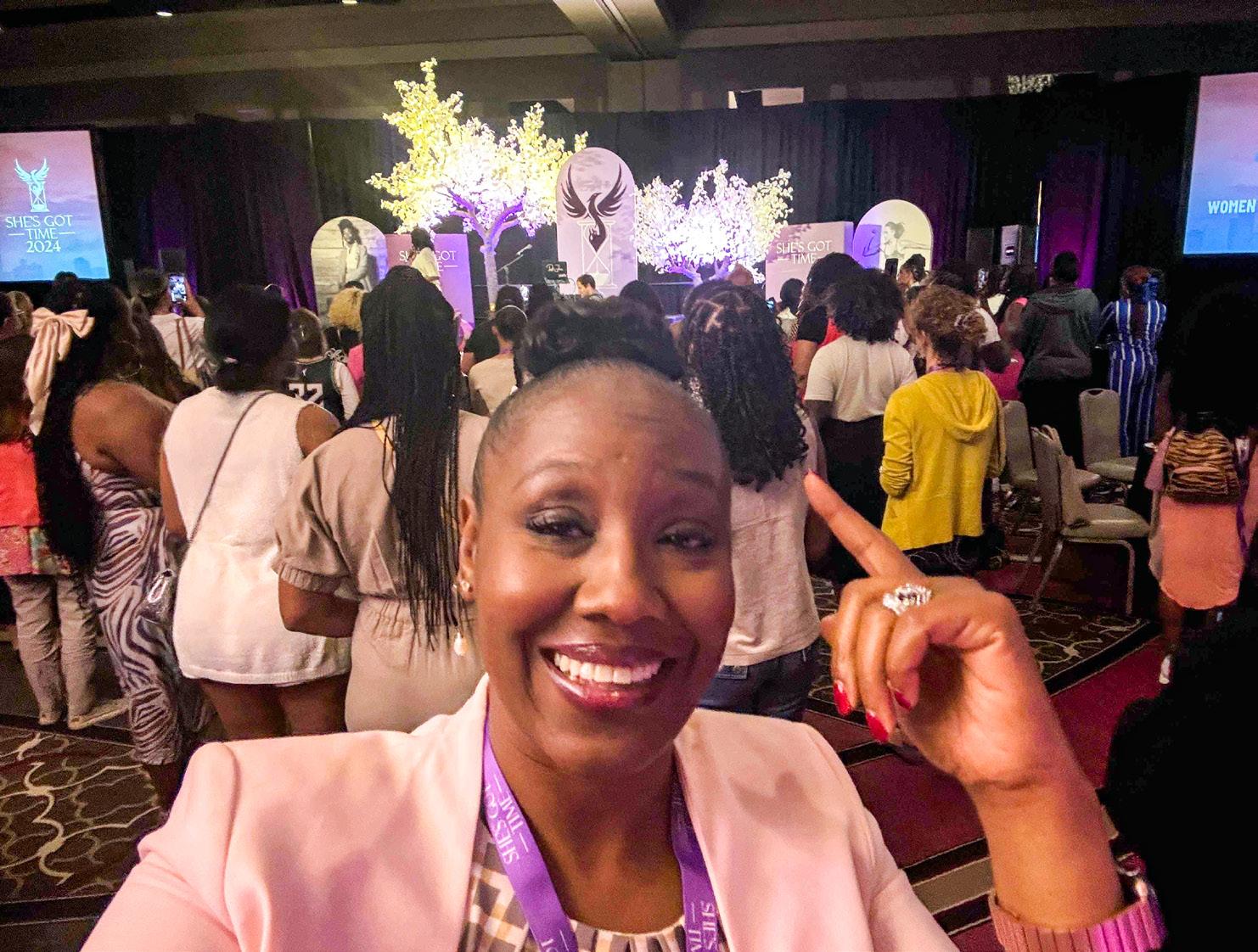
Virgin Islands—and increase its presence in college sports.
“When I took over full-time in June 2022, we were towards the end of one
strategic plan, and part of that plan was a conversation around identity for the conference,” Barnes said. “How are we now in the marketplace able to compete with these other HBCU conferences (there are two conferences in NCAA Division I and two in NCAA Division II) that are in the collegiate space?”
Barnes sought to bring the conference a more visible identity. The presidents of the member institutions approved having a name change.
“We wanted a name representative of who we are and that would allow us to continue expansion,” said Barnes. There were foc1us groups with student-athletes, coaches, athletic directors and other key constituents and the answer became clear.
This spring, the Gulf Coast Athletic Conference officially became the HBCU Athletic Conference with the tagline “Where Winners Thrive.”
“We feel like it’s bold; it clearly identifies who we are,” Barnes said. Over the next year, HBCUAC TV will be developing through the digital platform/streaming partner HBCU+.
“This year we’re going to be focused on developing key strategic partnerships,” said Barnes. “We’ll continue to build and grow this conference.”
Newark native Shakur Stevenson (left) defended his WBC lightweight world championship in his hometown on Saturday at the Prudential Center with a unanimous decision over Artem Harutyunyan. (Mikey Williams/Top Rank photo)
HBCU Athletic Conference commissioner Dr. Kiki Baker Barnes at the She’s Got Time Women in Sports Summit held in New Orleans last week. (Photo courtesy of Kiki Baker Barnes)
The Nets set a plan for sustainable winning after trading Bridges
By DERREL JOHNSON Special to the Am News
This past weekend, the Brooklyn Nets officially announced the completion of the franchise’s first trade with the New York Knicks since 1983 that landed them five first round picks. At the core of the transaction, the Nets dealt forward Mikal Bridges to the Knicks in exchange for New York’s first round draft picks in 2025, 2027, 2029 and 2031, Milwaukee’s first round draft pick in 2025 which the Knicks owned (protected one through four) and a first round pick swap in 2028.
The Nets also gave up to the Knicks forward Keita Bates-Diop, a 2026 second round draft pick, and the draft rights to guard Juan Pablo Vaulet. The Knicks included forwards Bojan Bogdanović and Mamadi Diakite, and guard Shake Milton, in addition to the Nets’ own second round draft pick in 2025 that New York had possessed.
The Nets added to their stockpile of capital near the end of last month by reacquiring their 2025 pick first rounder (originally a pick swap) and 2026 first round pick, both traded to the Houston Rockets along with other assets in January 2021 for James Harden, by handing the Rockets a 2027 first round pick gained from the Phoenix Suns in the February 2023 Kevin Durant deal. Now they begin

anew with first year head coach Jordi Fernandez shaping a young squad.
Speaking with the media on Monday at the HSS Training Center located in Industry City in Brooklyn, Nets general manager Sean Marks discussed the franchise’s thought process in deciding to trade Bridges to the Knicks.
“It’s a difficult decision because Mikal
was a focal point of this organization for the last year since we did the (Durant) trade,” said Marks. “Not an easy decision, but at the same time when you have an offer like we did from New York, I think that sets us up on a very, very clear direction and pathway to continue to build this team with sustainable success, and that’s the ultimate goal here.”
Marks also addressed the re-signing of rising 25-year-old center Nic Claxton to a four-year, $100 million contract. I give Nic a heck of a lot of credit for seeing the next steps he’s taken year by year with his game,” complimented Marks. “I think he’s still scratching the surface here and I just love his overall approach to him wanting more and more and more development.”
Howard women’s basketball begins partnership emphasizing Black women’s health
By LOIS ELFMAN
Special to the AmNews
Howard University women’s basketball recently announced a multi-year partnership with Black Girl Vitamins, a wellness brand dedicated to addressing the unique health needs of Black women. The partnership includes some direct monetary sponsorship for the players and essential vitamins to the players and coaching staff.
“It’s a testament to the commitment to ourselves as Black women,” said Bison head coach Ty Grace. “We’re taking steps toward health being a priority, and this partnership is a way to do that. … Breast health awareness is something we definitely will continue to talk about. Also, regular self-care and mental health is talked about, but I don’t think enough, especially in the Black community. That’s something we feel we need to address in this upcoming season.”
There will be off- and on-campus events to promote the partnership. All this year, the team is celebrating 50 years of women’s basketball at Howard. There will be a gala this fall, which Black Girl Vitamins is sponsoring.
The Black Girl Vitamins partnership will
help players further build their brands and learn more about the commercial opportunities for collegiate athletes utilizing name, image and likeness (NIL). “[It’s exciting] especially when you can partner with companies that believe in what you believe in and that reflect what you look like, how you talk, and all those things,” said Grace. “This kind of starts that for them. I’m glad to see that, and all of them are very excited.”
Grace is currently on the road looking at possible recruits as they play in AAU tournaments. She is thankful for the talented young players interested in attending Howard, the prestigious HBCU in Washington, D.C. Returning Bison players are on campus for the second summer school session. After that concludes, the players will have a couple of weeks at home before returning to Howard for the fall semester.
Grace is looking forward to watching the upcoming Olympic Games, especially basketball and track & field. “I’m excited for these two super teams in men’s and women’s basketball,” she said. “I know the players are super excited to watch the Olympics, especially the basketball portion. … We’ve had three WNBA teams come through Howard—the Los Angeles Sparks, the Seattle Storm and the Washington Mystics—so they’ve met a lot of the players.”

Nets forward Noah Clowney will headline the team’s roster at the NBA Summer League in Las Vegas. (AP Photo/Adam Hunger)
Howard University women’s head basketball coach Ty Grace is excited to see her team advocate for Black women’s health and wellness. (David Sierra/Howard Athletics photo)
Sports
Burned by the Fever, the Liberty’s grip loosens on the WNBA’s best record
By LOIS ELFMAN
Special to the AmNews
The New York Liberty are arguably the best team in the WNBA. However, when they took on the Connecticut Sun yesterday on the road in an 11:00 a.m. start at 17-4, they began the game no longer in sole possession of the best record as the Sun were also 17-4.
A loss to the Indiana Fever last Saturday was the reason.
Playing before a sellout crowd of 17,274 at Gainbridge Fieldhouse in Indianapolis, the Liberty fell to the Fever 83–78. It was a preventable and disconcerting defeat. The Liberty went into the game with the WNBA’s best record at 17-3 facing a team that has the last two No. 1 overall draft picks in center Aliyah Boston (2023) and point guard Caitlin Clark (2024), but is trying to establish itself as a valid playoff contender.
Furthermore, the Liberty had owned the Fever, beating them nine straight times before Saturday’s late game collapse, giving them
a huge confidence boost. Led by Clark’s 19 points, 13 assists and 12 rebounds, the firstever triple-double for a WNBA rookie, the Fever outscored the Liberty 28-16 in the fourth quarter. Boston was a force as well, scoring 18 points and grabbing eight rebounds.
The Liberty opened the final period up 62-55, but their offense stalled midway through and they scored just seven points in the last six minutes and five seconds of the 10 minute quarter. Liberty point guard Sabrina Ionescu was the game’s high scorer with 22 points.
“We’ve beaten them three times this year already,” said Ionescu. “We knew they were going to come into this game really hungry, and it’s tough to beat a team four times. It’s just tough in our league, especially with how every team has grown and especially this young team.
“You’ve been able to see how much they’ve grown just throughout this first half of the season,” Ionescu continued. “So, I don’t think it was necessarily us not playing our style of basketball. It was understanding that we had
to come in with a sense of urgency knowing it’s not going to be as easy as it was in the first couple of games that we were able to go against them because they’ve just grown.”
Liberty head coach Sandy Brondello amplified Ionescu’s assessment.
“It’s a team that’s gotten better and better with every game they’ve played,” she said. “I thought our second quarter was great. Our third quarter was great. We made some, but we missed a lot of shots. We had some turnovers. They executed better than us down the stretch. Anyone can beat anyone in this league.”
Indiana tipped off at home against the Washington Mystics yesterday afternoon still below .500 at 9-13 but were the No. 7 seed in the 12-team league in which the top eight seeds make the playoffs. The regular season doesn’t conclude until the third week of September, with a month-long league break beginning next week due to the Olympics, and the Fever has 17 games left. But they are trending upward after a 1-8 start.
The Liberty has three games left before the

July 20 All-Star Game and then the Olympic break. First up is the Chicago Sky tonight at Barclays Center, then on Saturday they go at it again in Chicago, and next Tuesday in Brooklyn the Liberty host the Sun.
Caitlin Clark and Angel Reese become weapons in the culture war
By JAIME C. HARRIS
AmNews Sports Editor
The battle between good and evil. Nationalism versus wokeness. Demonization contrasted with diversity, equity and inclusion.
Before luminous WNBA rookies Caitlin Clark and Angel Reese entered the professional ranks this past April when they were drafted with the No. 1 and No. 7 overall picks by the Indiana Fever and Chicago Sky respectively, they were weaponized by competing factions engaged in a bitter and pernicious culture war being raged in this country.
The ideological deployment of Clark and Reese, neither of whom was a willing armament, began when Clark was rewriting collegiate records books playing for the University of Iowa, ultimately setting a new NCAA Division I scoring record for women and men with 3,951 points. During her celebrated journey, Clark developed a massive following and fan base and became a ubiquitous national figure.
Reese, who was well-known among women’s basketball enthusiasts since her days as a high school All-American, emerged as one of the best players in the college ranks leading LSU to the 2023 NCAA championship, culminating with a 102-85 win over Clark and the Hawkeyes in the title game.
The concurrent perception and reality of the duality between Clark and Reese is stark, amplified by culture wars combatants. The
rookies Caitlin
of the Indiana Fever and Angel Reese of the Chicago Sky have proven to be budding stars as the league heads into a monthlong break next week for the Olympics. (AP photos/Darron Cummings/ Charles Rex Arbogast)

6’0” Clark, white, 22-years-old, born and raised in hardworking Des Moines, Iowa, and hardworking Middle America. Wholesome, confident but modest, non-threatening to deeply rooted societal norms. An immaculate role model for young girls. Reese, 6’3”, also 22, Black. Reared in Baltimore, long viewed as one of the most violent cities in the country. Brash, unapologetic, antagonizing. A symbol of the self-promoting, self-indulgent modern day athlete that assaults the conservative values and sensibilities of Americans that proudly fly the Stars and Stripes in front of their homes, schools and businesses. There are truths and falsehoods embedded

in the profiles and characterizations of both women. Their commonalities may be even more pronounced but conveniently omitted from countless narratives that permeate the widespread sports and social discussions and commentary centering around them.
Clark is a sublime player but not a uniquely singular talent on the court. There have been and are better players in the sport. This is an objective assessment in my now four decades of covering women’s basketball. However, her significance to the dramatic growth of the popularity of the women’s game is unprecedented. She is a force multiplier.
But the most innocuous criticisms of
Clark’s performance or abilities are often duplicitously characterized as reverse racism by agenda-driven voices. Note, Diana Taurasi and Breanna Stewart, two of the greatest players in women’s basketball history, are white and beloved by their peers. The premise that Black players have animosity towards Clark because she is white is nonsensical.
The more overt radical right wing elements explicitly argue that her fellow WNBA players, many who classify themselves as non-heterosexual, are jealous of Clark’s exceeding fame and resentful of her traditional lifestyle. They point to the physical manner in which she is handled on the court by the opposition despite the high physicality of the WNBA in general.
Meanwhile the same commentators paint Reese as the anti-Clark, furiously in the public square pitting one against the other. Clark and Reese have not taken the bait. They have met expectations as the two best rookies in the league and like Larry Bird and Magic Johnson many years before them, forged a healthy rivalry that is good for the game.

Liberty forward
Betnijah LaneyHamilton poured in 20 points in Saturday’s 83-78 road loss to the Indiana Fever.
(Brandon Todd/New York Liberty photo)
WNBA
Clark
